Self-guided walking tour of Paris: The French Revolution hotspots
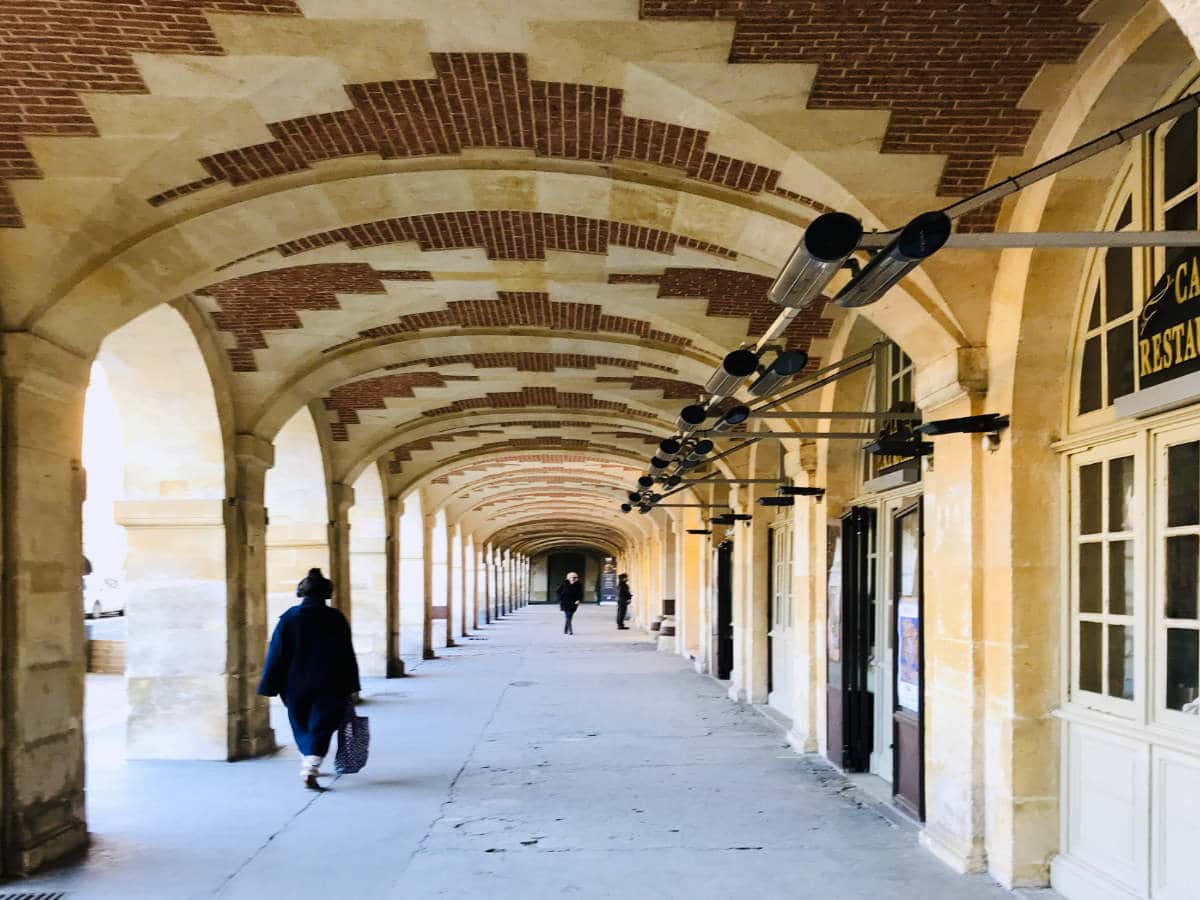
- Post category: Paris & Île-de-France
- Post author: Nassie Angadi
If there ever was a city made for a walking tour, it is Paris. With a relatively small center connected by wide boulevards, you can walk from Place de la Bastille in the east to the Eiffel Tower in the west, in less than two hours. And that is with plenty of stops along along the way for a bit of sightseeing.
And if you love history and are interested in doing a themed walking tour, Paris is ideal. Exploring the places where the French Revolution took place, you will quickly realize that many of the monuments of significance are well within walking distance of each other in the center of Paris.
The history is palpable as you explore the streets of Paris and its world-class art museums. Paris is made for wandering, with its wide boulevards that let you amble and have ample opportunities to take in the sights, sounds, and smells that make it one of the most beautiful cities in the world. And it is a great way to get a feel for the city.
Now I should mention, when I say the French Revolution, I mean the 1789 French Revolution, as there were a couple of revolutions afterwards. But this is the one everyone remembers, where Marie-Antoinette got guillotined.
So let’s get to the top places and monuments on the 1789 Revolution walking tour, shall we? Allons-y!

1. Place de la Bastille
Located: at Metro Bastille in the 11th arrondissement of Paris
In the east end of Paris, is the Place de la bastille where once stood the ancient fortress prison called Bastille Saint-Antoine dating back to the 14th century.
Around the time of the Revolution, the former royal fort that had been converted into a prison. An imposing building made of stone, it was surrounded by guards armed to the hilt.
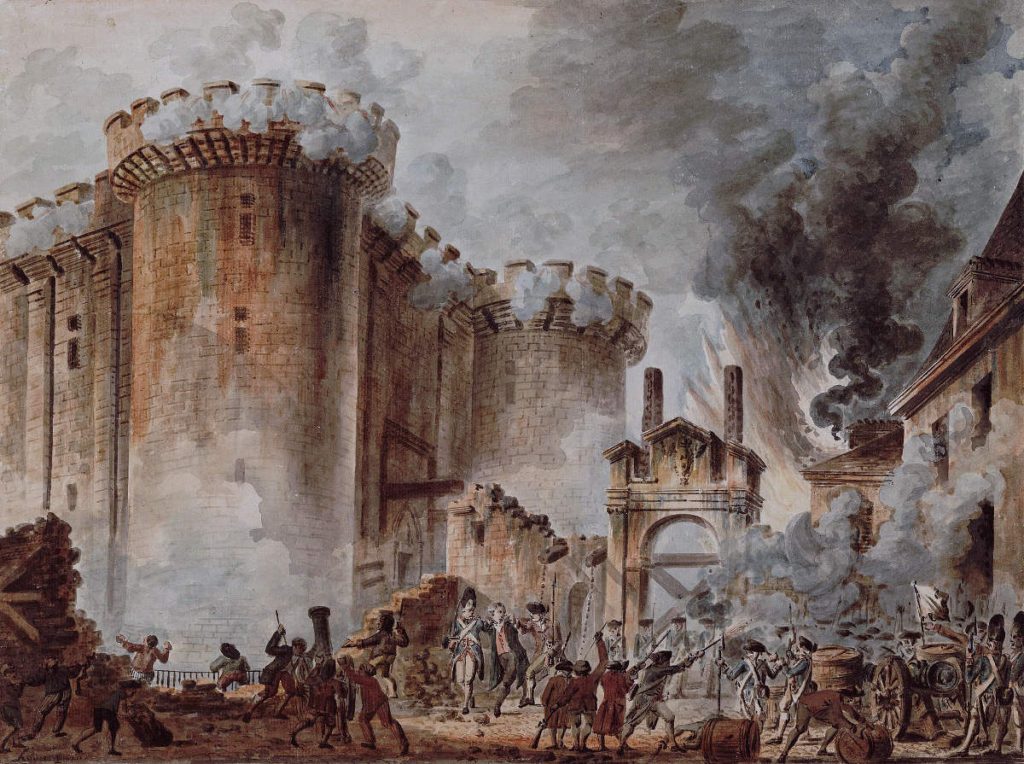
In July of 1789 there were only 7 prisoners there, among them the infamous French writer and philosopher Marquis de Sade, who had already been held there for over 10 years. (A good majority of his works were written in prison.)
On July 14, 1789 the revolutionaries stormed into the Bastille, freeing all the prisoners and beheading the prison’s governor and stuck his head on a spike. The revolution had begun.
Anyway, as the French peasants and revolutionaries were preparing to make their demands, they decided they needed weapons. While they were able to get muskets by taking over the Hotel des Invalides in Paris, they also needed gunpowder. As it happened, the Bastille had stockpiles of it.
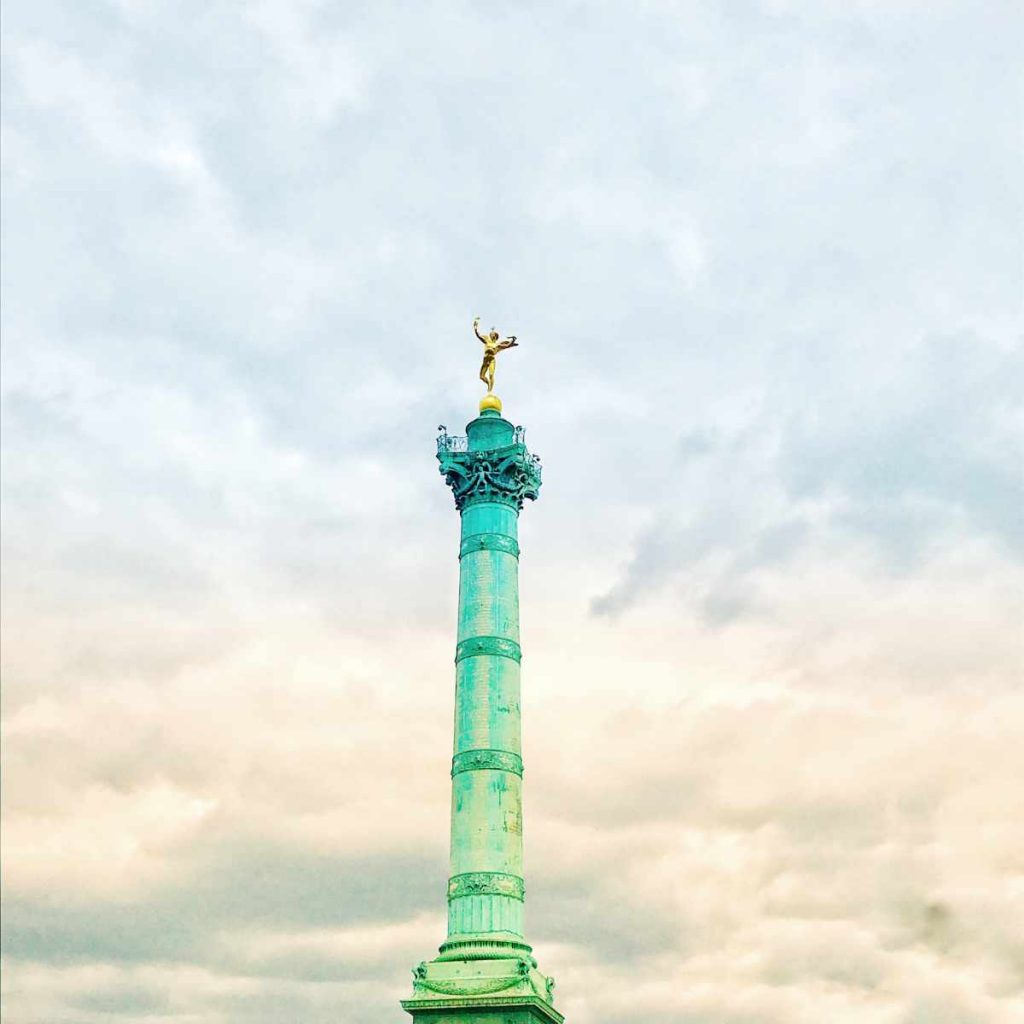
There are no remnants of the fortress there today. The ancient fort soon turned into rubble, and for practical reasons, the prison was demolished. Today, the site of the Bastille is a large circular roundabout and gathering place called the Place de la Bastille .
2. Place des Vosges
Located: off of Rue Saint Antoine in the 3rd – 4th arrondissement .
Leaving Place de la Bastille, head west on Rue Saint Antoine for about 7 minutes and turn right onto Rue de Birague till you arrive at the magnificent Place des Vosges.
In order to understand the French Revolution, it is important to understand what the French were protesting against.
Originally known as Place Royale, Place des Vosges is one of the most beautiful spots in the Marais , and indeed, in Paris. It is where the rich and famous used to live, and in fact still do.
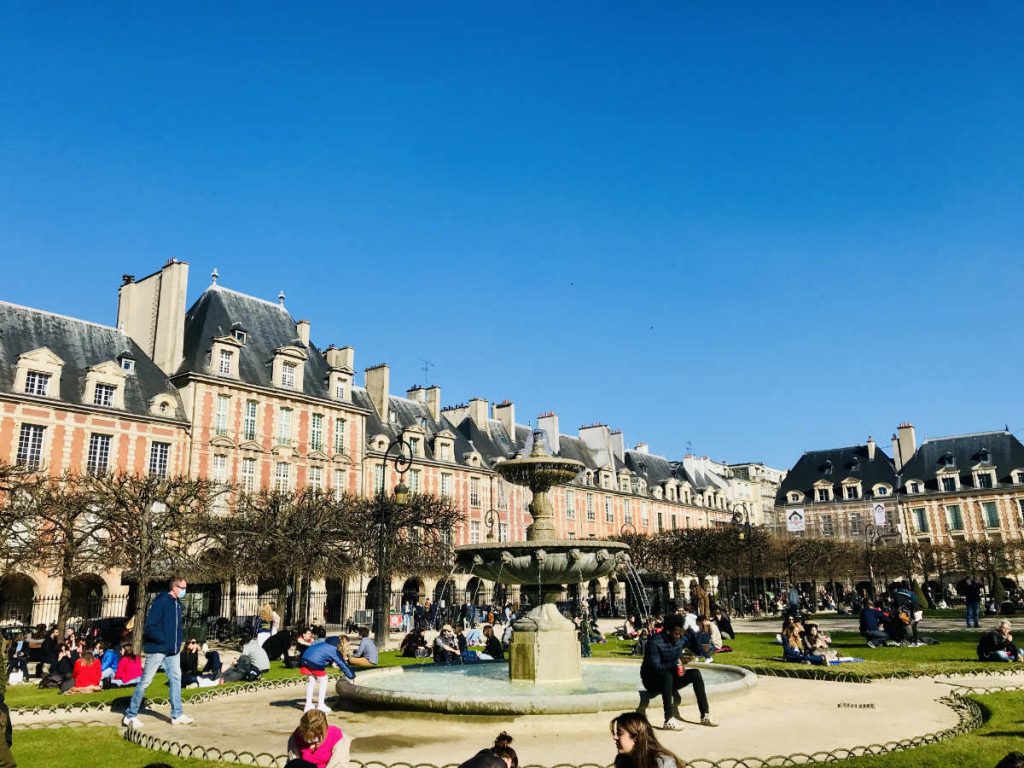
The last French queen to live was Anne of Austria in the 1600s, before Marie-Antoinette’s time. (She preferred Versailles and Fontainebleau .) However, this sumptuous building in the heart of Paris was emblematic of the divide between the rich and the poor.
Paris had not yet been revamped by Baron Haussman, so at the time, this area was surrounded by a medieval city , with buildings very close together and poor sanitation. At the time, there were no wide boulevards and Hausmannian architecture . Place des Vosges was a luxurious building where the nobility lived; the nobles who didn’t pay taxes like the commoners did .
Before the Revolution, even access to the gardens was forbidden to poorly dressed people except on one day of the year, August 25, the feast of Saint Louis .
You can imagine that this was one of the first places taken over by “the people” after the Revolution. During the 1789 Revolution, it was successively renamed several times:
- place des Fédérés – Federate square
- place du Parc-d’Artillerie – Artillery park square
- place de la Fabrication-des-Armes – Maker of weapons squre
- place de l’Indivisibilité – Indivisible square
In 1800, it was renamed “ Place des Vosges ” in honor of the Vosges regional department , which was the first to have paid tax under the French Revolution and, send volunteers to defend the “ patrie ” (country) in danger.
You can read more about the Place des Vosges here. If you like, you can take a guided walking tour through the area to hear about the Marais’s famous residents and how this area has changed over time.
3. Conciergerie on Ile de la Cité
Located: 2 Bd du Palais, 75001
Cross Pont Notre dame (bridge) with its many carvings of kings and saints, and visit the Conciergerie on Ile de la Cité .
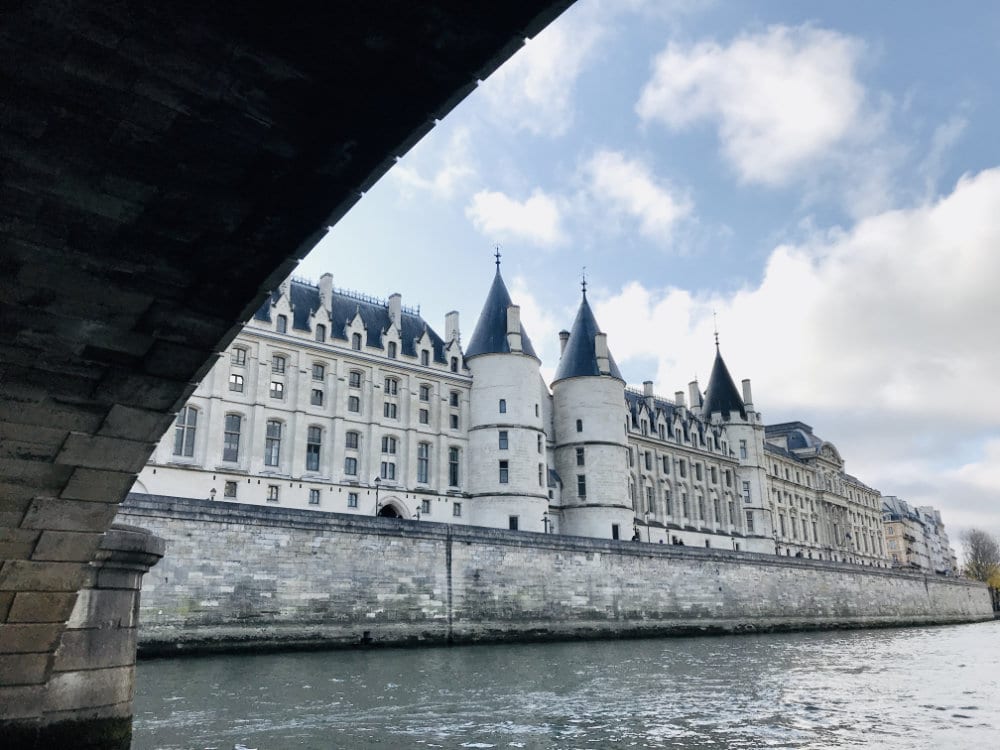
The prison at the Conciergerie is where Marie-Antoinette was held in prison, put on trial, and found guilty. After a two-day show trial, she was found guilty on all charges and condemned to death.
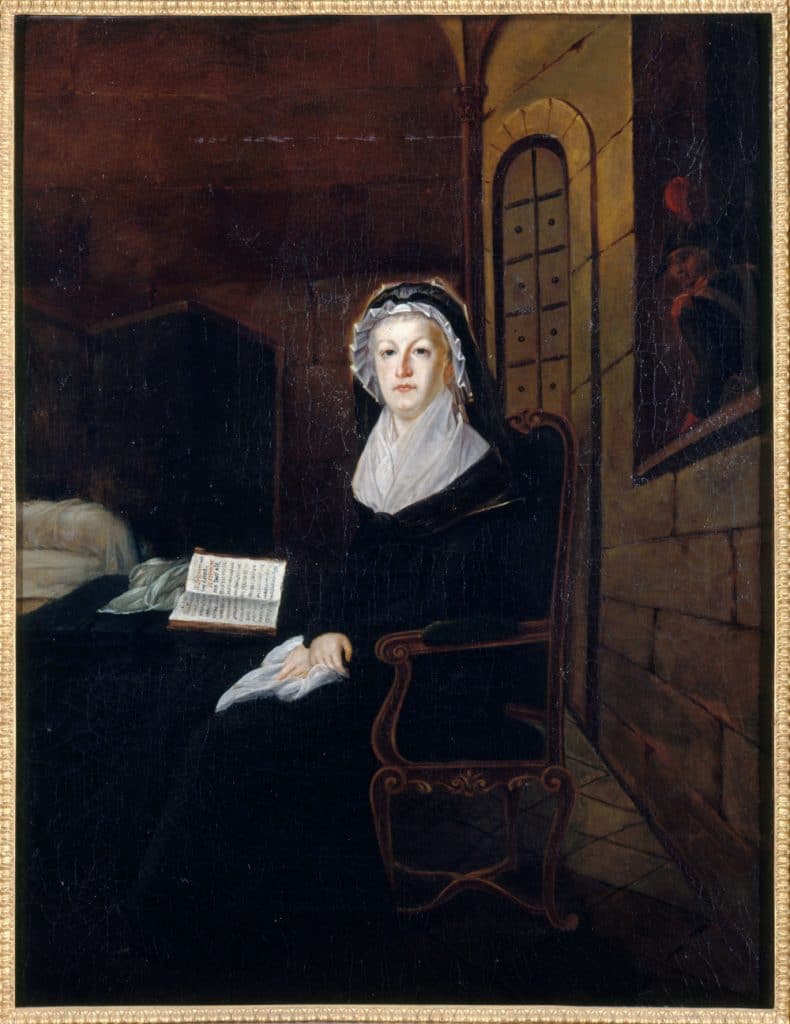
The tiny prison cells of the Conciegerie were a far cry from the royal palaces the Queen was used to. You can book a tour of the Conciegerie here.
4. Jardin des Tuileries
Located: 200 Rue de Rivoli in the 1st arrondissement
After visiting the Conciergerie, head back to the Right bank and go west till you reach the Jardin des Tuileries.
This was the site of a royal palace, the Palais des Tuileries , and it is in this palace that Marie-Antoinette, Louis XVI and their children were brought to after being forced to leave Versailles .
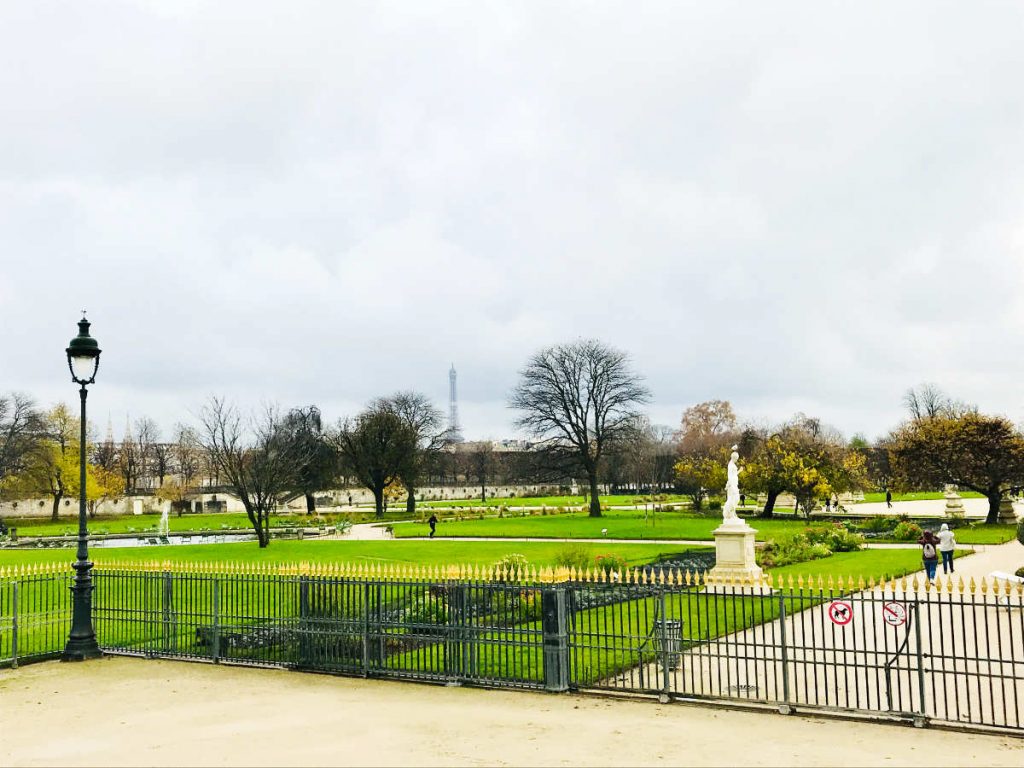
French Queen Catherine de Medici started building the Palais des Tuileries two centuries earlier in 1564, a stone’s throw away from the Palais du Louvre . Later monarchs would go on to add wings and attach the Tuileries and the Louvre .
French Royals would usually stay at the Tuileries Palace , while their ministers and fideles would stay at the Louvre. This remained while Marie-Antoinette and her family were confined to the Tuileries, with their loyal friends staying at the Louvre.
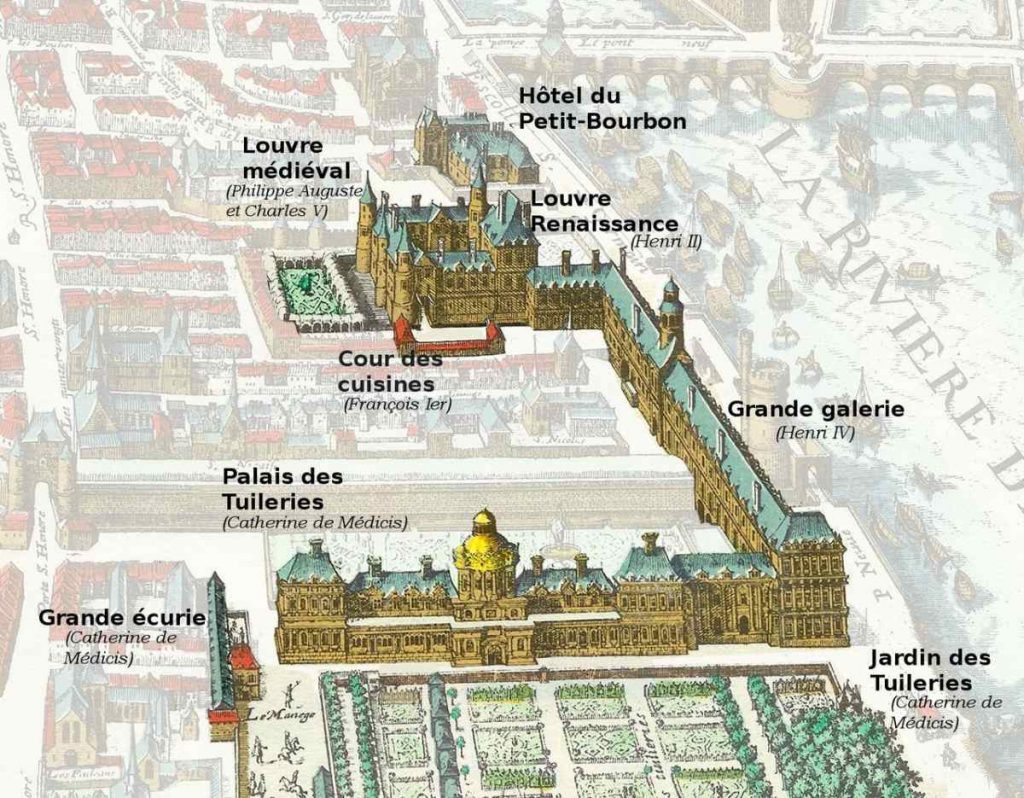
Slowly, as the guillotine started to fall, many of their friends escaped France, while they still could, leaving the King and Queen isolated and imprisoned.
Even after the fall of the monarchy, the Tuileries Palace remained associated with the French monarchs, and in 1871 it was burnt down during the Paris Commune protests. The Louvre palace managed to survive the flames , but only just.
5. Eat some cake at Angelina’s
Located: 226 Rue de Rivoli, 75001
After all that walking, we might need some refreshments reflect on the historical events to come.
Take a break at Angelina’s by eating some cake and tea at the historic tearoom, Angelina’s, the epitome of “gourmet pleasures”.

It is just steps away from the Place de la Concorde, where Marie-Antoinette, her family, and many nobles of that time met their fate.
6. Place de la Concorde
Located: the center of Paris
After your refreshments, head over to Place de la Concorde, which is where Marie-Antoinette and King Louis XVI were guillotined. A large Egyptian obelsik and fountain marks the spot where they lost their lives.
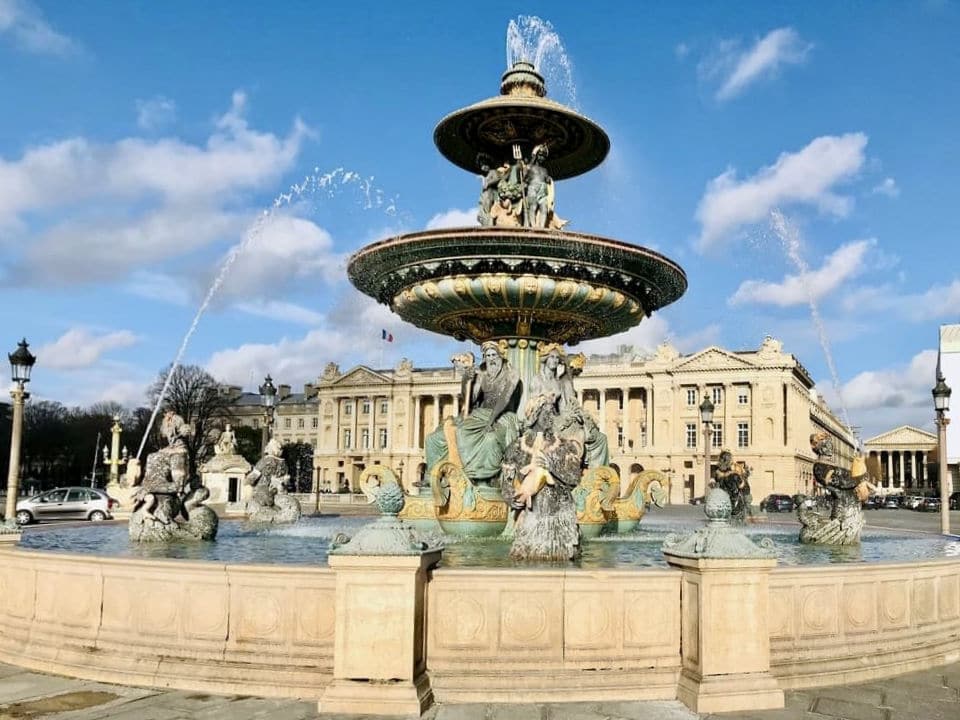
Her last words are recorded as, “ Pardonnez-moi, monsieur. Je ne l’ai pas fait exprès ” or “Pardon me, sir, I did not do it on purpose”, after accidentally stepping on her executioner’s shoe.
After the queen’s head fell, it was shown to the crowd, who responded by crying: “ Vive la République! ”
In a symbolic and yet practical gesture, the bridge in front of the Place de la Concorde and the Assemblée Nationale on the other side of the Reine, was built using some of the stones from the castle at Bastille.
The Pont de la Concorde (bridge) is directly off of the Place de la Concorde, if you would like to have a look.
7. La Chapelle Expiatoire
Located at 29 Rue Pasquier, 75008
About 10 minute walk away in the 8th arrondissement is the Expiatory chapel. It was built on top of the cemetery where King Louis XVI and Queen Marie Antoinette were buried after their execution in 1793.
Their bodies were later moved to Saint-Denis Basilica outside of Paris, where other royal family members are buried, but the Expiatory chapel was built on this spot in the 8th arrondissement to commemorate all the lives lost in the Revolution.
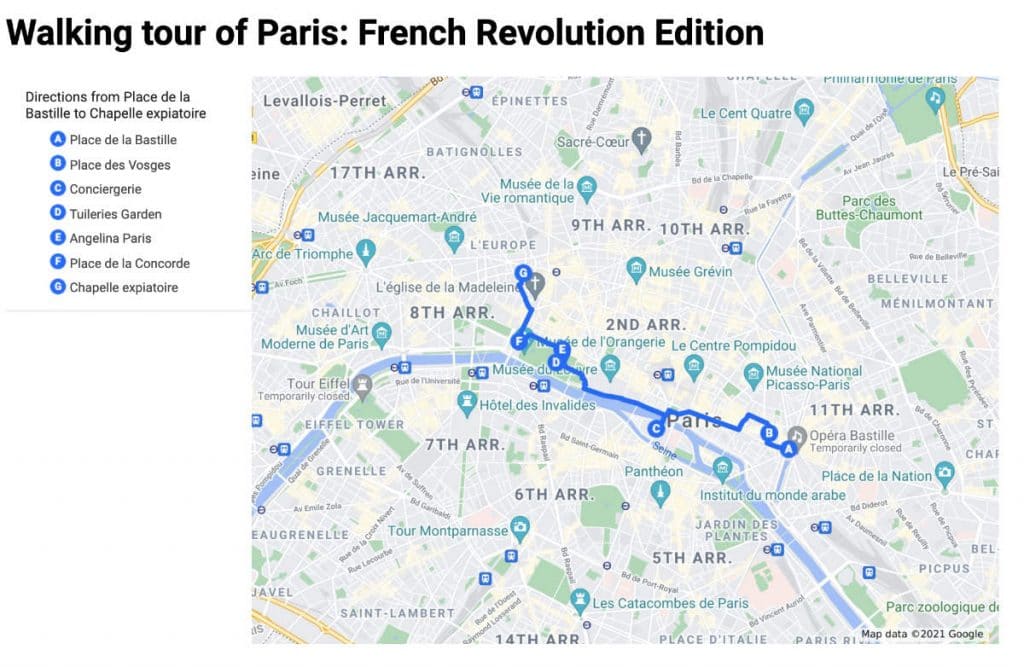
And that is the walking tour of Paris, French Revolution edition! If you enjoyed that article, you may like reading more about visiting Paris . A bientôt!
You Might Also Like
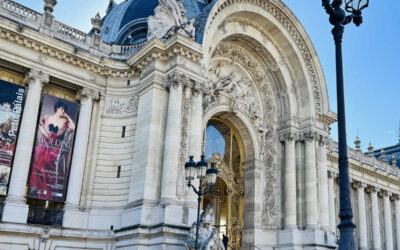
Petit Palais museum: A haven of elegance and art in Paris
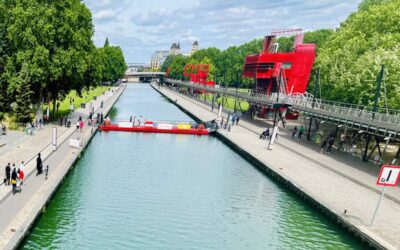
Canal de l’Ourcq & Bassin de la Villette: Where urban life meets waterways
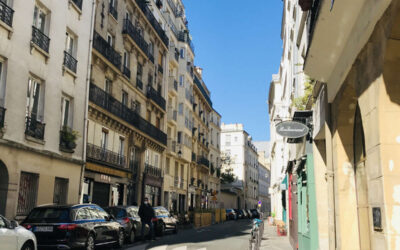
20th arrondissement of Paris: What to see, do, and eat

Museum of Hunting and Nature (Paris): A clash of art and taste
Leave a reply cancel reply.
- Paris & Île-de-France
- Alsace & Lorraine
- Bourgogne-Franche-Comté
- Bretagne & Normandy
- Auvergne Rhône Alpes
- Loire Valley
- Northern France
- Nouvelle Aquitaine
- Provence & French Riviera
- Living in France
- French Parenting
- French Holidays
- French Language
- French Etiquette
- French Music
- Moving to France
- Facts and history
- Appetizers & Starters
- Main dishes
- Side dishes
- Get the Look
- Newsletter archives

Home > French Revolution Tour, Paris (Self-Guided)
French Revolution Tour, Paris (Self-Guided)
This self-guided French Revolution Walking Tour takes you to the most remarkable French Revolution sites in Paris. Learn about Paris during the French Revolution through some interesting French Revolution landmarks at your own pace with this Paris French Revolution Tour.
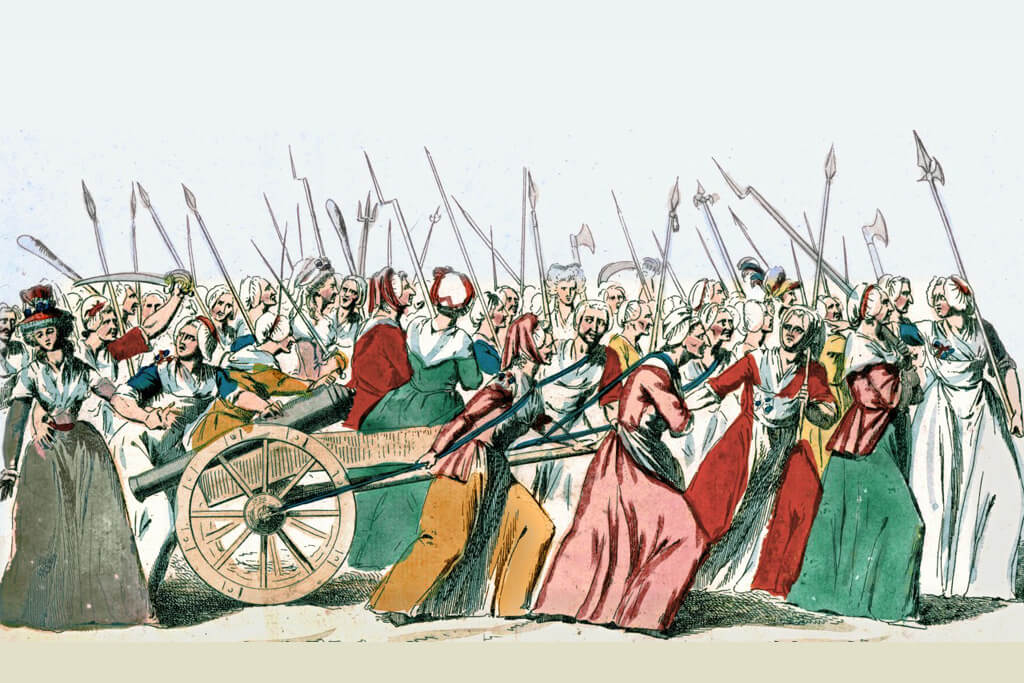
Paris During the French Revolution
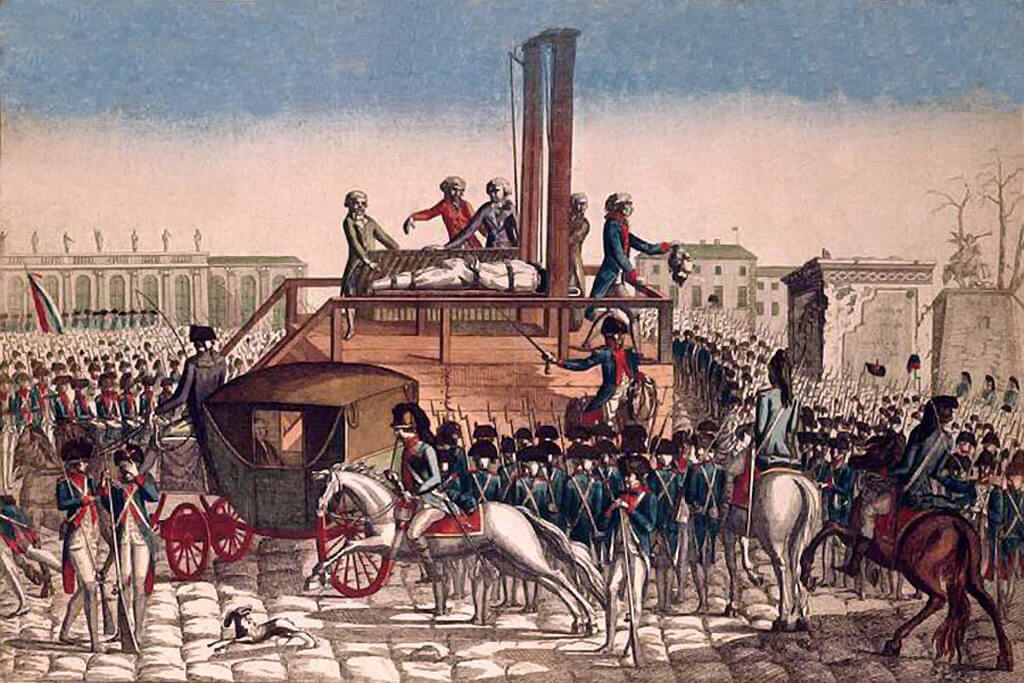
The French Revolution had a huge impact on France’s history. During the French Revolution, the people overthrew the monarchy and took control of the government, changing France’s social and political structure.
The French Revolution also brought new ideas to Europe, including liberty and freedom for the commoner as well as the abolishment of slavery and women’s rights.
The French Revolution lasted ten years, from 1789 to 1799. It began on 14th of July when revolutionaries stormed the prison of the Bastille and ended in 1799 when a general named Napoléon overthrew the revolutionary government and established the French Consulate with himself as a leader.
Although the French Revolution ended with the rise of Napoléon, the revolutionary ideas continued to influence Europe and helped shape many of Europe’s modern-day governments.
Today, curious wanderers still can see some traces of the French Revolution in Paris. Follow this French Revolution walking tour, Paris, to appreciate the major landmarks during this tumultuous period in French history!
French Revolution Walking Tour Map
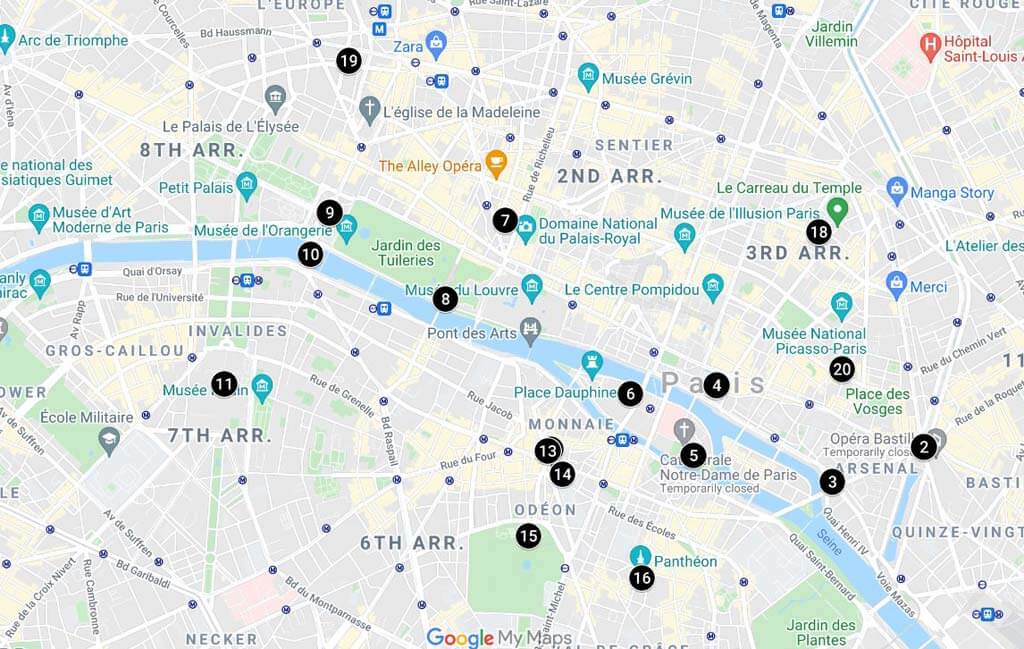
Click here to view this French Revolution walking tour itinerary on Google
1. Start with a Day Trip Paris – Versailles
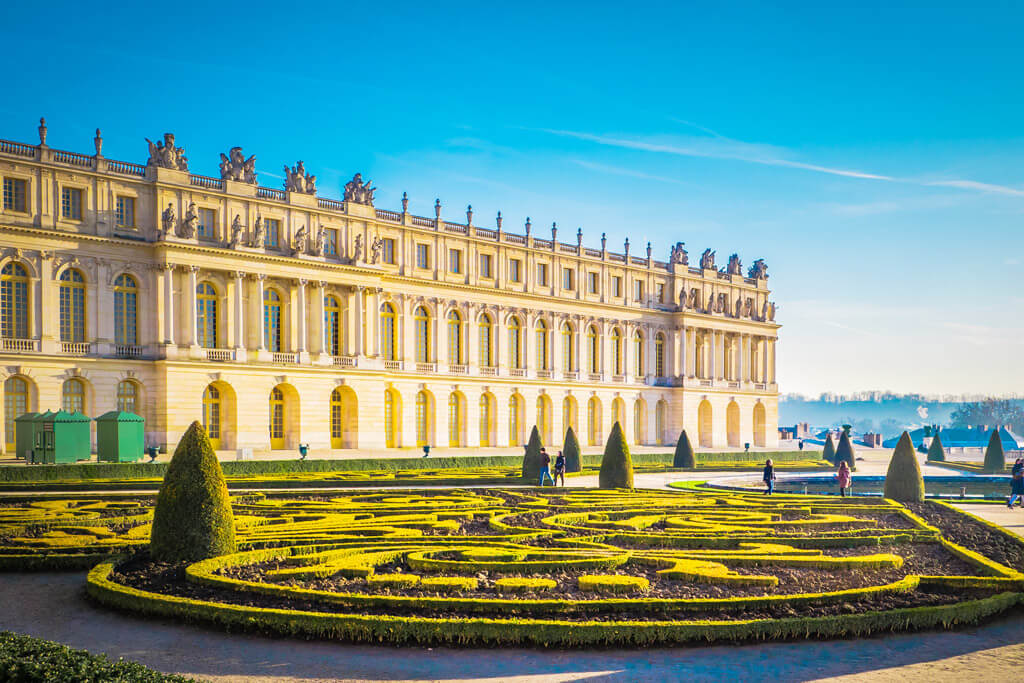
If you have a spare day in the French capital, consider a day trip to Versailles from Paris as a prelude to your Paris French Revolution Tour.
Originally built as a hunting lodge for King Louis XIII, Versailles became the official residence of the French Royal Family in 1682 when King Louis XIV left the Louvre Palace for the tranquil (and safer) Château de Versailles . That modest lodge was deeply transformed into a magnificent residence home of three kings until the French Revolution in 1789.
At that time, Louis XVI and his wife Marie-Antoinette were the Kings of France. The royal apartments and the famous Hall of Mirrors give an idea of the King and Queen’s sumptuous life while people in Paris were going hungry.
READ MORE: The story behind Let Them Eat Cake , Marie-Antoinette’s famous quote.
On 1 October, a sumptuous feast for 210 guests was held in the Royal Opera House of Versailles. In the tense climate outside the doors, many considered such strident demonstrations the ultimate act of provocation by the monarchy.
On 5 October, a large crowd mainly composed of women marched on the Palace. The mob gathered in the Marble Courtyard and was demanding a royal appearance. King Louis XVI promised to give them bread and to come to Paris. That’s when the King, his family, and a Royal cortege left Versailles; their departure was final.
Versailles Palace is today one of the most beautiful castles near Paris and the best example of French Baroque architecture. When visiting Versailles, don’t miss Versailles Gardens , one of the best French-style gardens in France, beautifully decorated with fountains of all kinds.
TIP: Be guided by an expert guide through the emblematic royal Château with this Palace of Versailles Skip-the-line Guided Tour
French Revolution Tour – Paris Itinerary
2. place de la bastille.
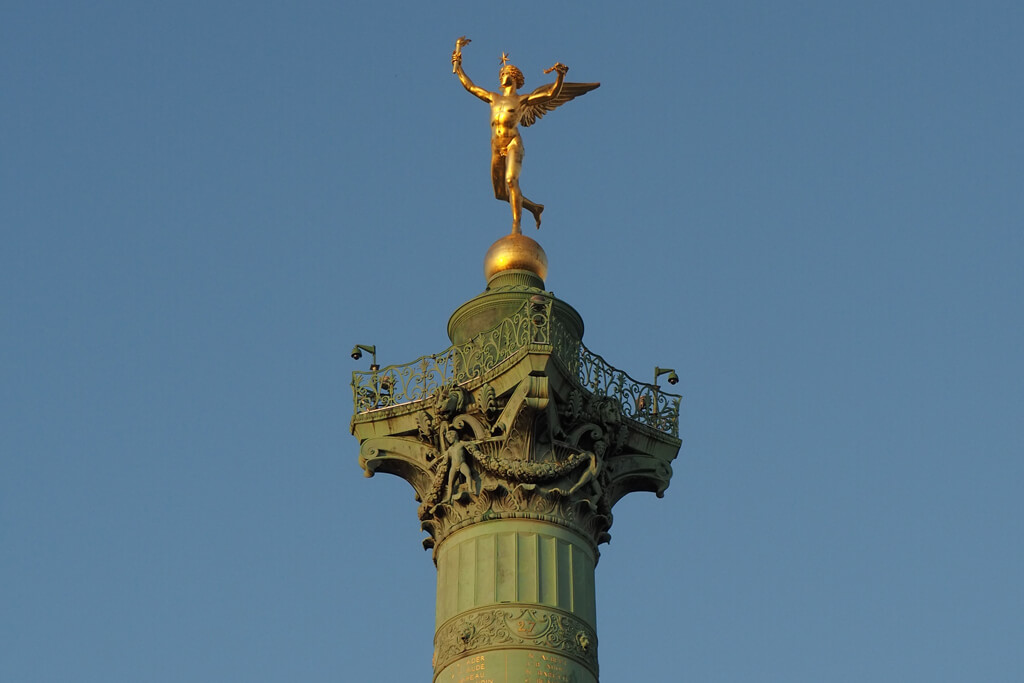
This French Revolution Walking Tour starts at Place de la Bastille (Paris 11), one of the main French Revolution sites in Paris. Current Place de la Bastille was established to commemorate those revolutionary days and to celebrate the victory of democracy over tyranny.
Bastille Square was until the 18th century the location of the infamous fortress turned into a prison. On 14 July 1789, the Bastille Prison was stormed by a crowd of angry and armed people, and the prison governor had to surrender and open the gates. This direct confrontation between civilians and the Old Regime marked the outset of the French Revolution.
The Bastille Prison was demolished that same year, and little has remained of the old building. Special pavement stones and plates on the Boulevard Henri IV and Rue Saint-Antoine mark the original perimeter of the prison fortress. Also, on the facade of #3, you can see the plan of the fortress before it was demolished.
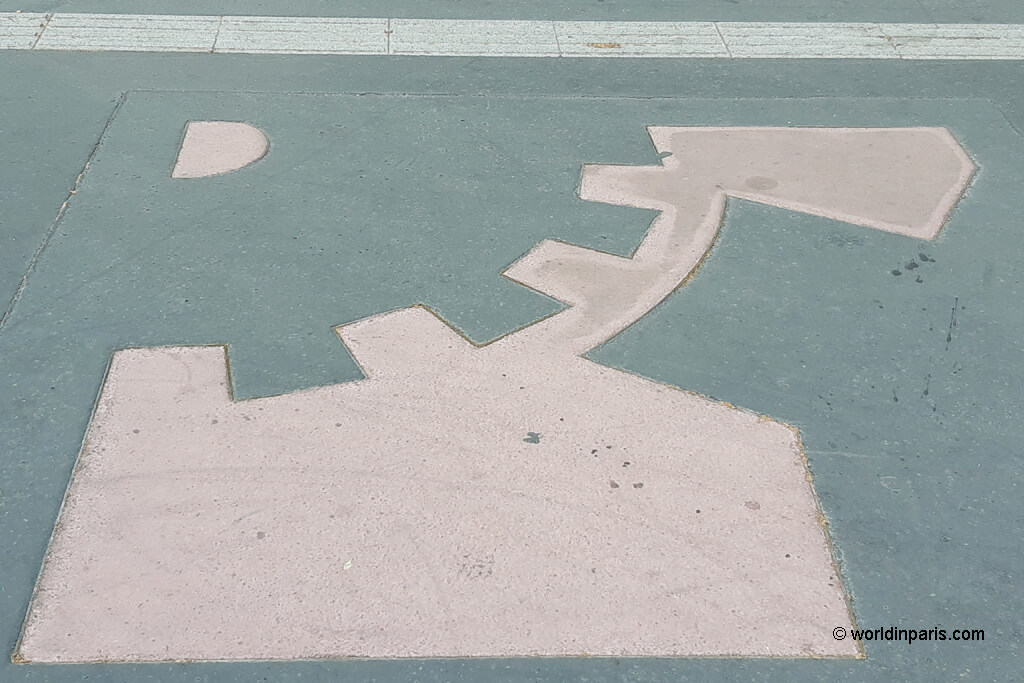
Today Bastille Square is a lively place with many bar-terraces, and the Opéra de la Bastille . The imposing July Column that dominates the square commemorates the revolution of 1830 when King Louis-Philippe replaced King Charles X.
3. Square Henri Galli
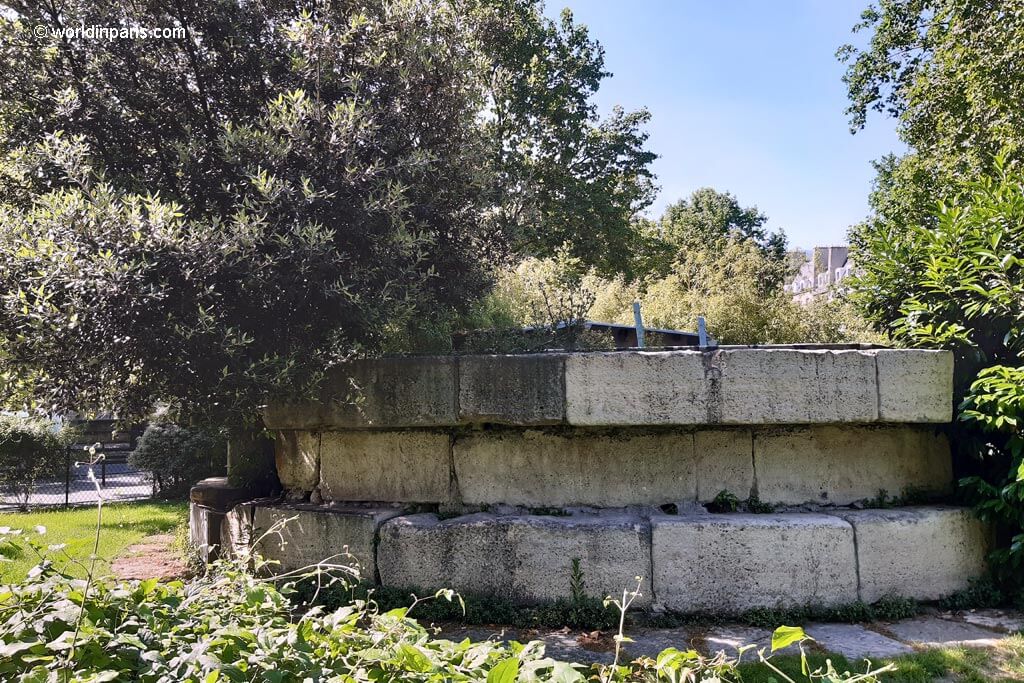
In 1899, during the excavation works for the Parisian metro, a small section of the Bastille Prison was uncovered on platform number 5 of the Bastille metro station.
During these excavations, part of the Liberté Tower was also found. The tower was dismantled and moved to Square Henri Galli , in Paris 4, where you can still see it today.
4. Hôtel de Ville
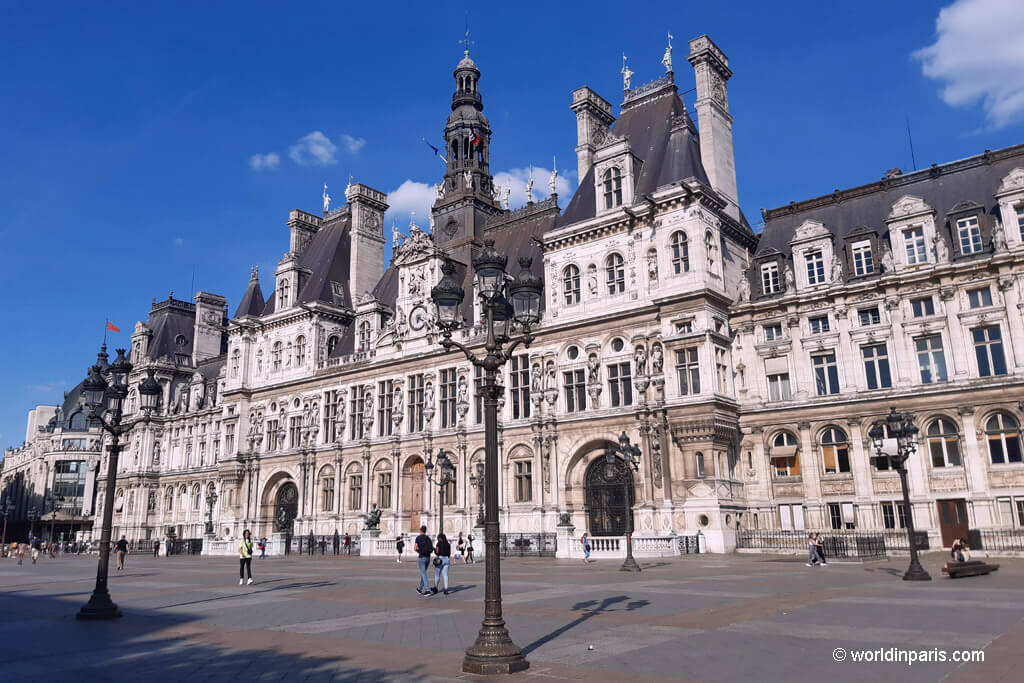
The next stop of this French Revolution Tour is Paris’ City Hall. Hôtel de Ville is the largest City Hall building in Europe and one of the most prominent landmarks in Paris .
Until the 16th century, the sessions of the Paris municipal council were held at the home of the city mayor. It was King François I who ordered to build a dedicated City Hall in Renaissance style.
It was in Hôtel de Ville where the Bastille’s governor was dragged and stabbed to death. Later, his decapitated head was paraded around the square on a pike.
During the revolutionary days, the Hôtel de Ville served as headquarters for the French Revolution, accommodating Robespierre and his supporters. It was here where Robespierre was arrested at the end of this period.
Today, Hôtel de Ville cannot be visited except for two rooms which usually host temporary exhibitions. On the parvis, there’s always something going on like special events, protests, concerts, and also one of the most beautiful Christmas markets in Paris .
5. Notre Dame de Paris

During the French Revolution, Notre Dame suffered sacking, pillaging, and destruction.
Before the Revolution, the west facade of Notre-Dame de Paris was adorned with the 28 Kings of Judea statues, dating back to 1230. Unfortunately, the heads of the original figures were decapitated during the revolutionary days. The mob, thinking they were French Kings, tied ropes around the statues, pulled them down, and guillotined them in the square in front of the Cathedral.
With the rise of the Enlightenment ideals and the dechristianization of the French population, Notre Dame officially became the ‘Temple of Reason’ and then was used as a wine storehouse.
In the early 19th century, things calmed down, and the statues got new heads. Two hundred years later, twenty-one of these heads were discovered on a construction site. Today these original heads are displayed in the Cluny Museum.
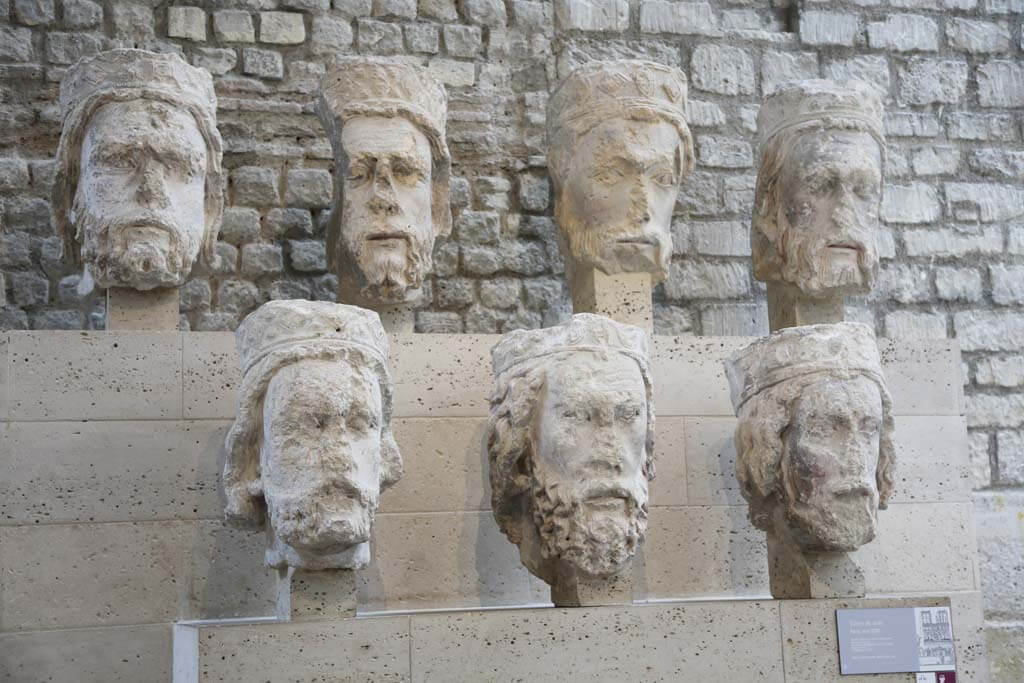
Notre Dame Cathedral is currently under reconstruction works, but you can still admire the West facade with the Kings of Judea and the beautiful rose window with the statue of the Virgin Mary.
6. Conciergerie
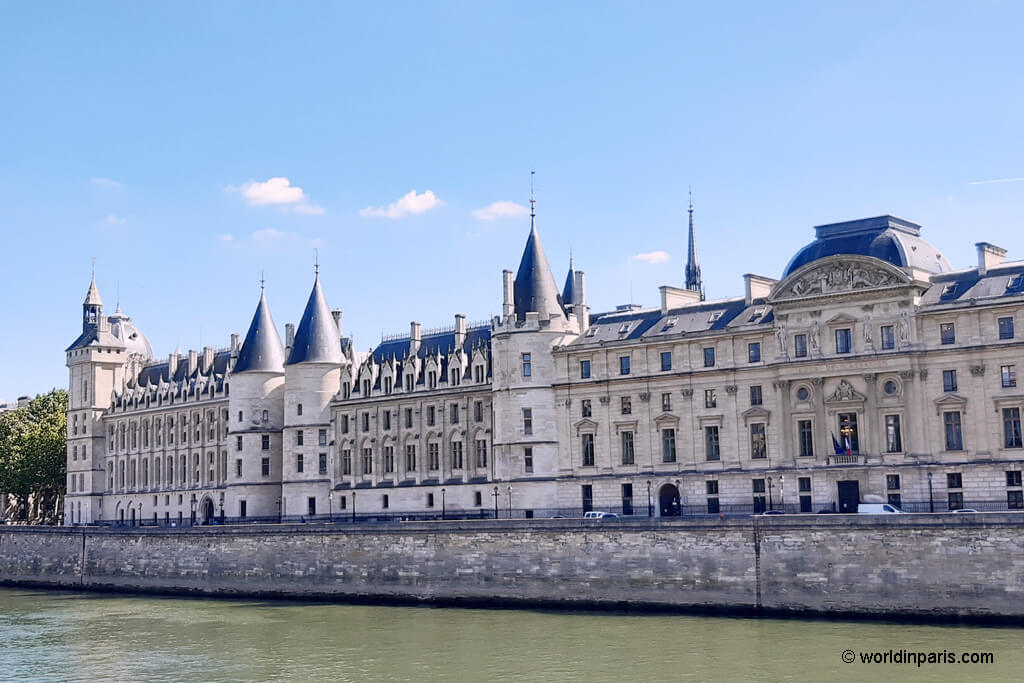
The Conciergerie was the official residence of the French Kings until the end of the 14th century when they settled in the Louvre Palace and Château de Vincennes . Then, the building became part of a complex called Palais de Justice.
During the French Revolution, this 14th-century palace was turned into a prison. More than 2,600 prisoners were tried here, including Queen Marie-Antoinette. From the Conciergerie, she was taken on a cart to the guillotine in nearby Place de la Concorde.
Today, the Conciergerie is a fascinating Gothic building to visit, where you can learn more about the French Revolution. The Salle des Gardes (Guards Room) and the immense Salle des Gens d’Armes (Hall of the soldiers), built under King Philippe Le Bel, are beautiful remains from the days of the medieval palace.
TIP: save money with this combo ticket Conciergerie + Sainte-Chapelle
The palace turned prison also contains fascinating rooms and objects, like the Queen’s 3.3 by 1.8 meters cell and the bell that announced the arrival of her tumbrel in the May Courtyard. You can retrace her final journey by exiting the Conciergerie, crossing the Pont Neuf , and, after a few blocks, turning left onto the Rue Saint-Honoré.
7. Palais Royal
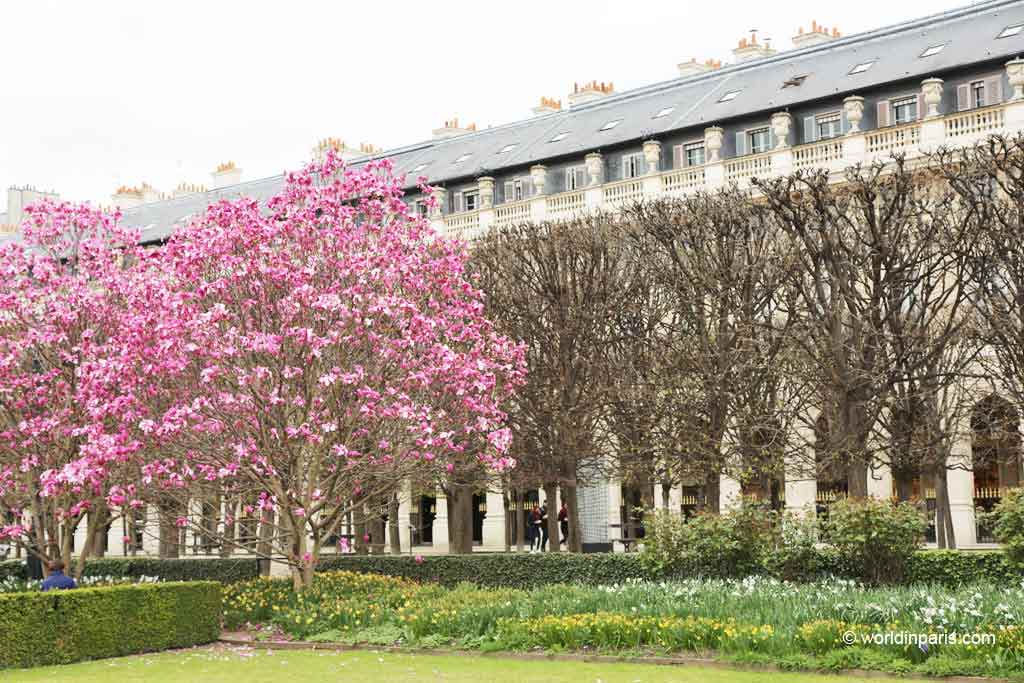
The Palais Royal is one of the most important French Revolution historical sites. The palace was one of the residences of the Royal Family until the Palace of Versailles was built. King Louis XIV spent part of his childhood here.
In 1789 the Palace’s arcades were a popular hangout for radicals. On 12 July 1789, Camille Desmoulins , riled by the sacking of Chief Minister Jacques Necker, gave a speech on a table outside the Café Foy (57-60 Galerie Montpensier) calling the people to uprise. This led to the storming of the Bastille two days later.
Today Palais Royal is an oasis in the hustle and bustle of Paris, a part of the town that really transports you to a different place and time. The courtyard remains almost exactly as it was in 1789, and the garden is a great place to relax.
8. Pavillon Flore – Louvre Palace
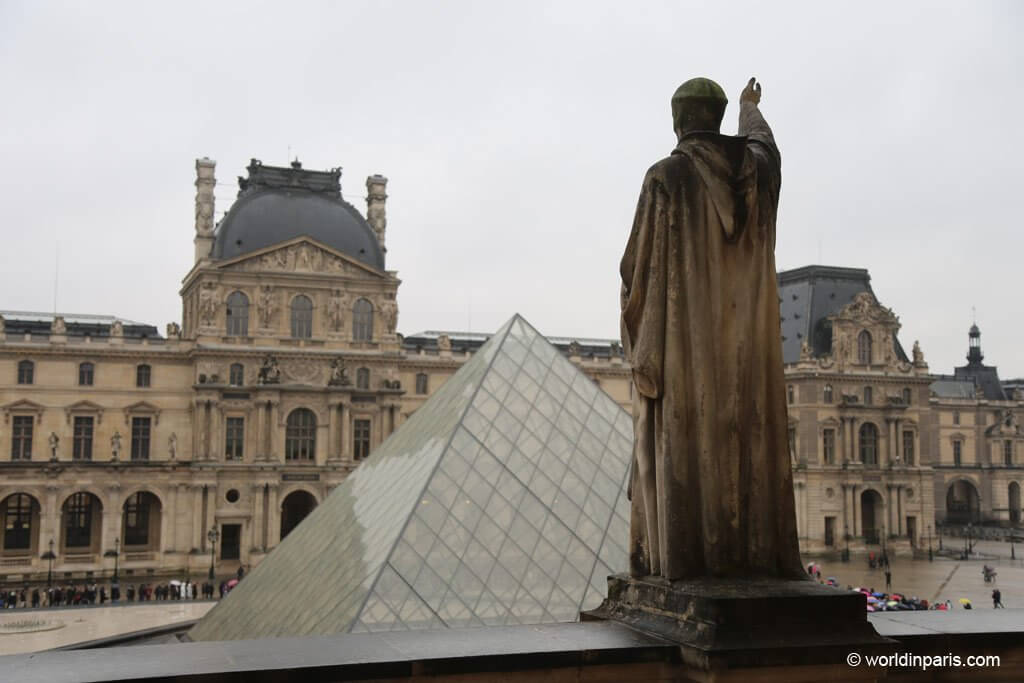
Louvre’s Pavillon de Flore was built to extend the Grande Galerie – which formed the south face of the Louvre Palace – to the Tuileries Palace (today disappeared). During the French Revolution, the Pavillon de Flore was renamed ‘Pavillon de l’Égalité’ and became the meeting point for several Committees of the period.
The most infamous was the Committee of Public Safety , run by the Jacobins under Robespierre. The group of twelve formed France’s de facto executive branch during the Reign of Terror and centralized denunciations, trials, and executions. The Committee of Public Safety was responsible for the deaths of thousands of people, mostly by guillotine.
The Louvre Museum officially opened on 10 August 1793, to mark the first anniversary of the royal couple’s arrest and the abolition of the monarchy a month later. If you have time to visit the Louvre ( buy your Louvre tickets here ), don’t miss the museum’s collection of 18th-century paintings, sculptures, and furniture.
9. Place de la Concorde
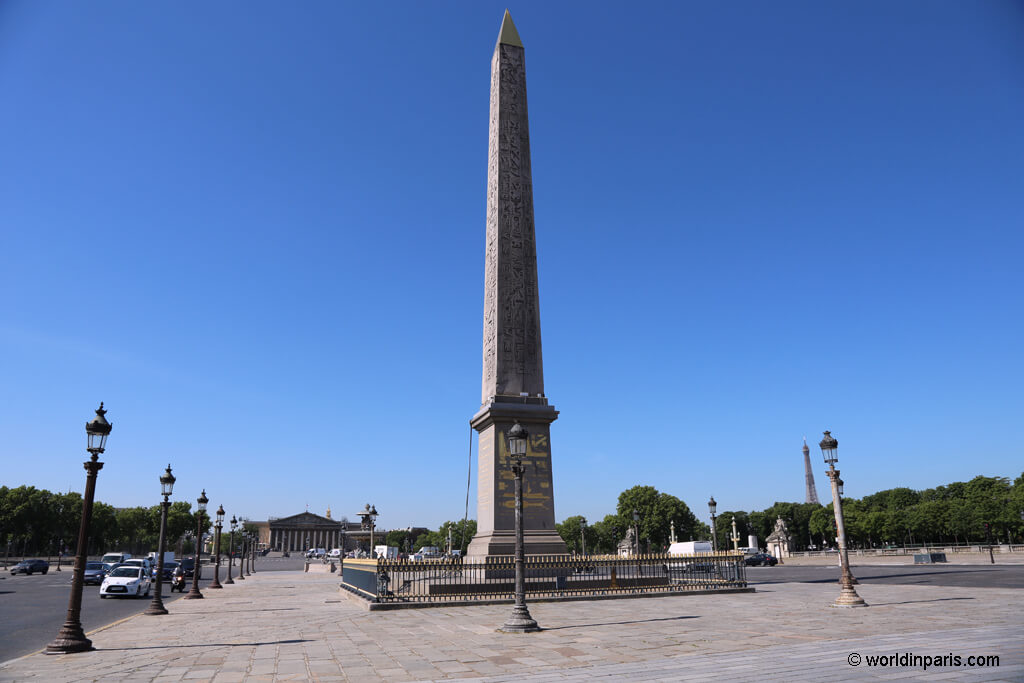
The Place de la Concorde is one of the royal squares in Paris , built in 1748 to celebrate King Louis XV’s recovery from illness. At that time, the equestrian statue of the King dominated the vast square.
During the French Revolution, the statue was torn down, and the new revolutionary government installed the guillotine. The guillotine’s first client was Louis Capet (former King Louis XVI), who was no other than King Louis XV’s grandson. Among other notable heads who shared the King’s fate at Place de la Concorde were Queen Marie-Antoinette, Danton, Robespierre, and poor Camille Desmoulins, who helped to start the show.
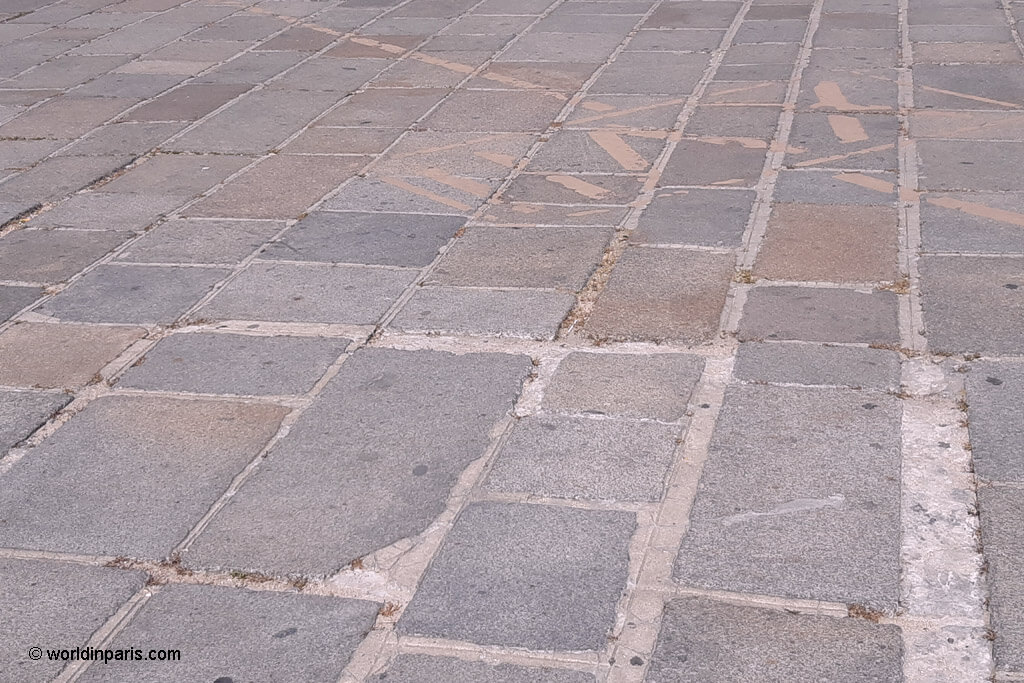
Curious wanderers may notice that some stones on the pavement between the entrance of the Tuileries Gardens and the Egyptian Obelisk have a different size. These are the last marks of the guillotine, and we can also see the marks of the loosening.
Since its inauguration, Place de la Concorde has had different names. At the corner of rue Boissy d’Anglais and Avenue Gabriel, you can see a street plaque with one of the old names, Place Louis XVI, during the Restoration Period (1826).
10. Pont de la Concorde
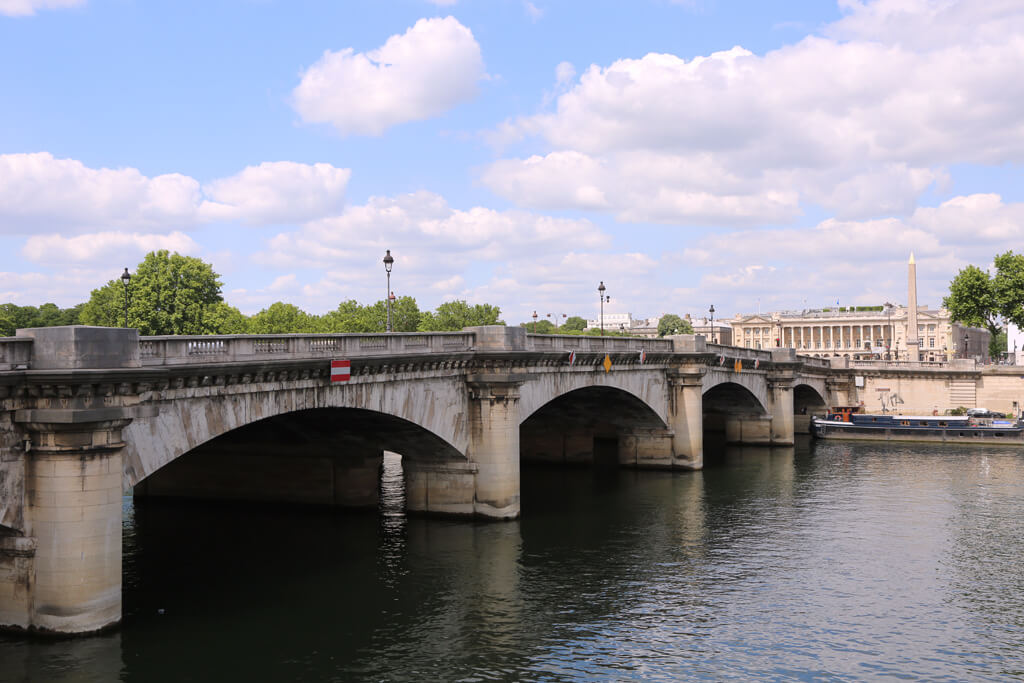
This French Revolution Tour, Paris, continues on the Seine’s left bank by crossing Pont de la Concorde . This stone bridge connects Quai des Tuileries on the right bank to Quai d’Orsay on the other side of the Seine.
Built between 1787 and 1791, Pont de la Concorde was finished with stones from the Bastille Prison so that ‘the people could forever trample the ruins of the old fortress.’
The bridge was formerly known as the ‘Pont Louis XVI,’ ‘Pont de la Révolution,’ ‘Pont de la Concorde,’ and ‘Pont Louis XVI’ again during the Bourbon Restoration (1814). In 1830, the name was changed again to Pont de la Concorde.
11. Hôtel des Invalides
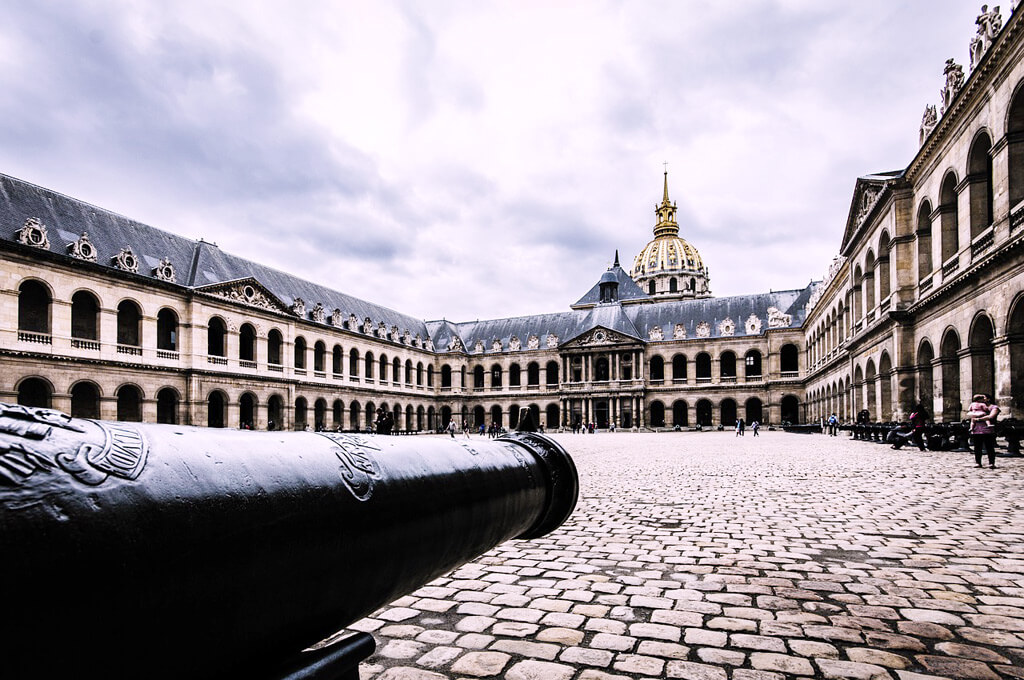
Hôtel des Invalides was built between 1670-1679 by King Louis XIV as a hospital and retirement home for the aged and sick war veterans.
On the morning of 14 July 1789, with the city in a state of panic, several thousand men plundered the military complex’s store of 30,000 muskets, the source of weapons for the mob who attacked the Bastille Prison that same day.
Today Les Invalides – Musée de l’Armée is one of the most famous buildings in Paris . From Napoléon’s campaigns to the World Wars, it is all there for you to see. These exhibits cover the military aspects of the wars and their social, economic, and political aspects. Finally, visitors can admire the tomb of Napoléon under the golden cupola.
12. Cour du Commerce Saint-André
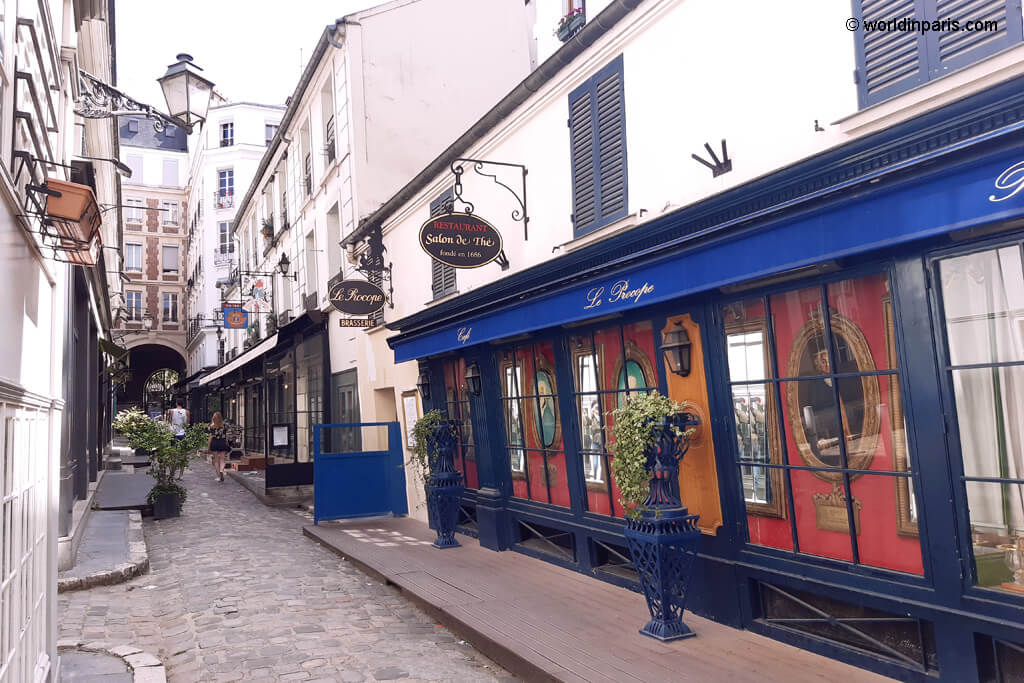
Cour du Commerce-Saint-André is a charming walkway in the heart of the Odéon neighborhood (Paris 6) with a fascinating history. Cour du Commerce-Saint-André was one of the main melting pots of the French Revolution in Paris. The French Revolution sites in this passage are:
- Le Procope, the oldest café in Paris, founded in 1684.
- At number 8, Marat established the editorial office and the printing works of L’Ami du Peuple , a French political journey.
- At number 9, Joseph Joseph Ignace Guillotin was testing his guillotine on sheep.
- Number 20 was Danton’s house. He was arrested there on 30 March 1794, six days before being beheaded. This building disappeared during the extension of Boulevard Saint-Germain.
13. Café Le Procope
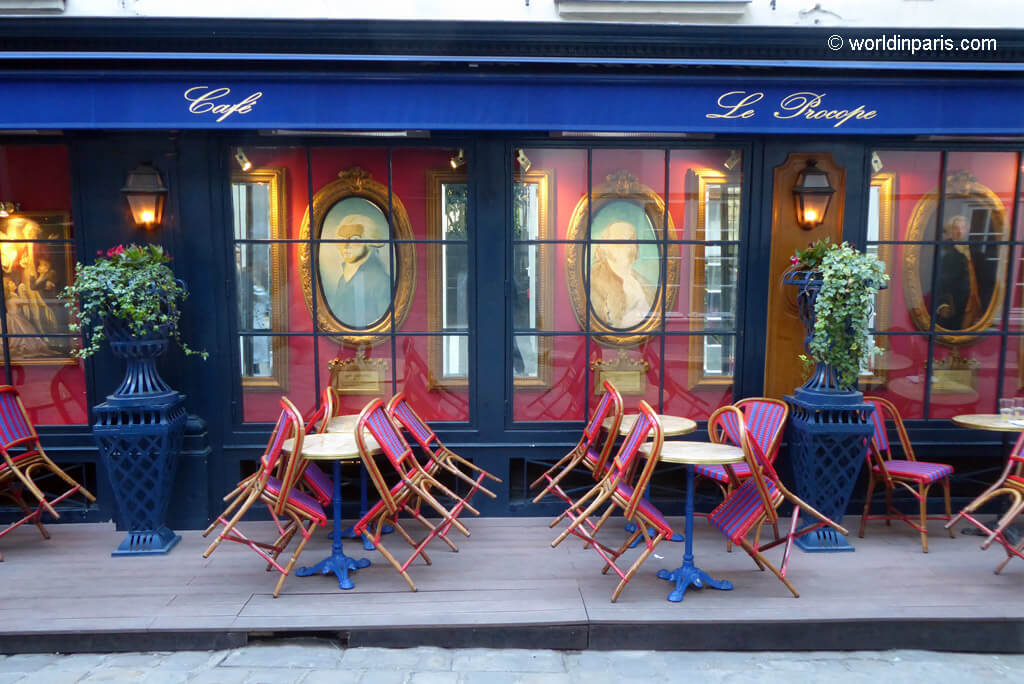
Located in Cour du Commerce Saint-André, Café Le Procope is the oldest café in Paris, dating back to 1670. This café was years later the meeting place for the revolutionaries Danton, Marat, Camille Desmoulins, Fabre d’Eglantine, and Legendre. The watchword for the Tuileries Attacks of 20 June and 10 August 1792 was given from this café.
Today, Café Le Procope is a restaurant serving traditional French cuisine. Inside, the Declaration of the Rights of Man and the Citizen of 1789 is reproduced on the walls of one of the rooms. The bathroom doors bear the words “Citoyens” and “Citoyennes,” respectively for men and women, and many documents evoking the Revolution are present on the walls. Guests can also see a hat belonging to Napoléon that is displayed at the entrance.
15. The Luxembourg Gardens
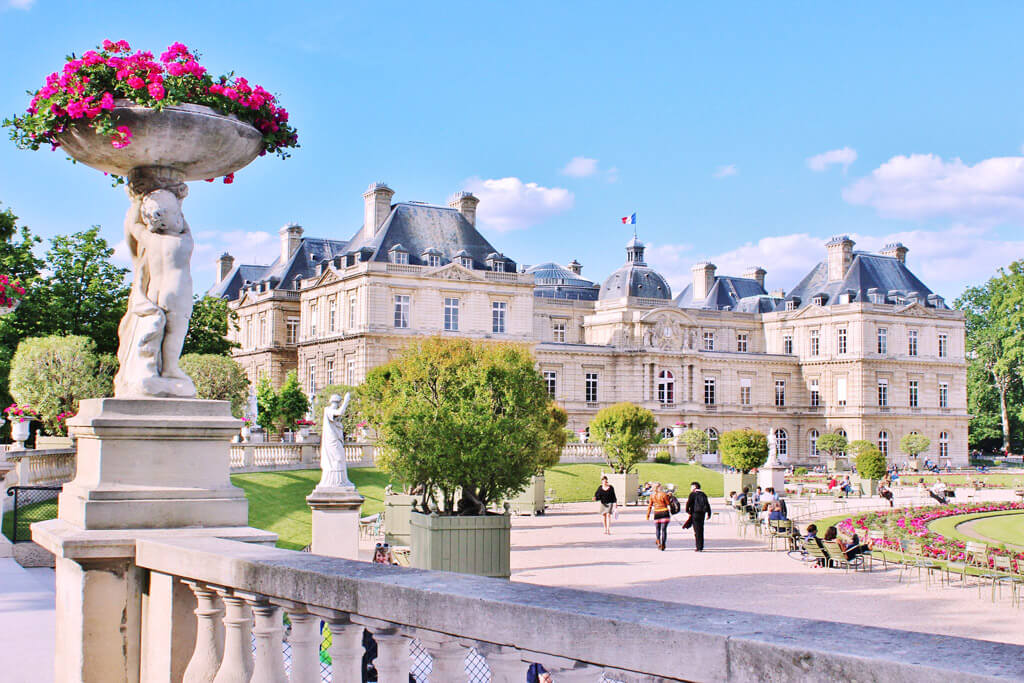
On the way to the Luxembourg Gardens, you can pass by Rue de l’École de Médecine . Marat lived on the 20 of this street (point #14 on the Google map above), and it was here, in his bathtub, where Charlotte Corday assassinated him.
Jardin du Luxembourg is home to the Luxembourg Palace , the headquarters of the French Senate. During the Revolution, the Luxembourg Palace was transformed into a prison. Major figures of the Revolution were detained here, like Danton and Camille Desmoulins.
The Luxembourg Gardens are the perfect place for a break during this French Revolution walking tour to enjoy a picnic lunch before discovering the final weeks of the Reign of Terror.
16. The Panthéon
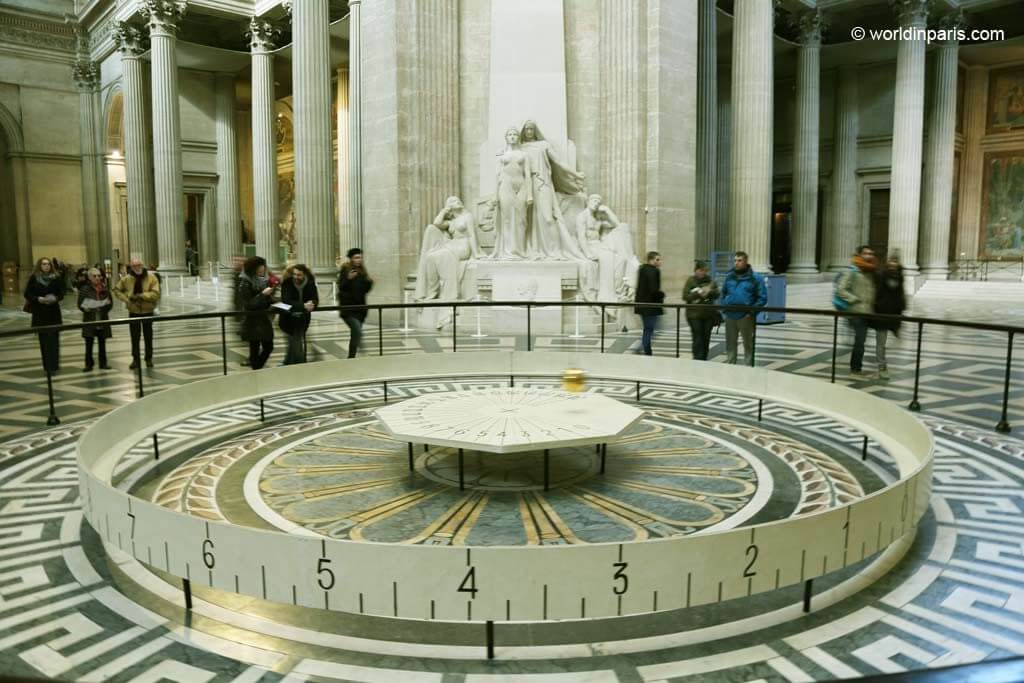
Outside the Luxembourg Gardens, on Rue de Médicis, you will take the RER train to the next stop. But before leaving, perhaps you wish to have a look at the Panthéon?
The Panthéon of Paris was originally built to be a church. The Panthéon was finished shortly before the French Revolution, and in 1791 the revolutionary government turned it into the ‘mausoleum for the great men of the Nation.’
Some of the important French figures buried here are Voltaire, Rousseau, Alexandre Dumas, Emile Zola, Victor Hugo, Jean Moulin, and Marie Skłodowska-Curie.
After his assassination, Marat’s body was buried (for the first time) under a weeping willow in the garden of the Couvent of Cordeliers, with the entire National Convention in attendance and the Marquis de Sade delivering the eulogy.
On 25 November, his remains were transferred to the Panthéon, where he was buried for the second time as a ‘martyr of the Liberty’ and a ‘great citizen of the Republic.’
Only a few months later, the government decided that in the end, Marat was not a good citizen and his body was ‘dépanthéonised’ and buried for a third and final time in the cemetery of the church of Saint-Étienne-du-Mont next door. Poor Marat!
17. Picpus Cemetery
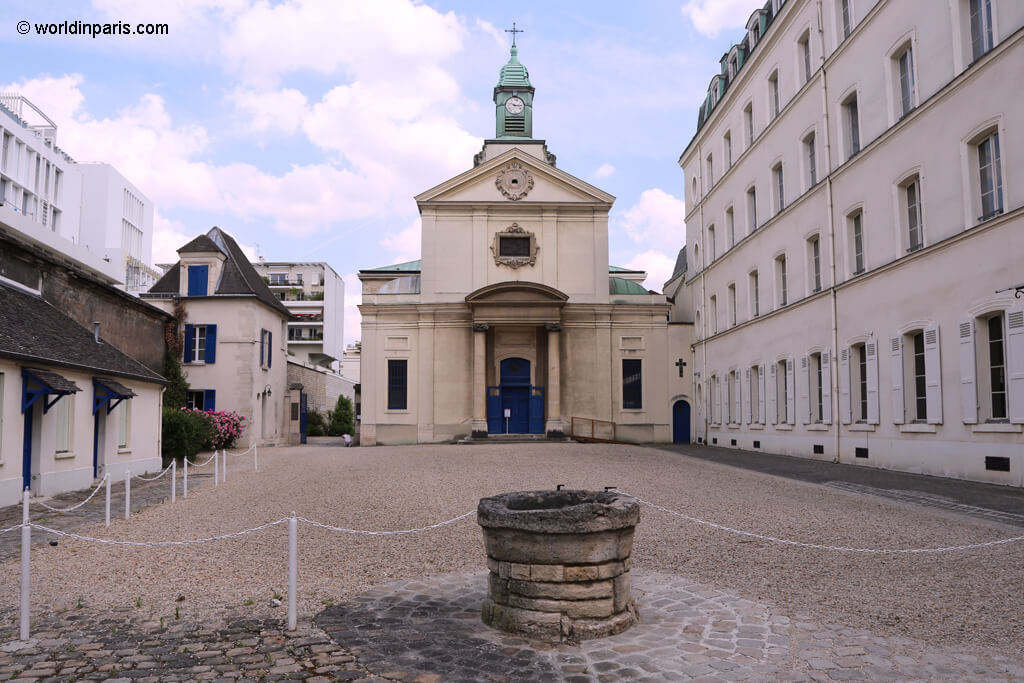
Take the RER train from Luxembourg RER station (just outside the Luxembourg Gardens) to Nation station, and walk the short distance to the Picpus Cemetery .
This tranquil place is the final resting place of 1,306 headless bodies who lost their lives at the guillotine set up in the former Place du Trône-Renversé (now Place de la Nation). They were nearly all condemned for petty, absurd, or imaginary crimes.
The massacre only stopped on 27 July 1794, when Robespierre was condemned and guillotined by his partisans, scared of becoming the next victims.
This cemetery is also the final resting place of Général Lafayette , known as the ‘hero of two worlds,’ referring to his involvement in the revolutionary wars of both America and France. We also recommend visiting the Picpus Cemetery in our post about American History in Paris .
The Picpus Cemetery is the last stop of this French Revolution tour in Paris. Take the train back to central Paris for a more than deserved apéritif.
Other French Revolution Sites in Paris
The following places are also interesting sites of Paris during the French Revolution, but we could not fit them in this French Revolution Walking Tour due to their location. If you have some extra time, they are definitely worth a detour!
18. Square du Temple (Tour du Temple)
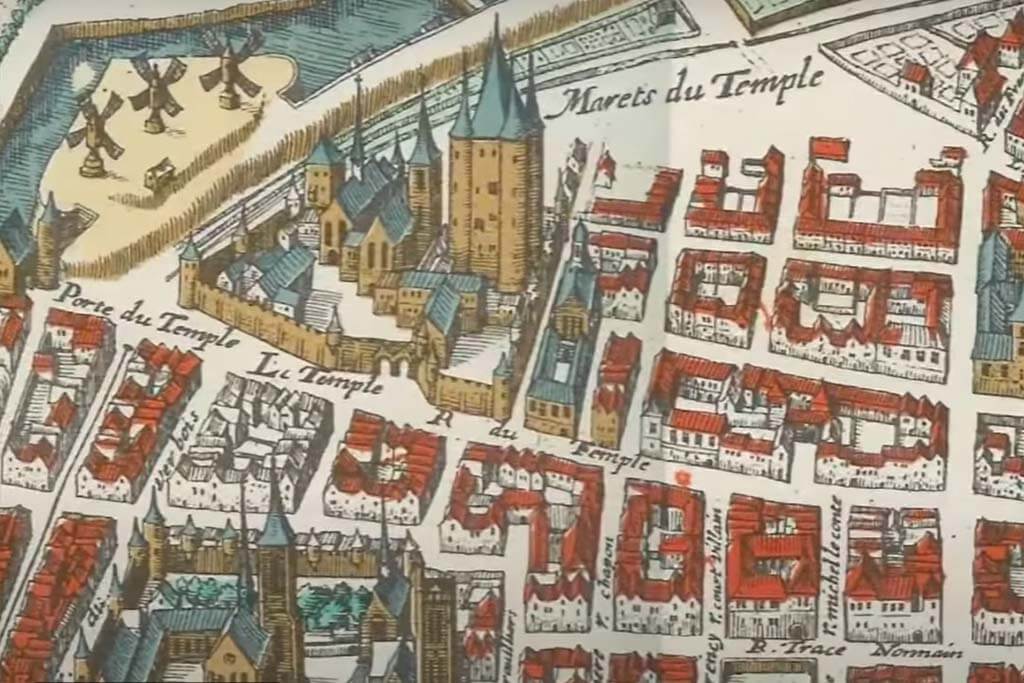
The Square du Temple , in Le Marais , occupies the site of the Temple enclosure built by the Knight Templars in the 13th century. Inside this enclosure, the impressive Tour du Temple dominated the skyline of medieval Paris . Fifty meters high and with 2-meter wide walls, this massive tower had four levels and a granary under the roof.
The Tour du Temple was the last home of the royal family. King Louis XVI occupied the second floor in relative comfort, while Queen Marie-Antoinette and the kids occupied the third floor. On 21 July 1793, Louis Capet (former King Louis XVI) made his last journey from the Tour du Temple to Place de la Révolution (Place de la Concorde), where he lost his life under the guillotine. In August, the ‘Capet widow’ was transferred to the Conciergerie for her trial. The Dauphin, Louis XVII, remained in the tower, where he died of tuberculosis three years later at age 10.
By 1808, the Tour du Temple had become a place of pilgrimage for royalists, so Napoléon ordered its demolition, which took two years. Today, the north corner of the Mairie of the 3rd Arrondissement occupies the site of the tower. On Rue Eugène Spuller, just in front of the Mairie, some metallic pieces on the pavement retrace the Temple’s layout.
19. The Chapelle Expiatoire
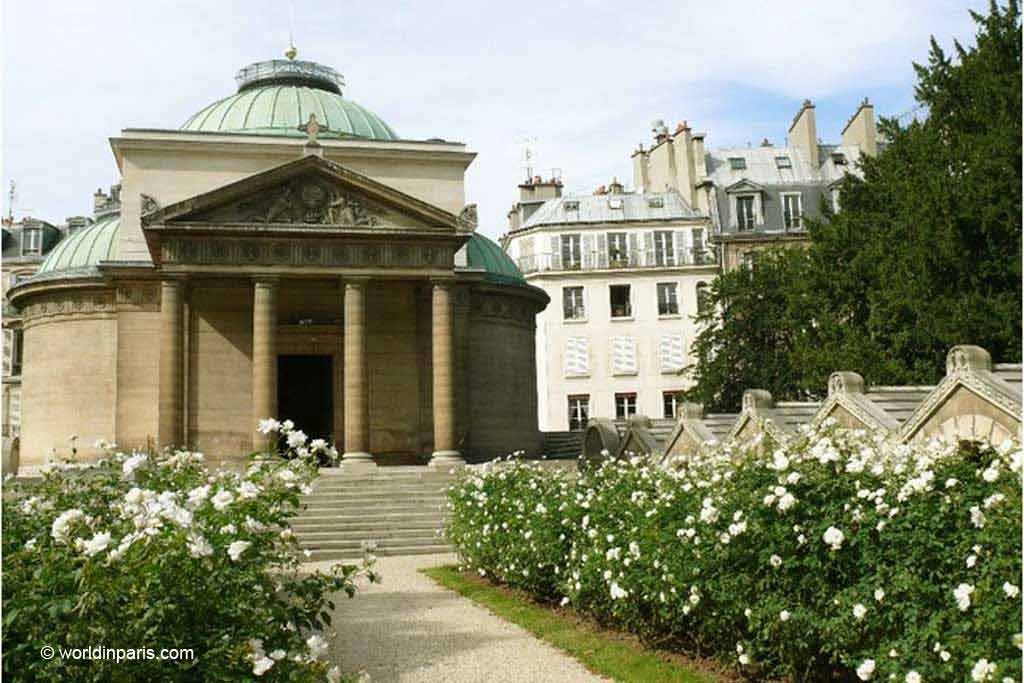
The Chapelle Expiatoire is a neoclassic-style building built on the location of the Cimitière de la Madeleine, which received hundreds of corpses during the revolutionary days. The Chapel is a memorial erected at the exact point where King Louis XVI and Marie-Antoinette were buried after their execution in 1793. Under the Restauration, the two corpses were transferred to the Basilica of Saint-Denis to rest with the other French Kings.
This tranquil place on the Grands Boulevards (Paris 8) is perfect for escaping the hustle and bustle of Paris. Designed by the architect Fontaine (1816-1826), the Chapelle Expiatoire’s primary purpose was to ask for the pardon on behalf of France.
20. Musée de Carnavalet – Histoire de Paris
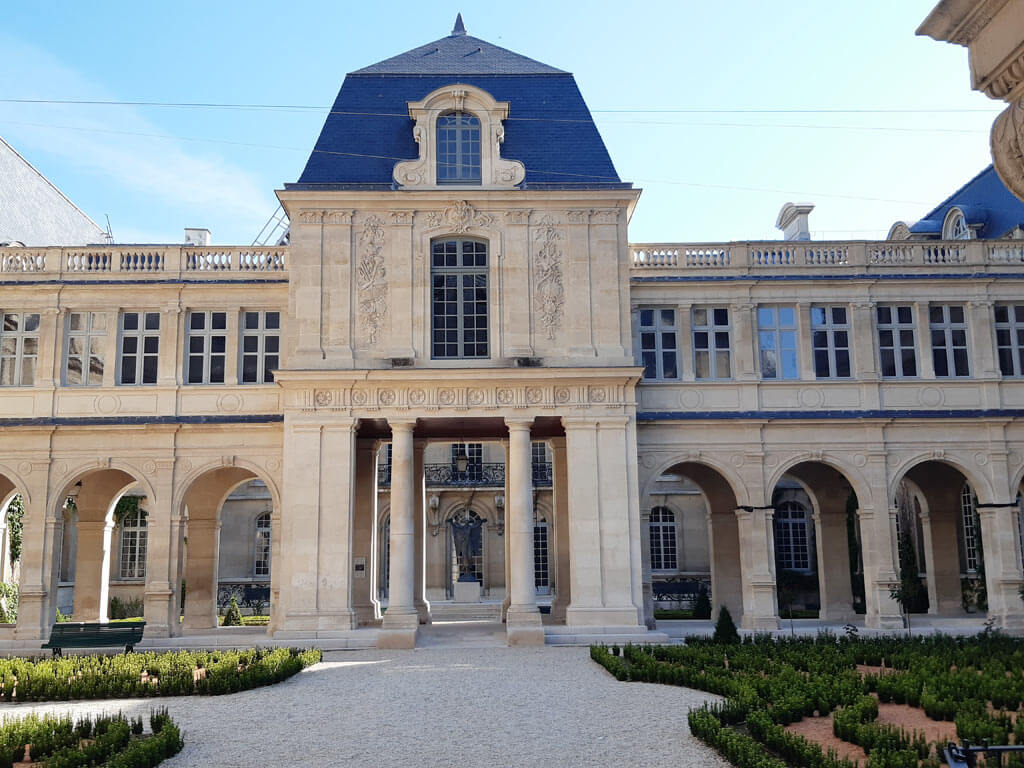
This beautiful museum in Le Marais is dedicated to the History of Paris from Prehistory to our days. Musée Carnavalet is also known as the ‘Museum of the French Revolution’ because of its important section dedicated to this historical period. Amongst other things, you can see models of the Bastille prison, a reproduction of Marie-Antoinette’s room in the Tour du Temple, and many of her objects.
If you want to know more about the French Revolution in Paris after the walking tour, Musée de Carnavalet is the place to go. The entrance to the museum is free, but you need to book a date and time slot online in advance.
Click here for more Paris Itineraries
Back to Homepage
Disclaimer: This post includes affiliate links, meaning we get a small commission if you make a purchase through our links. It costs you nothing more (in fact, if anything, you’ll get a nice discount) but helps us to go on creating incredible Paris content for you. We trust all products promoted here and would never recommend a product that isn’t of value. World in Paris is a participant in the Amazon Services LLC Associates Program. As an Amazon Associate, we earn from qualifying purchases at no expense to you.

About WORLD IN PARIS
Quirky parisian explorers with a preference for lesser-known sights, we are continuously looking for new ideas and tips to bring you the best of the city of light read more about us ., we’re elisa, norbert, valérie, and cédric, four travel bloggers and friends living in paris. quirky explorers with a preference for the local side of our city and its lesser-known sights, we are continuously looking for new ideas to enjoy the best of paris & around . do you want to go beyond the louvre museum or the eiffel tower keep clicking for first-hand information & our best tips learn more about us.
- Skip to primary sidebar
- Skip to content
Paris Top Ten
Best of Paris
Exploring Place de la Bastille: Paris’ Historic Square
This article explores Place de la Bastille – Paris, France’s historic and renowned square. We delve into its fascinating history to understand how it came to be and its role in France’s storied past.
We begin with a glimpse of the city’s ancient fortifications from which the square takes its name and then explore the use of the yard during the Middle Ages. We discuss the French Revolution and its impact on the court before looking at recent developments over the last few centuries.
Finally, we highlight some cultural activities and events the square still offers visitors today. Join us as we step back to discover all the secrets of Place de la Bastille.
Unfortunately, nothing remains of the Bastille itself. Today, the “Colonne de Juillet” stands in the middle of the square. The famous prison was destroyed, but today, the busy square is the center of a lively area, during daytime and nighttime, with shops, art galleries, bars, restaurants, and, of course, the modern Bastille Opera.
In this guide, we’ll tell you everything there is to know about the historical Place de la Bastille and the surrounding area. This is your guide if you want an overview of this famous Parisian neighborhood!
Table of Contents
The History of Place de la Bastille
The bastille prison, the july column – la colonne de juillet, the opera bastille, what to do & see at place de la bastille and nearby, place de la bastille., port de l’arsenal, place de la nation., place du trone., place de la bastille restaurants & cafes, le comptoir du relais, l’observatoire de paris, place de la bastille shopping & retail, where to stay near la bastille, get around place de la bastille, transportation, frequently asked questions, who made place de la bastille, can you go inside the bastille.
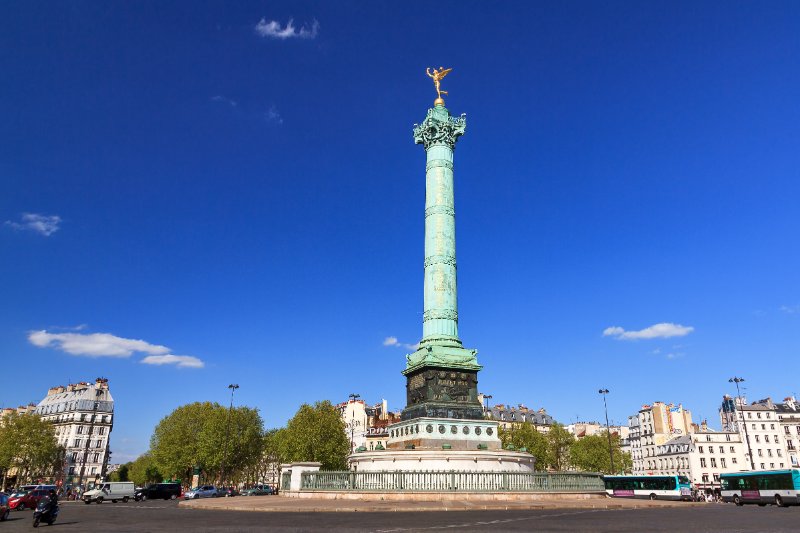
Place de la Bastille is a large public square on the historic site of the infamous Bastille Prison, stormed in 1789 and sparked the French Revolution. It lies in Paris ‘ 11th district, close to Place de la République.
The Bastille was initially built by King Charles V in the 14th century but fell into disrepair during the French Revolution. In 1789, violent mobs stormed the fortress—which had become a symbol of royal oppression—and demolished it.
Afterward, Place de la Bastille became a public square for executions and other forms of state violence. The guillotine moved to Place de la Concorde in 1793 after an unsuccessful attempt at building an execution machine on top of La Madeleine church (yes, really).
The prison was notorious for its cruel conditions, and many renowned political prisoners of the Ancien Régime were held captive there. On July 14, 1789, when people stormed it, this event marked the start of the French Revolution and has since been remembered as a symbol of freedom and democracy.
Afterward, Place de la Bastille transformed. In 1840, La Colonne de Juillet (July Column) was erected where the prison once stood- commemorating those who died during the ‘Three Glorious Days’ of 1830’s Revolution; its 50-meter tall statue is now one of the tourists’ favorite attractions.
Baron Haussmann’s mid-19th-century urban renovation also significantly changed Place de la Bastille’s look. Gare de la Bastille railway station was demolished in 1984 and replaced by the modern Opéra-Bastille opera house – one of the world’s most prominent today.
Nowadays. Nowadays. Place de la Bastille is known for its bars, night clubs & restaurants, as well as political demonstrations & concerts, making it a famous center for Parisian nightlife & favorite spot among visitors to the city alike! Its everchanging appearance throughout history speaks volumes about its long, turbulent past.
See Related : Best Farmers Markets in Paris: A Comprehensive Guide
The Bastille Prison was a medieval fortress on the east side of Paris, renowned as a French state prison and an emblem of absolute power in the Ancien Régime. On July 14, 1789, an angry mob attacked it – sparking the French Revolution.
The Bastille symbolized oppressive rule under absolute monarchy and held political prisoners. Its storming by Parisians is now known as the Storming of the Bastille; this resulted in the liberation of its captives and the physical destruction of the prison itself.
July 14’s attack on the Bastille marked the commencement of France’s Revolution – remembered as a signifier of freedom and democracy. Several revolutions occurred at this site throughout history: Revolutions of 1789 & 1830, plus 1848’s failed attempt.
Between 1789 and 1790, it was gradually dismantled; its stones were used to construct—Pont de la Concorde, along with 83 miniature replicas sent to provinces across France.
See Related: Paris Secret Shopping Tour: A unique Concierge-led adventure
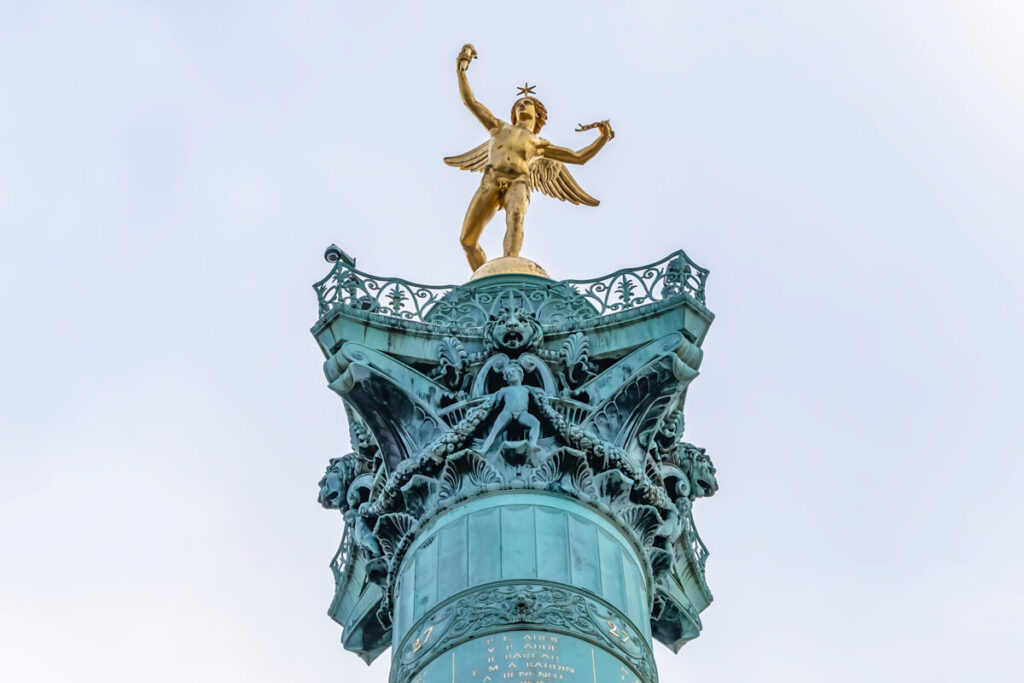
The July Column – La Colonne de Juillet – is a monument in Place de la Bastille, Paris, France, commissioned by King Louis-Philippe in 1840 to commemorate the victims of the ‘Three Glorious Days’ of the French Revolution.
Topped with an angel statue crafted by Auguste Dumont, this 50.5-meter tall column bears a good message at its base: “To the glory of French citizens who armed themselves and fought for public freedoms during 27th, 28th and 29th July 1830.”
Standing on Charles V’s former moat and connected to the Seine and Canal St Martin, it offers stunning views of Paris, including Sacré-Cur in Montmartre, Père Lachaise cemetery, Notre-Dame towers, Montparnasse Tower and Institut du Monde Arabe. 815 remains from the July Revolution lie at its foot, making it a powerful reminder of those events. A replica can be found in Mexico City (Columna de la Independencia).
See Related : Arc de Triomphe: Exploring the Iconic Paris Arch
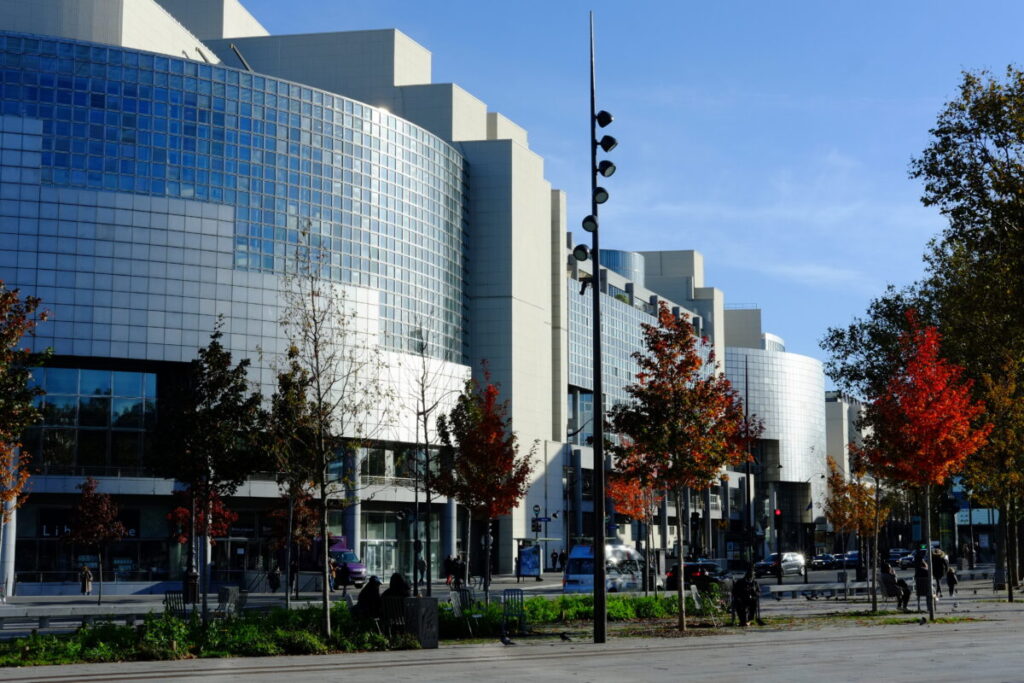
The Opera Bastille is a renowned Parisian venue that hosts operas, concerts, and ballets. Former French President Francois Mitterrand proposed it in 1983 on the former site of the Bastille fortress. Architect Carlos Rodriguez. Ott designed its angular shape to symbolize the strength of the French people. In 1989, it was inaugurated with 3,309 seats – making it one of the world’s largest opera houses.
Visiting Place de la Bastille? Don’t miss out on this must-see attraction! Its impressive façade and angular shape will take your breath away. Inside, you can experience its beauty and grandeur while enjoying musical performances. From its terrace, you’ll get a breathtaking view of the nearby Bastille fortress and its surroundings!
See Related : Best Steak Frites in Paris, France
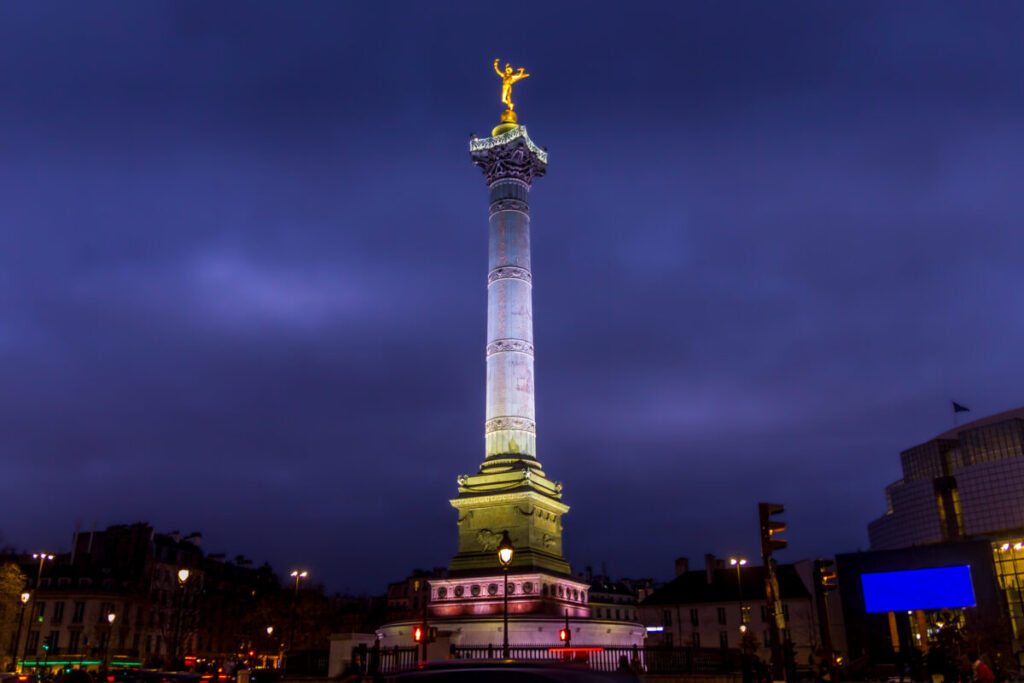
Place de la Bastille is a historic square in Paris that bursts with attractions and sights to explore. This square marks an important moment in France’s history on the former Bastille Prison site – when the prison storming on July 14, 1789, sparked the French Revolution.
At Place de la Bastille, visitors can admire La Colonne de Juillet – erected in 1831 to commemorate the Revolution – and visit Opéra Bastille, a modern opera house opened for the bicentennial celebration of the Revolution. Moreover, Faubourg Saint-Antoine – a charming pedestrian street between Bastille and Place de la Bastille – is ideal for afternoon strolls.
When night falls, this square comes alive with its many bars, restaurants, and clubs, making it popular among locals and tourists. It also often hosts political demonstrations, concerts, or other events. Additionally, the above was not mentioned.
Place de la Bastille is in the Latin Quarter , one of the most vibrant areas in Paris, where you can find plenty of bars & restaurants plus shops to explore. Not far away are Jewish communities from Le Marais and historic Paris. Place de la Bastille offers even more exciting places to discover!
From attending shows at the Opéra Bastille to exploring the Latin Quarter & Le Marais, there’s no better way than visiting Place de la Bastille to experience the culture & history of Paris! With its numerous attractions & lively nightlife scene, it’s an exciting area that should not be missed out on!
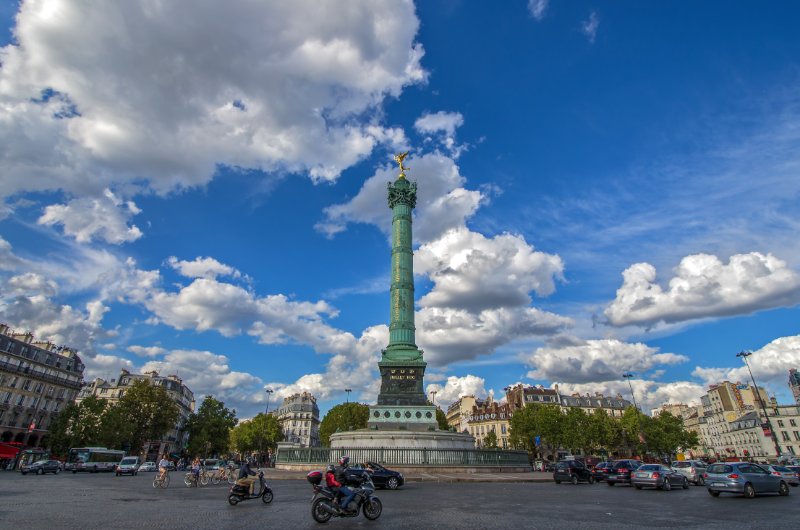
This is one of the most famous places in Paris and was built on the former prison site that was used to hold prisoners in extreme conditions and even torture them. The area around the place has remained a major landmark since its construction since it’s located near other important sites such as Chatelet-Les Halles RER station, Les Halles shopping mall, Palais Royal Gardens, and Place Dauphine.
Place de la Bastille is an excellent spot for sightseeing, offering tours and tickets to explore the area. Take a walking tour of the district to discover gourmet shops and bustling food markets. Or opt for a 1.5-hour time that takes in all of Paris’ iconic monuments , streets, shops, monuments, and sights. Buy tickets to the Opera Bastille for an evening of classical music and opera.
For those seeking something more relaxed, pleasure boats provide scenic cruises along the Seine. Whether you’re looking for guided tours or prefer exploring yourself, Place de la Bastille has it all! Tour the Bastille Prison and its physical destruction or explore Le Marais’ Jewish communities and historic sites. Place de la Bastille – there are plenty of ways to experience this area’s history and culture!
See Related : Winters in France: A Comprehensive Guide to the Season
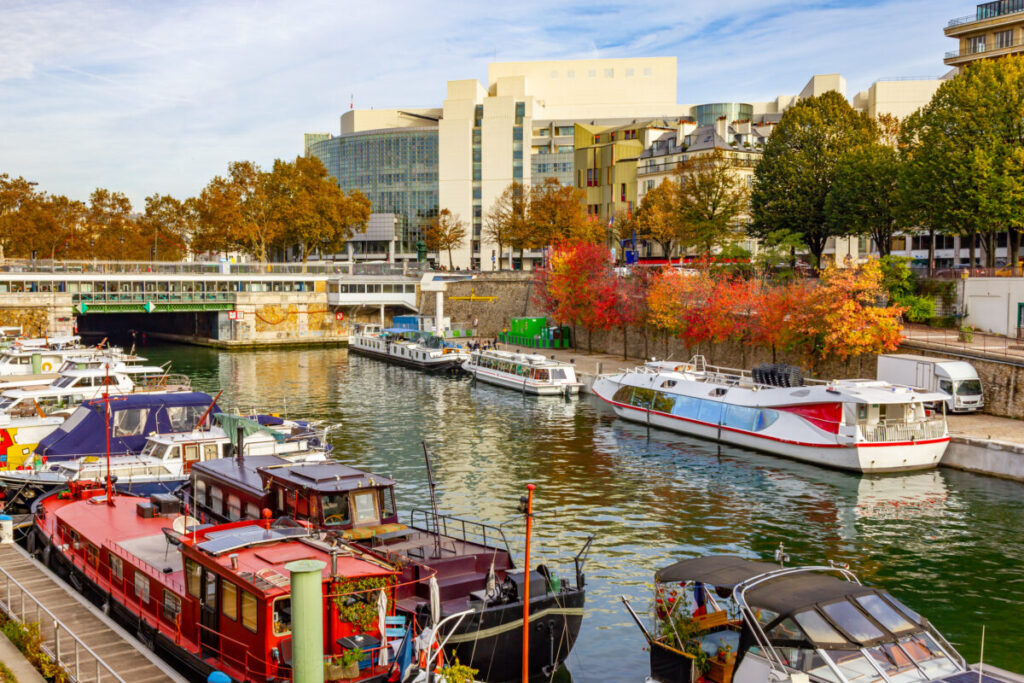
Located at the Place de la Bastille, Port de l’Arsenal is a boat basin that links the Canal Saint-Martin to the Seine at the Quai de la Rapée. Built by Pierre de Villiers in 1808, this tranquil port offers visitors an escape from Paris’s hustle and bustle. Cruise along the Seine for gourmet restaurants, wine bars, and cheese shops, or take a break with pastries, charcuterie, coffee, or tea – all available at food stops around the port.
Experience the history and culture of Place de la Bastille when you visit Port de l’Arsenal! Easily accessible via public transportation, it provides a fantastic opportunity to explore Paris from a unique perspective.
See Related : Best Free Walking Tours in Paris, France
Located between Bastille and Etoile, this large public square was designed by Napoleon III for military parades but has since been used for political demonstrations and celebrations (such as Bastille Day ).
Also called “Place Charles de Gaulle ,” this square is located just south of Champs Elysees Avenue near Arc De Triomphe Square at one end, where there are many high-end shops, including Christian Lacroix boutiques that sell womenswear fashions as well as men’s clothing brands such as Hugo Boss suits or Zara shirts/trousers if you’re looking for something more affordable but still stylishly chic!
Place du Trocadero. This square is between Champs Elysees Avenue and the River Seine, close to the Eiffel Tower. The Place du Trocadero has a large fountain often used for public performances and celebrations such as Bastille Day or other national holidays in France.
See Related: Le Potager du Dauphin
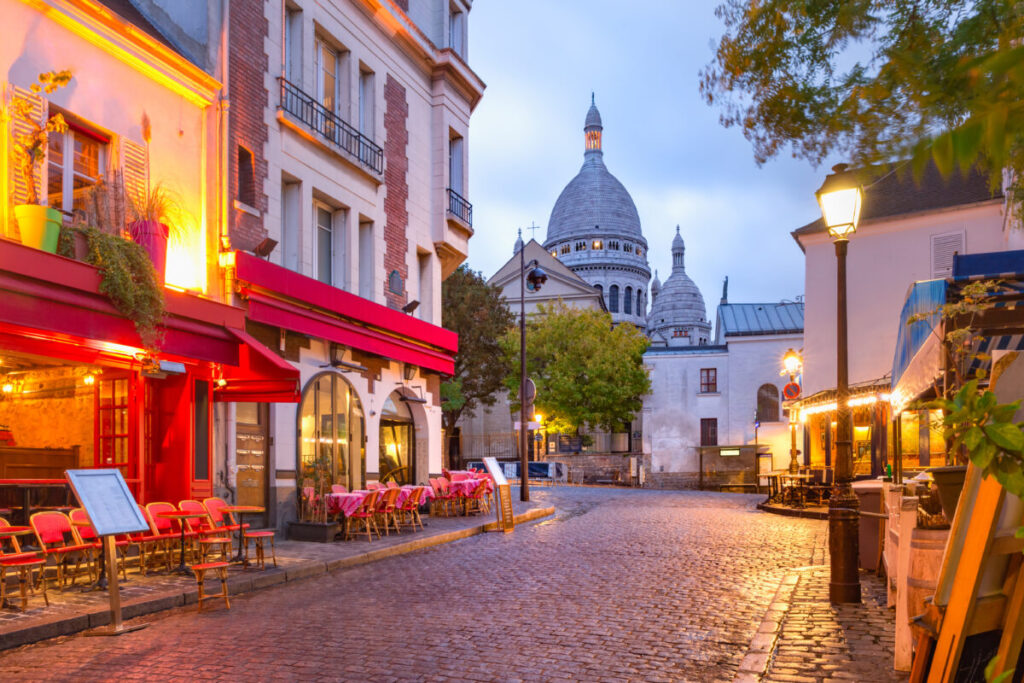
Le Comptoir du Relais is a charming restaurant that perfectly captures the romance of Paris. Located in the historic Palais Royal Garden, it has been serving traditional French fare since 1880. The restaurant’s interior is beautifully decorated with gilded mirrors and marble floors, lending a rustic feel to what would otherwise be an upscale dining experience.
Breakfast and lunch are served daily until 2 pm, after which they begin dinner service at 7 pm. Appetizers range from escargots (snails) to foie gras terrine, while main courses include steak frites or roasted duck breast with boudin noir sauce.
Dining here isn’t cheap, but fine dining is not anywhere else in Paris – expect to pay about 100 euros per person for two courses plus wine.
See Related: When is the Best Time to Visit Paris?
L’Observatoire de Paris serves fresh sushi in one of the most unique settings imaginable: inside a 17th-century observatory! Located in Montparnasse Tower, this contemporary Japanese eatery offers stunning views through large windows as you enjoy your meal – though bringing friends along might be challenging since most tables seat only two people apiece!
Prices here can fluctuate depending on what types of foods you order, but don’t expect cheap eats; even basics like edamame cost around 8 euros each, while sashimi platters cost upwards of 40 euros per person (you could probably feed yourself twice over at McDonald’s instead).
See Related : Best Boat Tours in Paris, France
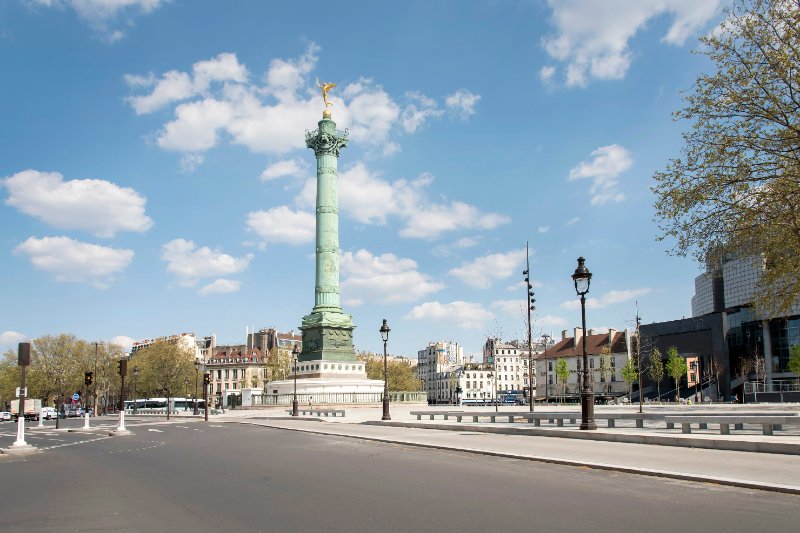
Shopping at Place de La Bastille differs slightly from shopping elsewhere in Paris. The square doesn’t offer as many options as other neighborhoods, but it’s easy to reach from Bastille and has some great stores.
The first thing you’ll want to do is pop into Monsieur Tricotin, a shop that sells handmade scarves and hats (as well as other items) made by French artisans using wool from sheep raised on farms in South West France.
These are not cheap—especially compared with what you can find at the more touristy end of town—but they’re high quality. You’ll support local businesses by purchasing them here instead of buying cheaper knockoffs elsewhere in Paris.
Once you’ve got your new accessory for fall/winter/spring/summer (depending on when you’re visiting), check out the rest of Place de La Bastille’s retail offerings, too: especially if they include any food or drink!
See Related: Most Beautiful Places in France to Visit
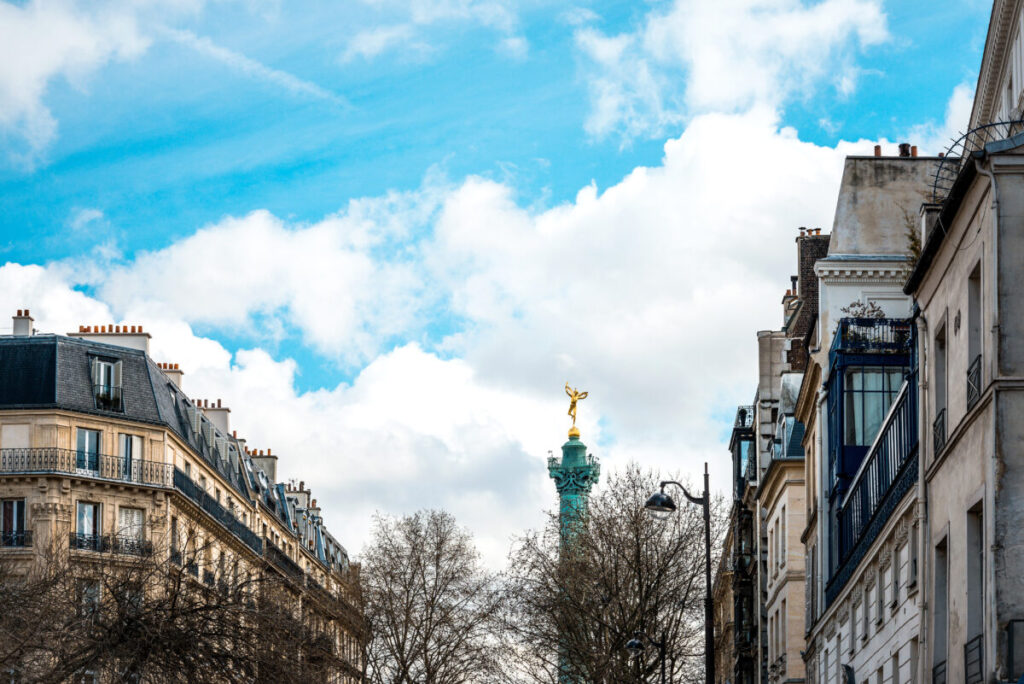
Paris is one of the world’s most popular tourist destinations, and as such, there are many options for where to stay.
The Bastille area is a great place to stay if you’re looking for something between downtown Paris and the more residential areas of the city. Here are some excellent choices:
- The Bastille area has a lot of hotels, including budget hotels like Hôtel du Nord (77 rue de la Roquette).
- There are also many bed and breakfasts in the area. These can range from small apartments with shared kitchens to larger houses or manor houses with rooms you share with other guests. One example is La Maison Blanche (22 rue des Barres).
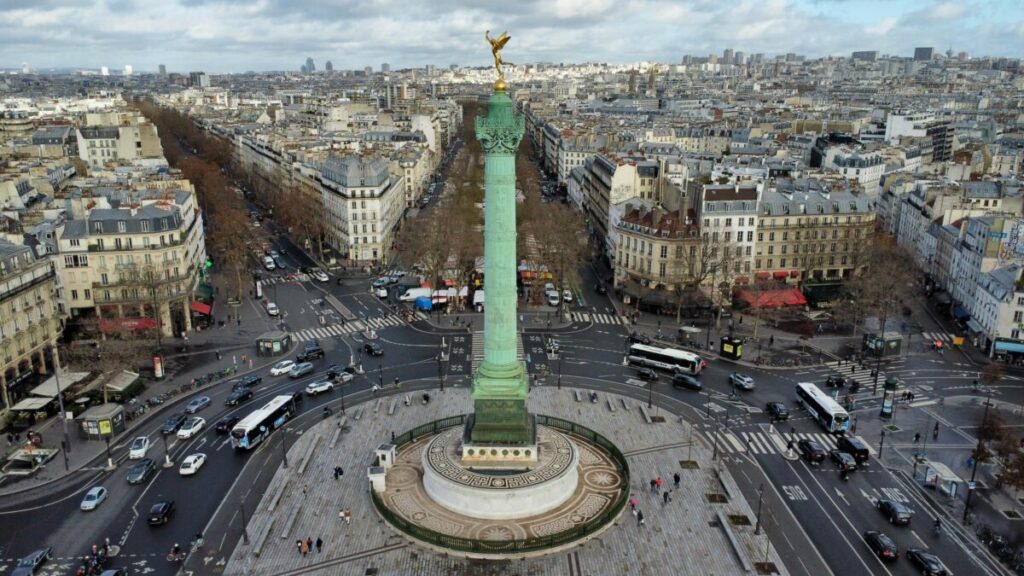
Getting around Place de la Bastille is a breeze with the various transport options. Metro lines 1, 5, and 8 all pass through the area, and RER A and B, stop at Gare de Lyon. Plus, plenty of bus routes go to Place de la Bastille from many parts of Paris. Taxis can also be hailed right in the square for added convenience.
For those who prefer to explore on foot, the area is well-structured, with streets and attractions within easy reach. The Paris City Pass offers free access to public transportation so you can get around Place de la Bastille without breaking your budget!
Getting around Place de la Bastille is a breeze with the various transportation options. Metro lines 1, 5, and 8 traverse the area, and RER A and B stop at Gare de Lyon. Plenty of bus lines go to Place de la Bastille, making it easily accessible from many parts of Paris.
Hailing a taxi in the square is also an option for getting around Place de la Bastille. Or, if you prefer to explore on foot, the area is well-structured, with streets and attractions within easy reach. No matter your choice of transport, you can get around Place de la Bastille without any hassle!
If you are planning a visit to Place de la Bastille, you’ll be pleased to know that there are plenty of parking options. The Bastille public car park is a 5-minute walk away and open 24/7.
Other garages nearby, such as the underground garage on Boulevard Richard Lenoir, the multi-level garage on Rue de la Roquette, and the parking lot on Faubourg Saint Antoine – all offer ample space for your vehicle to explore without worrying. No matter your needs, Place de la Bastille has something for everyone!
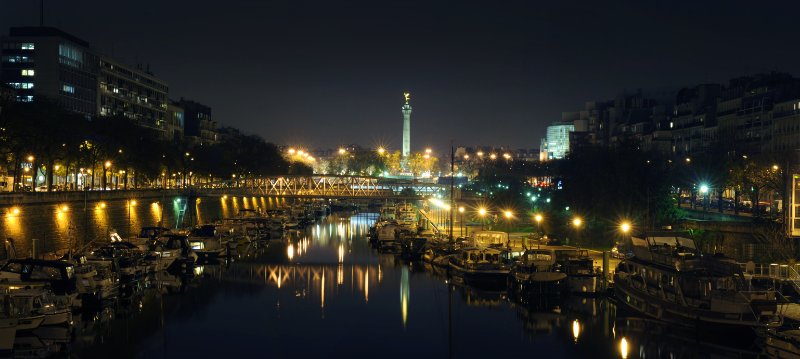
The Place de la Bastille is a historic square in the heart of Paris with immense cultural significance. Its importance began during the Ancien Régime when it housed the royal prison of the Bastille and later became a symbol of absolute power following the storming of the Bastille in 1789.
Today, this noble square boasts attractions and sights such as the Opera Bastille, Latin Quarter, Marais, Boulevard St. Antoine, and more. Famous landmarks also dot this influential square and give visitors insight into its significant history, including the July Column – La Colonne de Juillet and the Bastille Prison Museum.
Place de la Bastille has become an even greater transportation hub over time, with improved public transportation making it easy for visitors to traverse this area. Parking lots and boat basins, such as the Port de L’Arsenal, provide further accommodations for travelers. Moreover, events and concerts regularly take place within this space, adding to the vibrancy and entertainment aspects of the square.
With all these features, Place de la Bastille has cemented itself as one of Paris’ most prominent squares, attracting tourists worldwide.
Charles V of France ordered the construction of Place de la Bastille in 1370, and Louis-Philippe completed its development with the addition of the July Column in 1833.
Unfortunately, entering the Bastille is impossible as it no longer exists, having been destroyed during the French Revolution in 1789-1790. However, visitors can still visit the Place de la Bastille, where the prison once stood, and experience a piece of history.
Please rate Stellar
Your page rank:
Other Travel Guides
- The Ancient Wonders of Pantheon Paris: A Travel Guide
- Eiffel Tower History: The Iconic Landmark of Paris and Gustave Eiffel’s Masterpiece
- 18 Best Beaches Near Paris for Summer Getaways
- Expat Jobs in Paris: Discover Exciting Career Opportunities
- Job Opportunities in Paris: Can I Get Hired Without Speaking French?
- Immigration Attorneys in Paris, France: Expert Legal Services for Visas and Residency
Bastille's Architecture & Artisans Self-Guided Walking Tour

- Access to your self-guided audio tour
- Audio tour provided by a local or historian
- Offline Mode: Download tours in advance to listen without WiFi
- Location Aware: GPS map allows you to enjoy sites, without getting lost
- Instagram Hotspots: We find the spot for your perfect picture
- Mobile device
- Place de la Bastille, Pl. de la Bastille, Paris, France The tour starts on Place de la Bastille, near the Opera.
- 1 Coulée Verte René-Dumont, 75012 Paris, France
- Wheelchair accessible
- Stroller accessible
- Service animals allowed
- Near public transportation
- Transportation is wheelchair accessible
- Confirmation will be received at time of booking
- Most travelers can participate
- This tour/activity will have a maximum of 10 travelers
- For a full refund, cancel at least 24 hours in advance of the start date of the experience.
- Place de la Bastille
- Bastille Market
- Rue du Faubourg Saint-Antoine
- Passage du Chantier
- Fontaine de Charonne
Similar experiences

- You'll start at Place de la Bastille Pl. de la Bastille, Paris, France The tour starts on Place de la Bastille, near the Opera. See address & details
- 1 Place de la Bastille Stop: 5 minutes See details
- 2 Rue du Faubourg Saint-Antoine Stop: 5 minutes See details
- 3 Passage du Chantier Stop: 5 minutes See details
- 4 Fontaine de Charonne Stop: 5 minutes See details
- 5 Square Trousseau Stop: 5 minutes See details
- 6 Bastille Market Stop: 10 minutes See details
- 7 Coulée Verte René-Dumont Stop: 5 minutes See details
- You'll end at Coulée Verte René-Dumont 1 Coulée Verte René-Dumont, 75012 Paris, France See address & details

- Michael N 0 contributions 5.0 of 5 bubbles Must do walking tour... A wonderfully interesting and informative tour. Thank you to Margot, our amazing guide who took on a two-hour journey through Stratford-upon-Avon's history and Shakespeare's story. A must do... Read more Written April 5, 2024
- Suesangels6 0 contributions 5.0 of 5 bubbles Pantheon WOW WOW this place is amazing, the headphones helped with the experience, very good story telling and very informative. I would recommend this tour 10 out of 10 Read more Written March 21, 2024
- PatchInMyBackpack 0 contributions 5.0 of 5 bubbles Perfect DIY tour guide for solo travellers It's a free and easy DIY kind of tour of the Warwickshire! Perfect tour for solo travelers that likes to wander and has lots of time to spare! Read more Written March 18, 2024
- 619jeffry 0 contributions 5.0 of 5 bubbles ''What news on the Rialto?" Historic Rialto Bridge is important; it crosses Venice's Lagoon; it's the heart of Venice's business and commerce area. The Bridge's ramps have lots of shops. Crossing the Rialto Bridge is easy, it attracts locals and travelers. By the way, the Realto was similar to a stock exchange and gold market in days gone by. In Shakespeare's play "The Merchant of Venice," one of the actors asks "What news on the Rialto?" similar to saying "What's happening on Wall St? The Rialto is also known as "Shylock's Bridge." It's interesting and worth crossing. Read more Written March 11, 2024
- nomaler 0 contributions 1.0 of 5 bubbles Disappointing experience and wasted time I took almost 2 hours by Uber to get there and wasted my time and money due to inconvenience. The presence of ongoing construction and the closure of entire buildings for maintenance prevented me from entering the premises and utilizing the app I paid. Unfortunately no prior notifications or information regarding these circumstances was provided me. Read more Written March 7, 2024
- Leekraushaar 0 contributions 1.0 of 5 bubbles No good Very disappointed as we were having trouble identifying the start point from their directions - which sent us to an abandoned shop - and although there was an email to contact them, which I did, I heard nothing back We obviously had to change our plans that day and I asked for a refund Despite emailing again after our trip there has still been no reply to apologise, clarify or refund Would not recommend Read more Written February 24, 2024
- 998lenad 0 contributions 5.0 of 5 bubbles Interesting historical tour Very chill way to explore the history of covent garden. Easy to understand and to listen to. Did like the possibility to take “breaks” and continue wherever you want Read more Written December 31, 2023
- ADM1111 0 contributions 5.0 of 5 bubbles STRONGLY RECOMMENDED It's not the first time I visit Kew Gardens. I start by saying that I had been visiting more than one botanical garden, included Rio de Janeiro (which is really, really remarkable). Actually, Kew gardens fascinates in summer and spring as well as in winter. Princess of wales pavillion, pagoda, the forest, Kew palace, Palm house, Temperate House, Edible Science and so on ARE unquestionably AMAZING. They provide each and everyone with 360 degrees about ecological worries. Read more Written December 27, 2023
- Departure68431959878 0 contributions 5.0 of 5 bubbles Awesome Very nice place which is within walking distance, close to the trams and metros. The hostel is nice and comfortable. Read more Written December 26, 2023
- carmenfr93 0 contributions 5.0 of 5 bubbles Perfect way to explore London (solo) at your own pace Perfect way to explore the city :) I did some tours by myself, some with my bf and really enjoyed it! It is a great combination of historic but also contemporary information with more than a few tips for pubs and restaurants. I also really liked the app to help me navigate and find some "instagramable" spots - highly recommend! Read more Written November 28, 2023
- simongC6467JB 0 contributions 4.0 of 5 bubbles Visiting times. Great place to visit, however be aware that on Friday doesn’t open until 4pm, this would help if on this page. Overall very interesting place to go too. Read more Written November 17, 2023
- nascar9900 0 contributions 1.0 of 5 bubbles No download. No reply from vendor. Wasted money. We ordered the audio tour, but after many attempts to download using multiple codes found in the “You’ve been charged” email, all we got back was “an error has occurred”. We called the vendor’s number but only got a message machine. We left a message, but no callback after 3 days. We sent them an email, but have not received a reply after 3 days. Wasted money, no vendor response. Will be requesting a refund from Tripadvisor. Read more Written October 5, 2023
- gracewW5094WP 0 contributions 4.0 of 5 bubbles Recommend this tour. Good value The audio tour was exactly what we wanted.The only problem we had was with the first stop as the narration kept cutting out. We saw all the main places of interest and enjoyed the dialogue Read more Written September 28, 2023
- etonn 0 contributions 3.0 of 5 bubbles Great information, but the app needs to be updated. It was great information provided in the guided tour, however I was hoping the app would track your precise location and start once you arrive at a location. We spent the majority of the time trying to locate the buildings or area being referenced, and in many cases without success. Read more Written September 4, 2023
- 900iarah 0 contributions 4.0 of 5 bubbles Learn about music, history and art of Brixton whenever you want Very interesting self-guided audio tour which shows history, music related spots and art of Brixton area. It has been an amazing way to walk around the neighborhood safely and learn a lot of cultural things. I really suggest trying this tour. To be fair, I had problems to download the audio guide by using the code I received from TripAdvisor booking, si I strongly suggest using their Vici Guides app directly to book the tour. Read more Written August 16, 2023
More to explore in Paris

Most Recent: Reviews ordered by most recent publish date in descending order.
Detailed Reviews: Reviews ordered by recency and descriptiveness of user-identified themes such as wait time, length of visit, general tips, and location information.
Buy it with

Bastille's Architecture & Artisans Self-Guided Walking Tour provided by Vidi Guides
Related Videos
Paris exhibit examines history of bastille prison (presstv).
Season 24/25
Subscribe to the 24/25 season.
- Discounts up to 30%
- Priority booking for all the season’s productions
- Free exchange of your tickets
Show / Event
Concerts and Recitals
Palais Garnier
Opéra Bastille
- Studio / Amphithéâtre
- Extra-mural
- With the family
- New productions
- The great classics
- Contemporary works
- Previews for young adults
- Audio described performances
- Works from the repertoire

Giuseppe Verdi
from 10 to 30 Sep 2024
On sale 28 May 2024 from 12:00 p.m
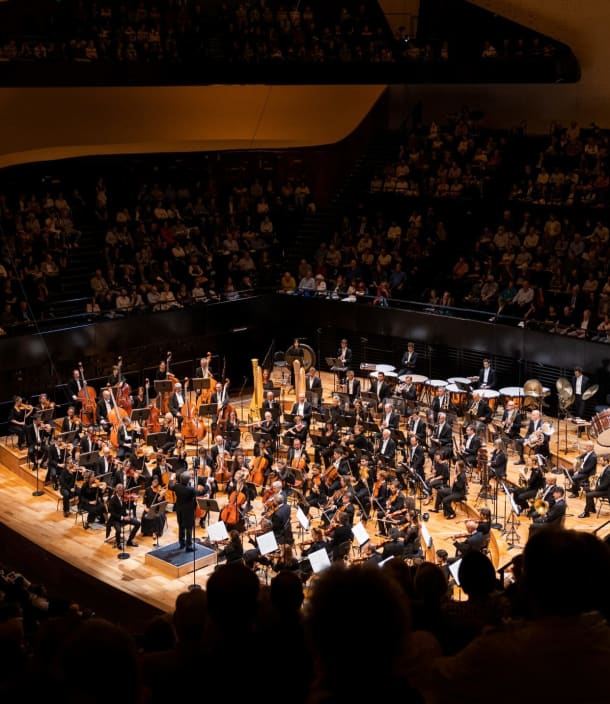
Dmitri Shostakovich
Philharmonie de Paris
on 13 Sep 2024 at 8 pm
On sale 20 Jun 2024 from 12:00 p.m

Madama Butterfly
Giacomo Puccini
from 14 Sep to 25 Oct 2024
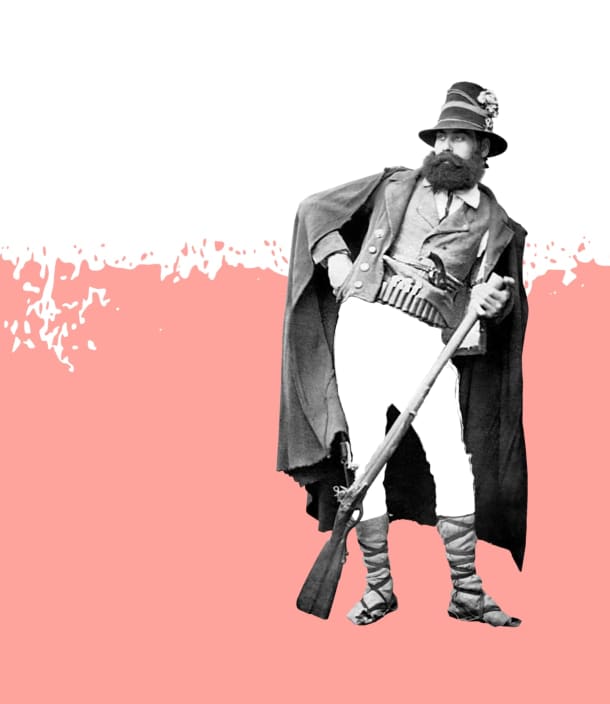
Les Brigands
Jacques Offenbach
from 21 Sep 2024 to 12 Jul 2025

Charles Gounod
from 26 Sep to 18 Oct 2024

William Forsythe / Johan Inger
from 04 Oct to 03 Nov 2024
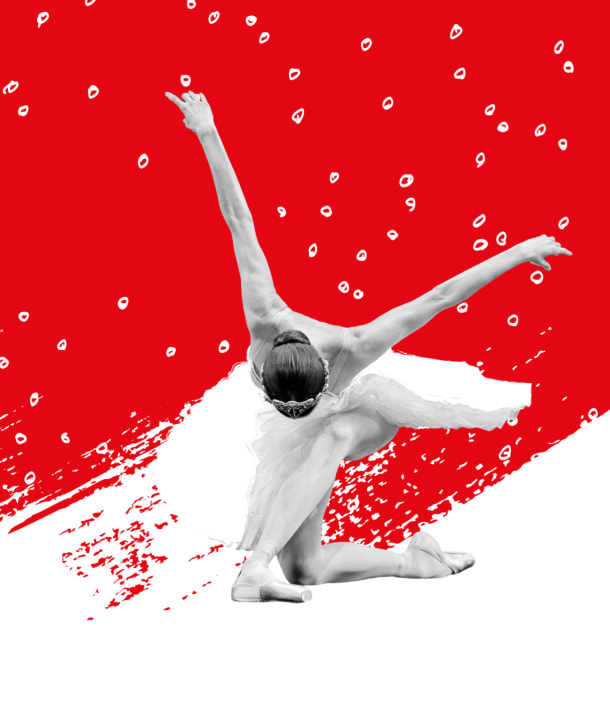
Opening Gala
Opening of the dance season
on 01 Oct 2024 at 7:30 pm

Musical encounter October 3
Studio Bastille
on 03 Oct 2024 at 1 pm
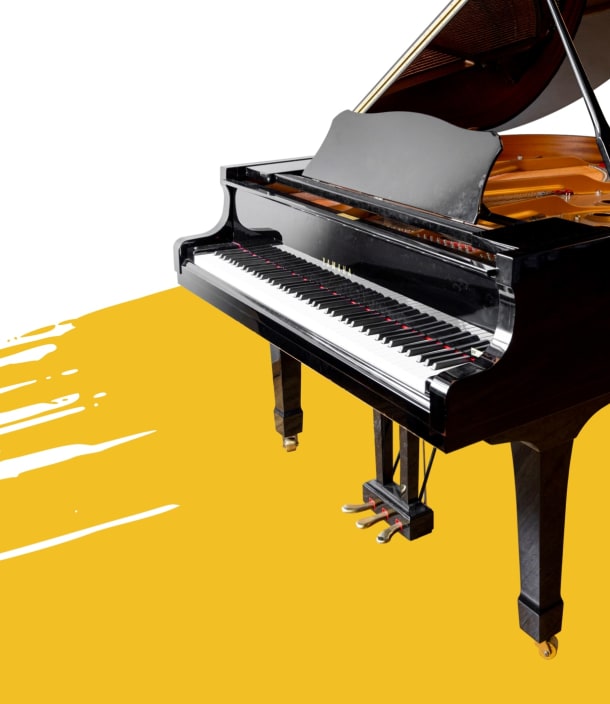
Tribute to Gabriel Fauré
Amphithéâtre Olivier Messiaen
on 04 Oct 2024 at 8 pm

La Fille du régiment
Gaetano Donizetti
from 17 Oct to 20 Nov 2024
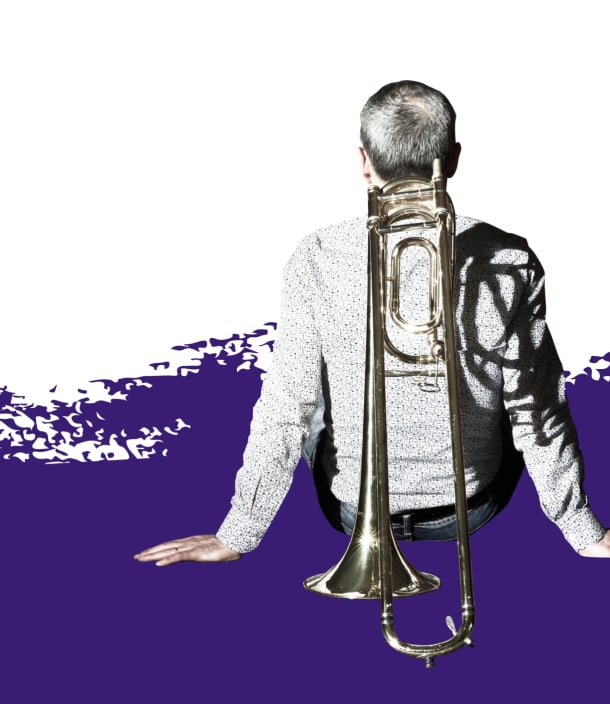
Musical encounter October 17
on 17 Oct 2024 at 1 pm
on 27 Oct 2024 at 12 pm

Kenneth MacMillan
from 29 Oct to 16 Nov 2024
On sale 18 Jun 2024 from 12:00 p.m

The Magic Flute
Wolfgang Amadeus Mozart
from 02 to 23 Nov 2024
Musical encounter November 7
on 07 Nov 2024 at 1 pm

Musical encounter November 21
on 21 Nov 2024 at 1 pm

Benjamin Bernheim
on 24 Nov 2024 at 8 pm
Musical encounter November 28
on 28 Nov 2024 at 1 pm

The Rake's Progress
Igor Stravinsky
from 30 Nov to 23 Dec 2024

from 01 Dec 2024 to 12 Jun 2025
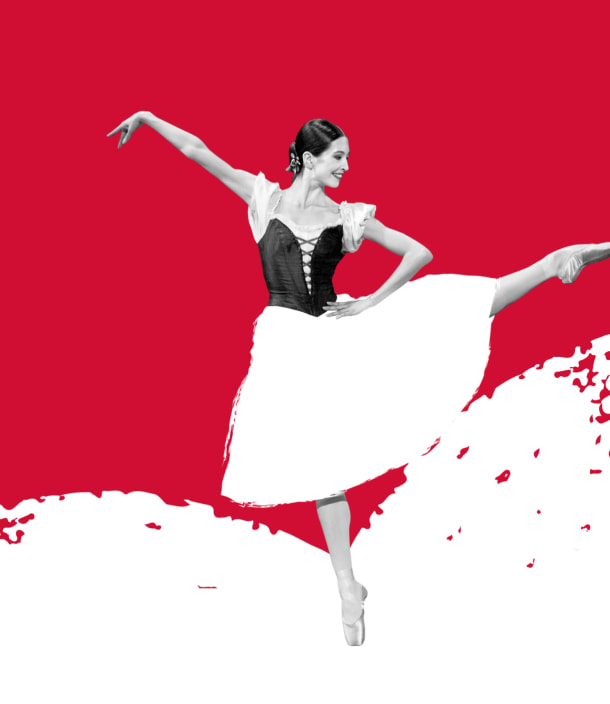
Pierre Lacotte
from 05 Dec 2024 to 04 Jan 2025

Alexander Ekman
from 07 Dec 2024 to 04 Jan 2025

Igor Stravinsky, Maurice Ravel
on 09 Dec 2024 at 8 pm
Musical encounter December 12
on 12 Dec 2024 at 1 pm
load more shows
Become a privileged audience member
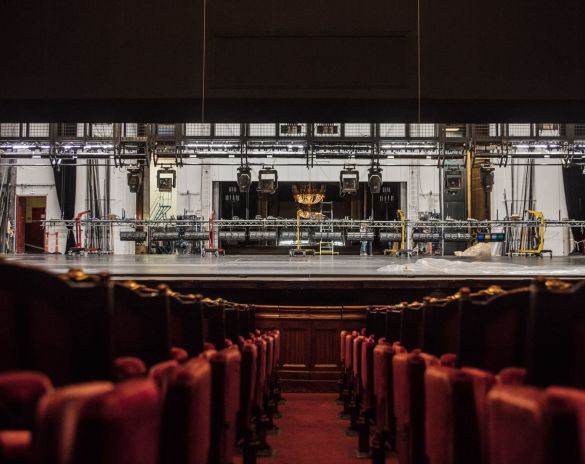
Major partners

Timepiece of the Paris Opera

Principal sponsor of the Paris Opera’

Principal sponsor of the Paris Opera Ballet

Grand mécène de l’Opéra national de Paris

AROP, Les Amis de l'Opéra

Nous contacter
For individual spectators
By telephone on 08 92 89 90 90 (€ 0.35 TTC / min from a fixed station excluding potential cost depending on operator) or +33 1 71 25 24 23 from abroad, Monday to Saturday from 9 a.m to 7 p.m
At the counters of Palais Garnier:
from 10 a.m to 6.30 p.m. At the corner of the streets Scribe and Auber - 75009 Paris.
At the counters of the Opera Bastille:
from 2:30 p.m to 6:30 p.m (130 rue de Lyon - 75012 Paris) from Monday to Saturday (except public holidays) and one hour before the beginning of the performances on Sundays and holidays.
Minimum purchase of 10 seats per performance. Information and advice by email, [email protected], or by phone at 01 40 01 80 54 (Monday to Friday from 10 a.m to 1 p.m and from 2 p.m to 4 p.m).
Immerse in the Paris Opera universe
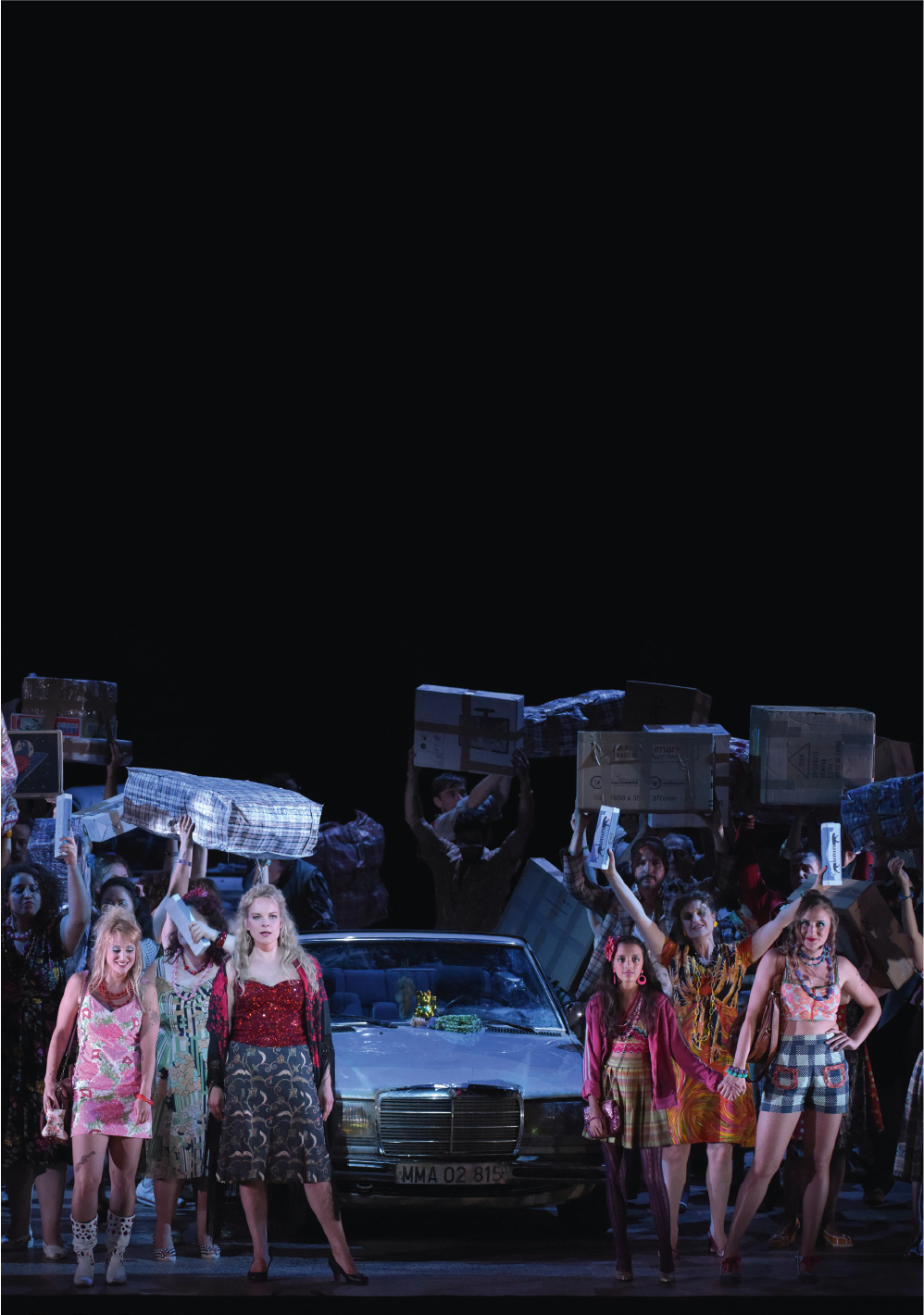
Business Space
Patronage and sponsorship.
- Your support
- The projects
- Your level of engagement
- The benefits you want to enjoy
Your public relations operations
- Premium tickets
- Business club
Rental of spaces and filming
- Rental of space Garnier
- Rental of space Bastille
Licensing program, advertising space and cultural engineering
- Licensing program
- Advertising space
- Cultural engineering
- The “Children dreams” Morning
- The Opening Gala and the “Gala des grandes voix”
Place de l’Opéra 75009 Paris
Place de la Bastille 75012 Paris

Download the application for free Opéra de Paris

Back to top

Place De La Bastille
About place de la bastille.
The Place de la Bastille is one of the most important squares in Paris . It is now a bustling square, frequented by locals and tourists alike and is also home to the Opera Bastille, one of the city's most popular concert venues. This fortress was used as a prison during the Middle Ages and the Renaissance, and some of the most famous political prisoners of France were held here, including Marie Antoinette and Voltaire.
The Place de la Bastille is a popular meeting place and destination for an evening out, with many bars and restaurants in the surrounding area. Over the years, the Place de la Bastille Paris has been captured in countless works of art, from paintings and sketches to photographs and films. It has also been mentioned in numerous literary works, both fiction and non-fiction. You can also visit the Opera Bastille, see the Bastille monument, explore Rue Saint-Antoine and explore the market for a complete experience.
- Eiffel Tower Tickets Online
- Palace of Versailles Entry Ticket
Things to Do at Place De La Bastille
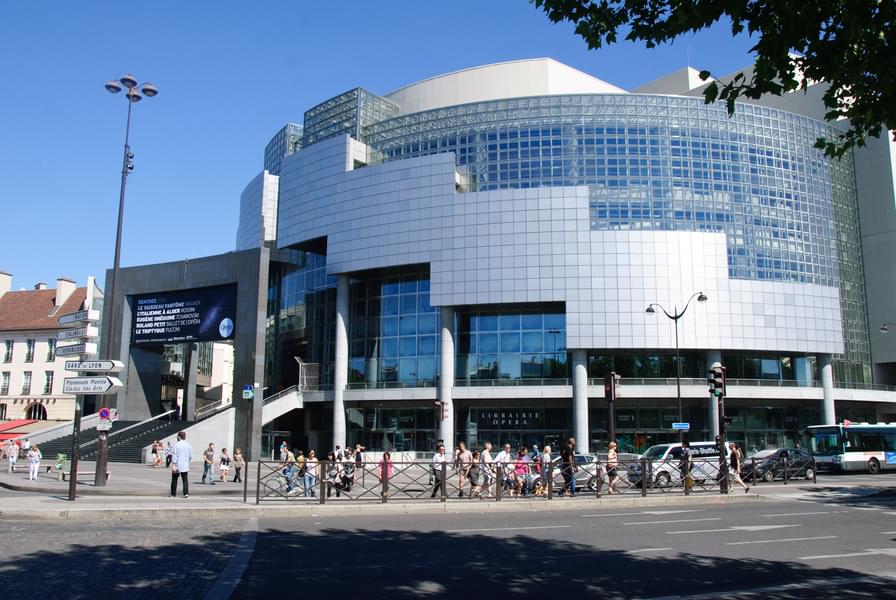
A visit to the Opera House should be high on your list of things to do and see while in Place de la Bastille. It is a beautiful building, and houses some of the most popular operas in the world. If you are not an opera fan, you can still enjoy the architecture of the Opera House by taking a tour of the facility.
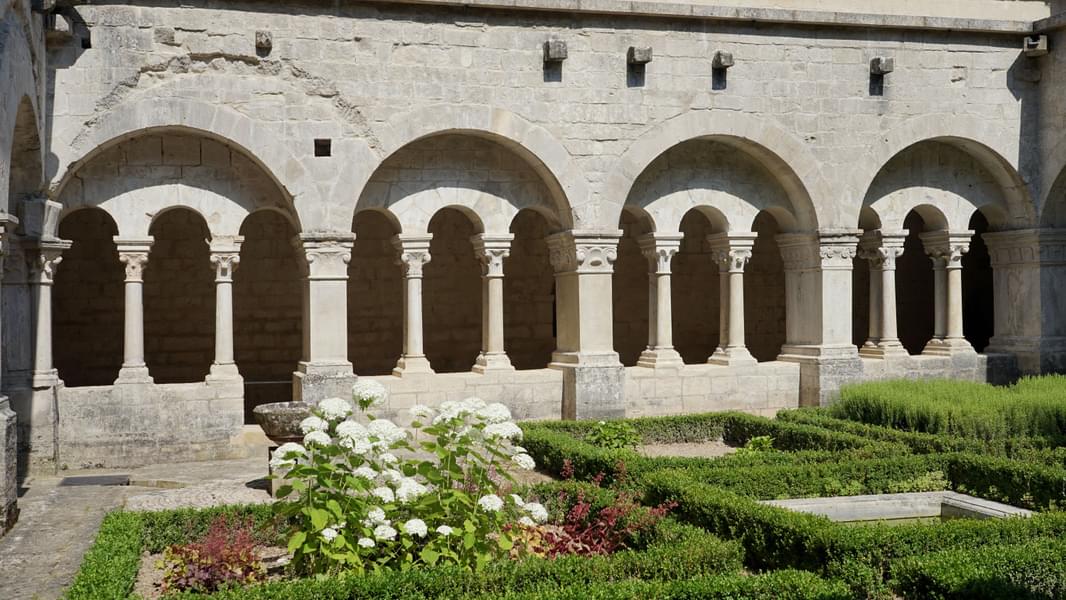
The Colonne de Juillet, also known as the July Column, is a monument located in the centre of the Place de la Bastille. The column was built in memory of those who perished during the 1830 Revolution. The column is topped with a golden “Spirit of Liberty'', which became an icon of revolutions to follow.
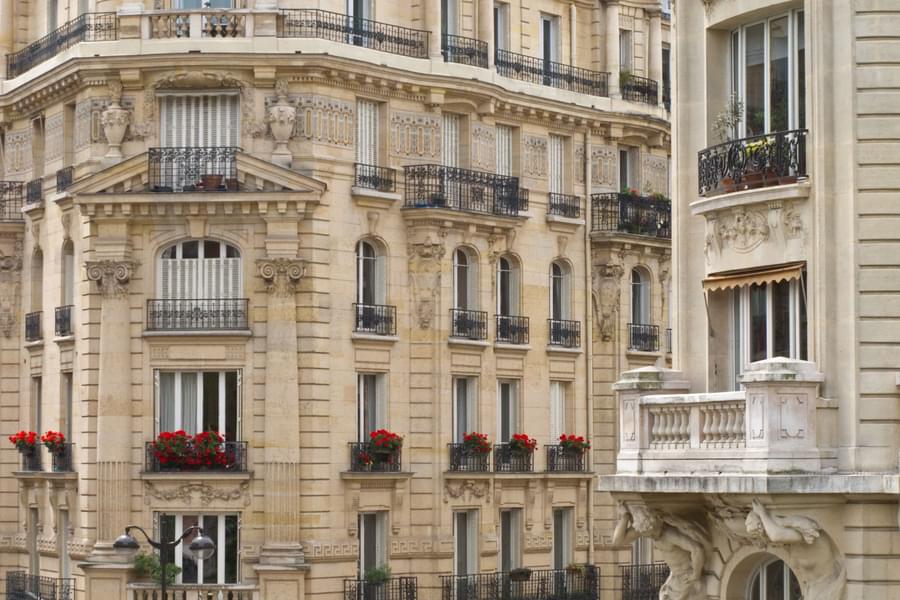
When you’re in the mood for a leisurely stroll, head to the Promenade Plantée. This elevated walkway, built on an old railway viaduct, stretches for nearly 2.5km from Bastille to Boissy-Saint-Léger. Along the way, you’ll enjoy gorgeous views of the cityscape and several parks and gardens.
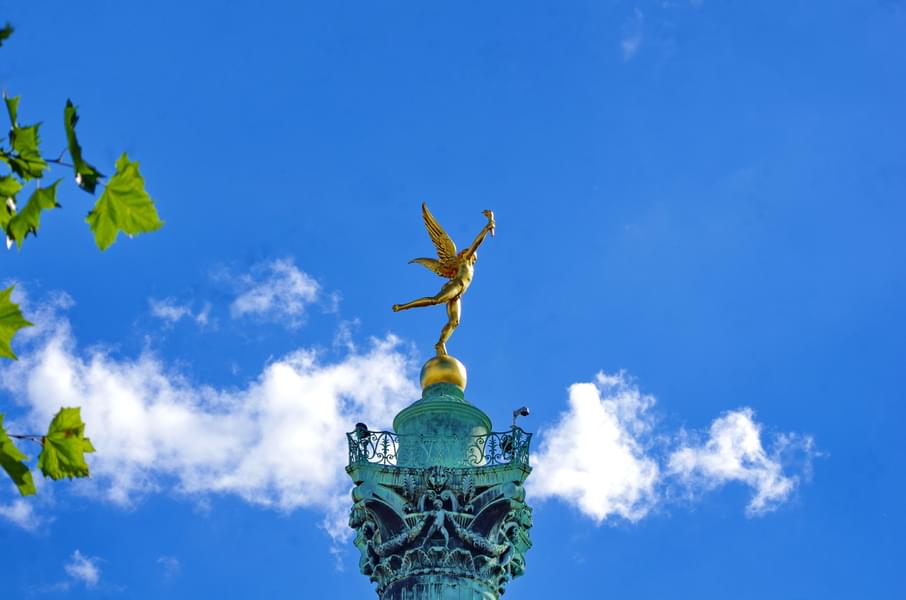
After exploring the Place de la Bastille, stroll around the nearby streets to see some of Paris' most iconic sights. The area is home to the Notre Dame Cathedral, the Louvre Museum, and countless other historical landmarks. If you're looking for a bite to eat, stop by one of the many cafes or restaurants in the area.
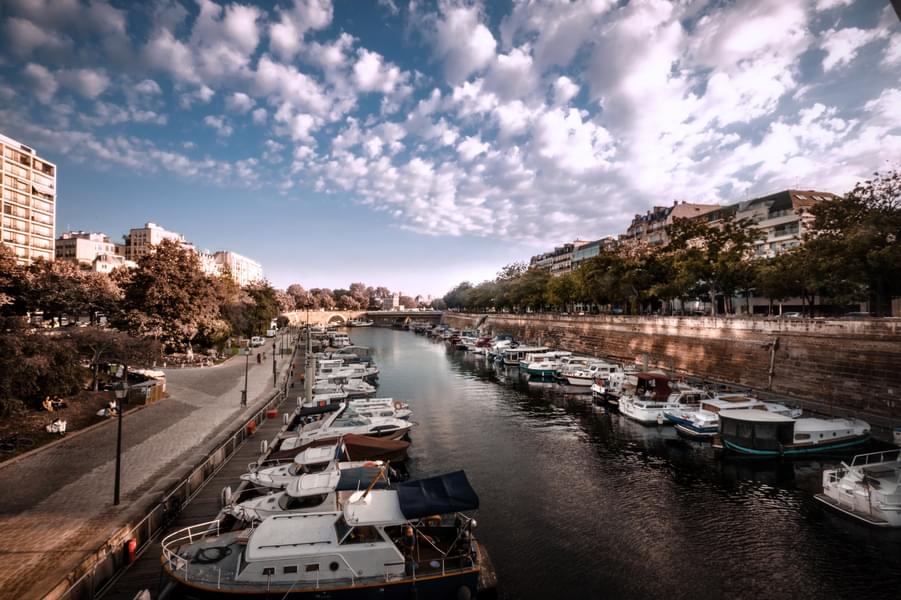
Place de la Bastille is home to one of the most popular tourist attractions in Paris – the Port de l’Arsenal. The port is a beautiful area to stroll around, with its old-fashioned boats and bridges. You can also take a boat ride on the canal, or go for a swim in the river. There are plenty of cafes and restaurants along the port, so you can stop for a bite to eat or a drink while you enjoy the view.
Plan your Visit to Place De La Bastille
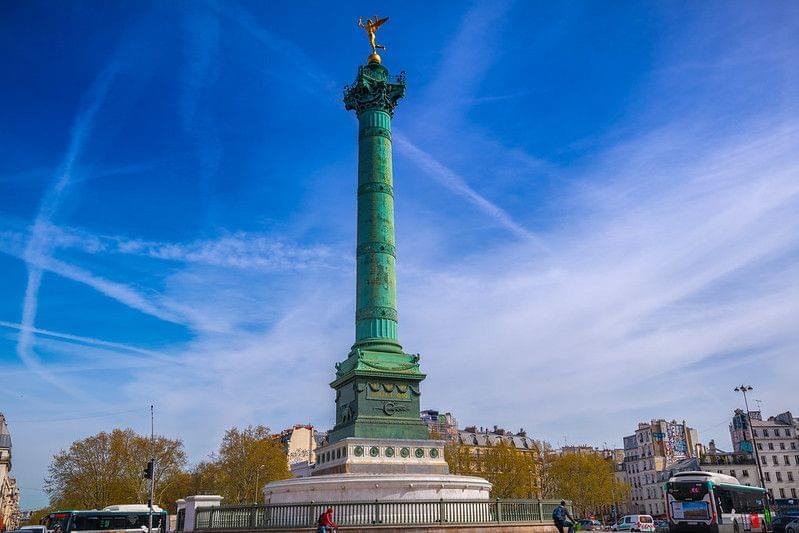
- Opening Hours:
It’s open for 24 hours. But if you want to enjoy it at its best, it is advised to visit Place de la Bastille between 4 pm to 6 pm.
Place de la Bastille, 75011 Paris, France
- Best Time to Visit:
The best time to visit Place de la Bastille is from June to August, the weather is warm and sunny making your trip more pleasant. However, if you want to avoid the crowds, September and October are also good months to visit. November through February are the coldest months, but you can still find plenty of things to do in the area.

To reach Place de la Bastille Paris by train, simply take Line H to Bastille station and follow the signs to exit onto Place de la Bastille. The journey takes just a few minutes and trains run frequently.
To get there by bus, take bus number 69, 72, 86 or 91, they will drop you at a walking distance from the square.
To reach Place de la Bastille Paris by metro, simply take Line 1 or 5. The journey takes just a few minutes and trains run frequently.
FAQ's of Place De La Bastille
Why is place de la bastille famous.
Place de la Bastille Paris is famous for being the home to Opera Bastille, a modern opera house that opened in 1989. It is a popular meeting spot for locals and destination for an evening outing for tourists.
Is the Place de la Bastille worth visiting?
Yes, the place de la Bastille Paris is worth a visit for its unique atmosphere, many attractions and central location.
What is the best time to visit the Place de la Bastille?
The best time to visit the Place de la Bastille is during the summer months, from June to August. This is when the weather is warmest and the days are longest.
What are the opening hours of Place de la Bastille?
Place de la Bastille is open 24 hours.
What are the popular attractions near Place de la Bastille?
The area is home to a number of popular attractions, including the Opéra Bastille, the Marché Bastille food market, and a number of trendy bars and clubs. When in the area explore the Colonne de Juillet, Symbol of Revolutions, browse boutiques and shops on Rue de Charonne, stroll on an Above-Ground Promenade and go dancing at a local club.
What to do in Paris in January?
There are plenty of things to do in Paris in January :
- Visit Eiffel Tower
- Explore Louvre Museum
- Discover the Catacombs Of Paris
- Checkout Centre Pompidou
- Enjoy Opera At Palais Garnier
Which are the other best places to visit in Paris?
- Wall of Love in Paris
- France Miniature
- Place Des Vosges
- L'église de la Madeleine
- Musee D'Orsay
Explore Paris
- Visitor's Guide
- Activities/Rentals
- Attraction Tickets

CITY PASS | GUIDED TOURS | ATTRACTION TICKETS
Contact Number: +33 1 47 27 91 35
Contact Email: [email protected]
Address: 18 Rue de la Paix, 75002 Paris, France
The content and images used on this site are copyright protected and copyrights vests with the respective owners.

Bastille in Paris: Your Ultimate Guide to the Vibrant 11th Arrondissement of Paris
*This post contains affiliate links, and I will earn a small commission if you shop through the links on my page. To read more, please see my affiliate disclosure .
I try to vary the neighborhood I stay in when I visit a city more than once, so I can get a better feel for the overall vibes of the place, rather than just one perspective.
Bastille in Paris is one of the neighborhoods I’m drawn to go back to though.
I stayed here for the first time in 2019, and it remains one of my favorite places to stay in Paris .
Located in the 11th arrondissement of Paris, just east of Le Marais , and across the Seine from the Latin Quarter , Paris’s Bastille neighborhood manages to achieve the (almost) impossible feat of being well located , affordable , and not overrun by tourists.
Today I’m going to take you through all the things to do in Bastille in Paris, along with quite the list of curated places to eat, drink, and stay (if you, too, become as obsessed with the Bastille area in Paris as I am)!
Let’s get started!
1. Explore the markets
2. stroll along the coulée verte rené-dumont , 3. place de la bastille , 4. rue crémieux, 5. attend the opéra bastille , 6. take a tour , 7. shop ’till you drop, 8. head further east to père lachaise, for breakfast , for lunch , for dinner , for everything else, where to stay in bastille.
- FAQs about Bastille in Paris

Delve into France
Check out the rest of my France posts and guides if you’re still planning your perfect trip. If you’re just visiting Paris, explore the Paris archives here!
Complete Neighborhood Guide to Bastille in Paris
Things to do in bastille .
The thing about smaller, more local neighborhoods in any city is that there isn’t always a lot “to do.” In Bastille, the best thing to do is often just hang out, walk around, and get lost in the ambience of Paris!
That being said, I’ve rounded up all the best things to do in Bastille , from the obvious to the off the beaten path. Let’s get into it!

There are two main markets you can explore and shop your way through in Bastille in Paris.
Open every day but Monday, Marché d’Aligre is mostly fruits and vegetables and other food stalls , but in the central square there’s often antiques and books and other fun things. Either way, it’s nice to walk through to get a taste for the local energy of the neighborhood!
💡 Insider Tip: One of my favorite ways to combine great food , new knowledge about a specific neighborhood, and chatting with locals into one fun activity is a market tour! Often, these will come with either a tasting at the market or (even better) a cooking class back at the guide’s home! In Bastille, I’ve found one of each for you! Check out this Marché d’Aligre tour & tasting or this Marché d’Aligre tour & cooking class with a Netflix-featured chef .
There’s also the Marché Bastille , which is a bit smaller and only open Thursdays and Sundays until the afternoon. I’ve spotted some seriously cute vintage furniture here before, and the food stalls are equally great.

If you’re looking for an off-the-beaten-path thing to do in Paris, Coulée Verte René-Dumont is one of my top recommendations. This elevated park actually inspired the famous High Line in New York City.
It’s a unique, three-mile-long, elevated path that’s covered in trees and other stunning plants. Make sure you don’t miss the Viaduc des Arts , which is nestled beneath a section of the upper green space. It houses high-end galleries and shops that are really great to browse.
P.S. This was originally known as the Promenade Plantée , so don’t be confused if you happen to hear it referred to this way!

If you’re staying in Bastille in Paris (or even just passing through, odds are that you’ll come across Place de la Bastille .
Once home to the infamous Bastille Prison , which was demolished after the French Revolution, the Place de la Bastille is now a central square and roundabout with a market on the weekends. In the center you can see The July Column , which is a monument to commemorate the Revolution of 1830.
Today, the square is often home to cultural events, concerts, and fairs. It’s also surrounded by tons of bars and restaurants. You can also stroll from here along the Faubourg Saint-Antoine, with its hidden courtyards, to the Place de la Nation .

Rue Crémieux is not necessarily something I would go out of my way to see, but it’s definitely cute if you’re nearby. It’s a block-long street full of colorful houses , and it has an almost quaint, or village-like energy.
It’s super cute and has a real contrast to the rest of the bustling city, but it has gained a ton of popularity recently, so sometimes it can feel a bit touristy/Instagram hotspot.
If you do go, be sure to be respectful: people live here, and don’t like how disrespectful the tourists can be!

While the Palais Garnier is much prettier, and has better acoustics, the Opéra Bastille is much larger, and fairly modern.
I would say that if you simply want to appreciate Parisian culture through the opera, you should choose the Palais Garnier, but if you’re a true appreciator of the art, then attending a show at the Opéra Bastille Paris could be a great and unique experience.
For anyone who isn’t that invested in opera, you can just check it out from the outside. There’s no way to put this kindly, but it’s like, famously ugly , and hated because of that. I don’t actually think it’s that bad, but it certainly sticks out.
Check it out for yourselves!

I love to take a tour when I travel, especially if it’s my first time somewhere.
It really helps orient you to the city, and usually gives you a local or historical (or both!) perspective you wouldn’t get if you just explored on your own.
I especially love when you can take tours that center food, or markets, because then you get double the perks (food and information)! This tour with a Bastille local will teach you loads about the neighborhood and leave full with the guide’s delicious food recommendations.

There are so many cute shops in the Paris Bastille neighborhood, and I encourage you to wander around the neighborhood on your own to find all the best hidden gems! But I’ll leave you with some of my favorite picks as well:
Les mots à la Bouche is a great bookshop with an English section. Acid Violette , Fringe upside , Come on Eileen , and Adöm are all second-hand and vintage stores , and m… céramique is a stunning ceramic boutique and workshop. Finally, Heart Beat Vinyl , Le Silence de la Rue , and Music Avenue Paris are all great vinyl shops.

Located just on the eastern edge of Bastille you’ll find Père Lachaise , the largest cemetery in Paris. While a cemetery might seem like a strange destination for sightseeing, this one is actually lovely (it’s also a very popular Paris attraction).
Père Lachaise home to a ton of famous graves , including Edith Piaf, Jim Morrison, Oscar Wilde, Molière, and (our purpose for visiting) Gertrude Stein.
Although it’s such a popular place to visit, the cemetery is luckily very peaceful. It’s gigantic, so you will see several walking tours about but never really any huge crowds. There are also some nice seating areas to take in the views of Paris.
💡 Insider Tip: It can actually be really difficult to locate the graves of specific people you’re looking for. I cannot overstate just how crowded each segment of the cemetery is!! To find your way, I definitely recommend either taking a guided walking tour of Père Lachaise or, if you’d rather some solitude, a downloadable audio tour .
Where to Eat in Bastille
There are so many places to eat in the Bastille area in Paris that it felt impossible to narrow them all down, but boy did I try!
Below you’ll find all my favorite places, most of them I’ve gone to, some of them I’m desperate to go to, all of them I stand behind! I gave a little description of why I’d go there, and they’re all linked to Google Maps (one of my ride or die travel resources ).

- Boulangerie Maison Letissier – great morning pastries, also good for lunch (premade baguettes)
- Passager – trendy spot for more American style brunches
- La Pâtisserie Cyril Lignac – Paul Bert – best for their fancy pastries
- Boulangerie bo – best for pastries, great service, amazing croissants
- Chambelland – pastries, somehow both fancy and unpretentious
- Tapisserie – great pastries, very small space
- Blé Sucre – often said to have the best croissants in Paris, though I prefer their madeleines
- Brother Sister Brunch – American style

- Ten Belles Bread – best for lunch: they have premade sandwiches, but good for mornings too
- East Mamma – famous pizzeria and Italian restaurant
- Bistrot Paul Bert – traditional French, lunch or dinner
- Le Pure Cafe – open all day, traditional French bistrot
- Le Café des Chats – cozy cafe with light food and many cats

- Septime – contemporary French with seasonal dishes
- Charletperrin – traditional French
- Le Chalet Savoyard – mountain-style restaurant serving fondue and raclette (among others)
- The Café Français – brasserie perfect for people watching (open all day)
- Waly-Fay – upscale Senegalese food

- Bluebird – retro style cocktail bar
- Le Calbar – cocktails
- Fréquence – cocktails and vinyl records
- Au Lèche-Vin – dive bar
- Le Caves de Prague – casual wine bar
- Ici-même – cozy wine cellar
Staying in the Paris Bastille neighborhood is one of my favorite hacks for visiting the city! Want to stay within walking distance of the Marais and Canal Saint-Martin (two of the other best neighborhoods in Paris ), at a fraction of the cost?
If so, staying at a lovely Bastille Paris hotel is a no-brainer!
🛏️ Check out my full list of the best boutique Paris hotels in other neighborhoods! 🛏️

Hôtel Exquis
€ | 3 Star | “Surrealist” Chic | On a Trendy Street
I had the pleasure of staying at Hôtel Exquis myself a couple of years ago—the time I fell in love with Bastille! This place is definitely quirky. It was designed by setting eight artists free at the Saint-Ouen flea market and cobbling together their finds in unique and exciting ways the hotel itself describes as surrealist. I see it. It’s accommodation on the more basic end for sure, but still an excellent (cheap) stay!
Photo: Booking.com

Hotel Bastille Speria
€ | 3 Star | Sneaky Marais Stay
Situated only a few steps from Place de la Bastille, Hotel Bastille Speria is actually right on the edge of the Marais itself. A slightly more basic hotel that still manages to cultivate a modern, on-trend vibe with its decor, this place is the perfect base for those planning to explore both neighborhoods.

Le Petit Beaumarchais
€ € | 4 Star | Terrace Rooms | Full Spa
Once again located on the border between the Marais and Bastille in Paris, Le Petit Beaumarchais is a calming, cozy retreat from the hustle and bustle of Paris. Carefully thought out design elements add warmth to every room, and some even have private balconies. The spa itself offers a sauna, massages, and a small soaking pool, and the hotel is also located quite close to several metro stations!
F AQs about Bastille in Paris
Is it worth visiting bastille.
Yes! It’s definitely worth visiting Bastille in Paris. It’s definitely the type of neighborhood you want to spend some time in if you, like me, value experiencing a city like a local, and would rather explore an area slowly, than simply visit places with lots of major tourist attractions.
While it was originally home to the infamous Bastille prison, Bastille is now often described as a bit hipster, cool/trendy, and off the beaten path —and I definitely agree! You’ll get a much more local vibe here than in neighboring areas, and the businesses are usually packed full of Parisians enjoying their days.
Bastille is home to a lot of great restaurants, markets, and shops that you can explore while taking in the stunning Haussmann buildings.
It’s also near so many other incredible neighborhoods, and is home to the really cool elevated park that inspired the High Line in New York.
Is the 11th arrondissement in Paris a good place to stay?
Yes, the 11th arrondissement in Paris is a great place to stay. While it’s not as central as its neighbors in Le Marais or Latin Quarter , it’s only just a bit further out, and the prices definitely make up for the little extra distance.
I would personally aim to stay in Bastille in the 11th arrondissement of Paris, because it’s still quite close to the action, but staying a bit further out can be nice sometimes too. Bastille is definitely one of my favorite places to stay in Paris because it gives you a little less of the tourists, and a little more local energy.

What area of Paris is Bastille in?
Bastille is situated mostly in the 11th arrondissement of Paris, on the east side of the city.
The neighborhood is just across the river from the Latin Quarter and just to the east of Le Marais .
This makes for a perfect balance between being centrally located and off the beaten path.
Ready to explore the area of Bastille in Paris?
Writing this has honestly made me jealous that you’ll be in Bastille soon! I need to plan another trip. Until then, be sure to tag me in any and all travel content, and let me know in the comments if there’s anything you think I missed!
If you’re still planning, be sure to check out all my other posts about Paris so you can have the best trip ever.
Liked this post? Pin it for later!

Le Marais Area of Paris: Best Things to Do & Eat in the 3rd
Leave a reply cancel reply.
Your email address will not be published. Required fields are marked *
Save my name, email, and website in this browser for the next time I comment.
Sign me up for the newsletter!
You May Also Like

How to Spend a Perfect Long Weekend in Toulouse: 3 Day Itinerary

The Latin Quarter in Paris: 11 Authentic Things to See & Do in the 5th Arrondissement

St-Germain-des-Prés Paris: 9 Best Things to See & Do

Canal St Martin Paris: Insider Guide to the Vibrant 10th arr.
Privacy overview.
- Sites and Monuments in Paris
- Sites and Monuments in France
- Things to do in Paris
- Things to do in France
- ACCOMMODATION
- RENTING A CAR
- CHEF SERVICE
- CONCIERGERIE SERVICES
- TRAVEL TIPS
- TRAVEL LUGGAGE
- Arrondissements
- Monuments & Landmarks
- Secret & Offbeat Paris
- More about Paris...
- Île de France
- More Regions of France...
- Aix-en-Provence
- More Cities...
- Castles and Palaces
- Cathedrals and Churches
- Gardens and Parks
- World Heritage Sites
- Villages of France
- Autumn / Fall
- Mardi-Gras / Carnival
- April Fools' Day
- Bastille Day
- All Saints' Day
- More Holidays and Celebrations...
- National Anthem
- Gallic Rooster
- National Day
- Motto of France
- Motto of Paris
- Coat of Arms
- French President
- Le Croissant
- French Cheese
- French Wines
- Christmas Food and Recipes
- French Nursery Rhymes
- France geography
- FUN QUIZZES
- MOVIES AND MUSIC
- FRENCH LANGUAGE
- BOOKS BY FRENCH MOMENTS
- BOOK RECOMMENDATIONS
- The Secrets of the Eiffel Tower
- The Gems of Paris
- Office desks and chairs
- Travel suitcases
- LEARN FRENCH WITH PIERRE
- THE STORY SO FAR
- WORK WITH US
- THE NEWSLETTER
- HOW TO SUPPORT US
- PHOTO USAGE POLICY
Tracing the Remains of the Bastille Fortress in Paris
Last Updated: 30 June 2023
The Bastille Fortress is an ancient monument whose name spread worldwide following its storming by the Revolutionaries on 14 July 1789.
This day, engraved in the collective memory of the French, is known as " Bastille Day " in English, while in French, it refers to the "Fête Nationale" or simply "14 July".
The former military citadel, which later became a state prison, may have disappeared from the Parisian landscape, but you can find a few traces still scattered across the French capital. After describing the infamous fortress, we will discover these hidden treasures in Paris (and also in France and the USA!).

About the Bastille Fortress in Paris
Let's start by describing the Bastille fortress in Paris to understand which monument we're talking about.
A small castle
The Bastille was originally a fortification known as a "bastide", consisting of a châtelet with two towers, located at the Saint-Antoine Gate in Charles V's rampart (today Place de la Bastille ).
Historical reconstruction of the Bastille in 1420 by Théodore Hoffbauer (1839-1922). Musée Carnavalet
Hastily erected between 1356 and 1358 during the provostship of Étienne Marcel, the Bastille Sainte-Antoine was later transformed into a full-fledged urban castle by King Charles V in 1367.
This new construction comprised eight towers, the first two of which were raised to form an independent bastille with its own garrison.
Its main role was to defend the Porte Saint-Antoine and the ramparts to the east of Paris, which had become more vulnerable. The Bastille also served as protection for the King in the event of an uprising by the Parisian people.
For example, it secured the route between the royal residence at the Hôtel Saint-Pol and Vincennes Castle, where King Charles V wanted to establish the administrative centre of the kingdom.
Bastille Fortress and Saint-Antoine Gate (right) in 1715
Dimensions and towers
The fortress was 66 metres long, 34 metres wide and 24 metres high at the towers. It was surrounded by a moat 25 metres wide and 8 metres deep, fed by the waters of the Seine.
The Eight Towers of the Bastille Fortress in 1750
The eight towers were called :
- Corner Tower [ Tour du Coin ] (located on the corner of rue Saint-Antoine) ;
- Chapel Tower [ Tour de la Chapelle ] (in the 15th century, the chapel was located here, later moved to the other side of the courtyard between the Tours de la Liberté and de la Bertaudière);
- Treasure Tower [ Tour du Trésor ] (in 1580, Henri IV transferred the royal treasury here, which Marie de Médicis had spent during her regency);
- County Tower [ Tour de la Comté ] (possibly named after the Viscounty of Paris);
- Tour de la Bertaudière or sometimes Bretaudière (the mason Berthaud fell to his death during its construction, this is the tower of the Iron Mask);
- Tour de la Bazinière (Macé Bertrand de la Bazinière, treasurer of the Savings Bank and arrested at the same time as Fouquet in 1661, was locked up there for four years) ;
- Liberty Tower [ Tour de la Liberté ] (following an assault by Parisians around 1380 to the cry of "Liberté! Liberté!", it was in this tower that Hugues Aubriot was imprisoned under Charles VI), and ;
- Well Tower [ Tour du Puits ].
Floor map of the Bastille Fortress
An infamous prison
The Bastille was occasionally used as a prison during the reign of Louis XI.
During the turmoil of the Wars of Religion, it was used as a prison by some of the most influential figures in the kingdom, including François de Montmorency (1574-1575), Charles d'Angoulême (1604-1616) and the Prince de Condé (1616-1619).
Under the rule of the League, the Bastille housed the writer Montaigne (1588).
Although the Bastille was mainly used for state prisoners, King Henry IV kept the royal treasury there.
Cardinal de Richelieu transformed it into a state prison to which the lettres de cachet, letters signed by the King (or more often by his ministers) ordering imprisonment without trial, are still attached.
Famous prisoners
On 18 June 1663, Nicolas Fouquet , Superintendent General of Finances, accused of embezzlement, was transferred from Vincennes to the Bastille by order of the King, countersigned by Le Tellier.
The most famous prisoner of the Bastille was the Man in the iron mask , who was interned there on 18 September 1698 at three o'clock in the afternoon. He wore a black velvet mask tied tightly around his face and was housed in the Berthaudière Tower. He died on 19 November 1703.
Voltaire , aged 22, was imprisoned in the Bastille on 17 May 1717 for writing poems against the regent and the Duchess of Berry, who was in an advanced state of pregnancy at the time and had retired to the Château de la Muette to give birth.
The sulphurous Marquis de Sade was held there for five and a half years.
Man with the iron mask © Prosopee - licence [CC BY-SA 3.0] from Wikimedia Commons
Nicolas Fouquet
Marquis de Sade
A comfortable prison?
The Bastille was a relatively comfortable prison for people of quality (nobles, wealthy citizens) imprisoned in the 42 cells of the fortress. Royal prisoners were allowed to correspond with the outside world, receive visitors and enjoy relative freedom of movement within the fortress.
In 1789, there were only seven prisoners in the Bastille and their conditions of incarceration were fairly flexible.
A monument in the Paris cityscape
In reality, the Bastille was a financial drain for Louis XVI, not only because of the governor's salary but also because of the upkeep of the staff and the food. Minister Necker wanted to have it demolished as early as 1784. In the mid-1780s, the King's town planners envisaged its demolition to create a pleasant square near the Saint-Antoine district.
The people no longer feared this building on the eve of the French Revolution. Like any imposing fortress, it marked the Parisian landscape and was a symbol of royal despotism.
The "Cahiers de doléances" of the city of Paris, drawn up by members of the parliamentary rebellion, called for it to be demolished and replaced by a square with a monument to Liberty.
The Bastille Fortress and Place des Vosges in the Turgot Map of Paris (1734-1736)
The storming of the Bastille
Today, the storming of the Bastille is regarded as the symbol of the French Revolution, and marks its beginning.
Just after the storming of the Invalides for arms and cannon, the people of Paris stormed the Bastille Fortress on the 14th of July, 1789. The vast majority were rioters from the Faubourg Saint-Antoine, who had come in search of gunpowder and ammunition.
To them, the fortress also symbolised royal power.
Storming of the Bastille - Anonymous painter
The defense of the Bastille Fortress
On that day, a garrison of 114 soldiers defended the Bastille.
Delegations tried to negotiate with the governor of the Bastille, Bernard-René Jourdan de Launay, but to no avail.
After the Revolutionaries stormed the fortress, they took the governor to the Place de Grève, where he was lynched, stabbed, shot and had his head cut off by a butcher.
The arrestation of the Bastille governor - Painting by Jean-Pierre Houël
The treasure of the Bastille recovered
The Revolutionaries seized the Bastille archives and the furniture and crockery and scattered some of it in the ditches of the fortress.
From the 15th of July, the municipal authorities attempted to recover them.
Most of them were transferred to the nearby Bibliothèque de l'Arsenal in 1798. Since the nineteenth century, 60,000 files have been catalogued, mainly comprising lettres de cachet, interrogations, petitions to the king, police reports and correspondence from those imprisoned.
Inside the Pavillon de l'Arsenal © French Moments
The remains of the Bastille Fortress
The memory of the fortress has remained in the mind of Parisians and French people alike.
The Bastille has remained a name associated with a significant event in French history and the place name of a famous Parisian site: the Place de la Bastille.
In the capital and elsewhere in France, the remains of the Bastille can be found like hidden treasures. Here are a few interesting leads:
The Bastille miniatures
A private contractor, Palloy, began demolishing the fortress the next day, on 15 July 1789. However, the Bastille did not disappear from the Parisian landscape immediately. In fact, the demolition work lasted until 1806.
The demolished Bastille Fortress in July 1789
Palloy had the brilliant idea of selling carved stones representing the Bastille in miniature. Following the creation of the départements at the end of 1789, Palloy decided to make models of the Bastille out of the stones of the fortress, for the 83 new administrative centres ( chefs-lieux or préfectures ).
The scale models were around 40cm high, 100cm long and 60cm deep.
Models were also given to ministers, Louis XVI and foreign personalities such as George Washington (his copy is on display at his estate, Mount Vernon).
You can admire one of them in the Carnavalet Museum , Paris.
Bastille Miniature at Carnavalet Museum © French Moments
The miniatures in the Province
Other places outside of Paris include:
- Auch (Archives départementales du Gers)
- Chartres (Musée des beaux-arts)
- Coutances (Musée Quesnel-Morinière)
- Nancy (Musée lorrain)
- Nantes (Musée Dobrée)
- Pau (Archives départementales des Pyrénées Atlantiques)
- Quimper (Musée départemental breton)
- Le Puy-en-Velay (Musée Crozatier)
- Rouen (Musée départemental des Antiquités)
- Tours (Hôtel Goüin)
- Tulle (Garden of the Musée du Cloître)
- Valence (Musée des beaux-arts)
- Vannes (Archives départementales du Morbihan)
- Versailles (Salle du Jeu de paume)
- Vizille (Musée de la Révolution française)
Place de la Bastille
Of course, you would have to go to the Place de la Bastille to unearth the secrets of the ghost fortress!
The traces of the Bastille
Stand at the corner of Rue Saint-Antoine and Place de la Bastille. On the ground, you'll see a line of cobblestones larger than the others. They mark the outline of the Bastille.
Marks of the fortress on Place de la Bastille © French Moments
Number 3: A tourist hoax?
At number 3 on the Place de la Bastille, you will see a plaque on the façade indicating the position of the old fortress with the current square and thoroughfares. You are standing on the site of the Treasure Tower, which served as the royal vault.
Commemorative Plaque Place de la Bastille © French Moments
On the same building, look up at the semi-circular section that forms the corner. You'll see an incredible detail: a cannonball mark with the inscription "souvenir du 14 juillet 1789".
© French Moments
Nearby, you'll see the date on which the Haussmannian building was completed: 26 May 1871, 80 years after the cannonball arrived!
Is this a tourist hoax? Or was the stone hit perhaps reused in the construction of the building? Nobody knows!
Métro Station Bastille
You can find a piece of the Bastille moat counterscarp wall on a platform in the station of the same name on métro line 5 (the station towards Bobigny - Pablo Picasso).
The other side of this wall can be seen behind glass in the metro corridors, in a staircase leading from the entrance on Boulevard Bourdon.
The remains of the Bastille's foundations in the Métro Station Line 5 © 石川 Shihchuan - licence [CC BY-SA 2.0] from Wikimedia Commons
Rue Saint-Antoine
The entrance to the fortress was off today's Place de la Bastille, at number 5, Rue Saint-Antoine.
This was the entrance to the forecourt of the Bastille. It was here that the attackers broke through on 14 July 1789.
A commemorative plaque on the wall commemorates that historic day.
Bassin de l'Arsenal
The Bassin de l'Arsenal is nothing more than the old widened ditch that carried water from the Seine into the Bastille moat.
An entire section of the wall can still be seen on the right-hand side facing the Seine. This former ditch wall is now used as a retaining wall for the boulevard Bourbon.
Port de l'Arsenal and July Colomn. The retaining wall is to the left © French Moments
Part of the Bastille's wall. Photo by Tangopaso [Public Domain from Wikimedia Commons]
Square Henri-Galli
Hidden away in the greenery of Square Henri-Galli ( 4th arrondissement , métro station Sully Morland ), you could almost pass them by without taking any notice. Yet they are the most important remains of the Bastille.
The remains of the Liberty Tower in Square Henri-Galli © LPLT - licence [CC BY-SA 3.0] from Wikimedia Commons
In 1899, when line 1 of the Paris metro was being built, remains of the fortress were discovered at no. 1 rue Saint-Antoine.
The discovering of the Bastille Foundations when building Metro Line 1
The foundations of the Tour de la Liberté (where the Marquis de Sade was imprisoned) were dismantled and reconstructed in the Square Henri-Galli.
The remains of the Liberty Tower in Square Henri-Galli circa 1900
Pont de la Concorde
The Pont de la Concorde is a bridge in Paris that crosses the Seine between the Place de la Concorde (right bank) and the Quai d'Orsay (left bank).
Pont de la Concorde, Paris © French Moments
Before the Revolution, it was known as the "Pont Louis-XVI" when work began in 1787 before being renamed the "Pont de la Révolution" in 1792 and then the "Pont de la Concorde" in 1830.
Architect Jean-Rodolphe Perronet had to work on construction amid the revolutionary turmoil. To do so, he used cut stones from the demolition of the Bastille Fortress, stormed on 14 July 1789, to build the upper part of the bridge "so that the people could continually trample the ancient fortress underfoot".
Construction was completed in 1791.
Pont de la Concorde © French Moments
Pontoise, Val d'Oise
If you happen to visit Pontoise, north-west of Paris, look for the Bastille stone containing an extract from the Declaration of the Rights of Man and of the Citizen at the town hall.
Bastille Stone in Pontoise Town-Hall © Parisette - licence [CC BY-SA 3.0] from Wikimedia Commons
Chambéry, Savoy
The Musée Savoisien in Chambéry ( Savoy ) has a stone of the Bastille fortress on display. Palloy offered (sold?) it to the commune of Chambéry in 1793.
Bastille Stone in Chambéry - Musée Savoisien (Public Domain from Wikimedia Commons]
Munich, Germany
The Bavarian National Museum in Munich, Germany also has a Palloy stone of the Bastille fortress on display which dates back to 1791.
Bastille Stone on diaplay at the Bayerisches Nationalmuseum München [Public Domain from Wikimedia Commons]
L'Isle-Jourdain, Occitania
The Musée Européen d'Art Campanaire (European Museum of Bell Art) in L'Isle-Jourdain (Gers) currently houses the former carillon of the Bastille Fortress.
The Bastille Carillon at the Bell Museum in L'Isle Jourdain © Campanophile - licence [CC BY-SA 3.0] from Wikimedia Commons
Mount Vernon residence, USA
Angry citizens of Paris turned over the main prison key of the Bastille Fortress to the thirty-two-year-old Marquis de Lafayette shortly after the storming of the Bastille.
Lafayette then crossed the Atlantic to America in March 1790 with the Bastille Key as a gift to George Washington. The President of the United States received the key in the late summer of 1790, which was first publicly shown in New York and then showcased in Philadelphia. George Washington transferred the Bastille key to Mount Vernon residence in 1797, where it is on display today.
The legacy of the Bastille Fortress
As we conclude our journey tracing the remains of the Bastille Fortress, we are reminded of the enduring legacy and significance of this iconic stronghold.
By exploring its walls' vestiges and immersing ourselves in its historical context, we have connected with the spirit of revolution that once coursed through its chambers. The Bastille Fortress is a testament to the power of collective action and the pursuit of liberty.
As you stroll through the streets of Paris, may the echoes of the Bastille inspire you to delve deeper into the captivating history beneath the surface of this enchanting city.
Place de la Bastille © French Moments
If you enjoy the reading, please share this article on Facebook, Twitter or Pinterest!
About the author
Pierre is a French/Australian who is passionate about France and its culture. He grew up in France and Germany and has also lived in Australia and England. He has a background teaching French, Economics and Current Affairs, and holds a Master of Translating and Interpreting English-French with the degree of Master of International Relations, and a degree of Economics and Management. Pierre is the author of Discovery Courses and books about France.
Like it? Leave a comment!
Your email address will not be published. Required fields are marked
Name * * * * * * * * * *
E-mail * * * * * * * * * *
Website [optional]
Save my name, email and website in the browser for my next comment.
This site uses Akismet to reduce spam. Learn how your comment data is processed .
Transparency: Some blog posts and pages may contain affiliate or sponsored links. If you are planning a trip, the use of these links helps us to run the site. There is no additional cost to you. All you have to do is click on the link and any booking you make is automatically tracked. Thank you for your support!
Escape to France with every email! Get insider insights, travel guides, cultural gems delivered and exclusive offers to your inbox twice a week. Your journey to Paris and France begins when you sign up!
SUBSCRIBE TO THE NEWSLETTER AND GET THE FREE EBOOK
20 OFFBEAT PLACES IN PARIS
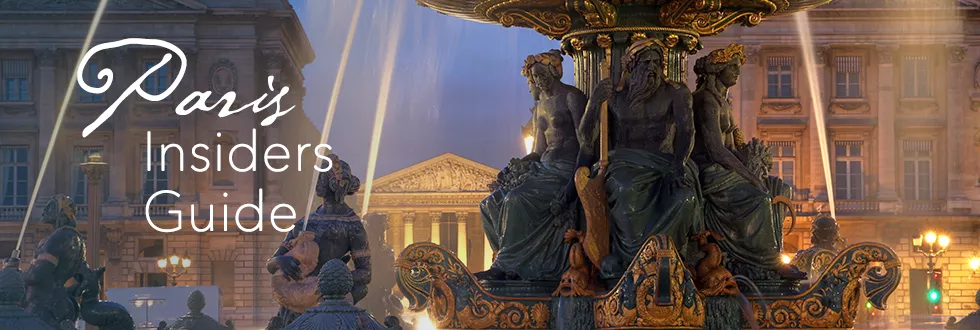
What's On in Paris
Performances.

- Christmas in Paris
- The Eiffel Tower
Monuments in Paris
Historic churches, history museums.
- The Louvre Museum
- Musée d'Orsay
The Top Paris Museums
Artist museums, more paris museums.
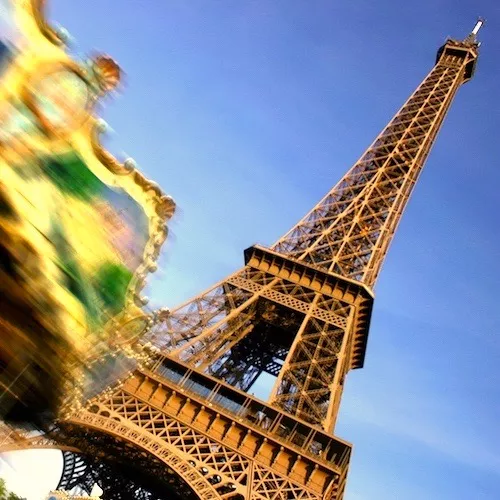
Eiffel Tower Skip-the-Line
The 6 essential day trips, 10 more iconic day tours, what to do in paris, seine river cruises, night in the city of light, paris city tours, walking tours, your own private paris.
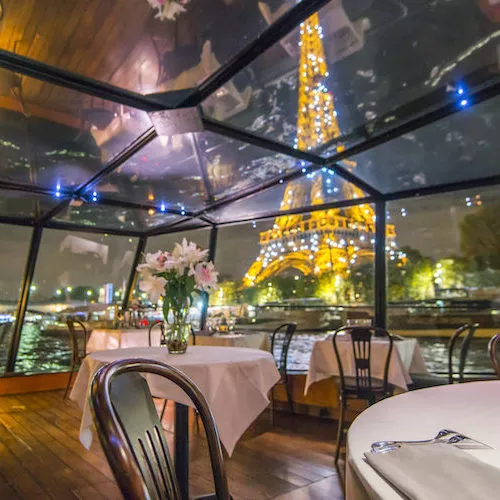
- Romantic Dinner Cruises

The Top Left Bank Hotels
The best hotels in paris, boutique & romantic, top hotels near…, preferred 5-star hotels, the palaces of paris, affordable hotels.
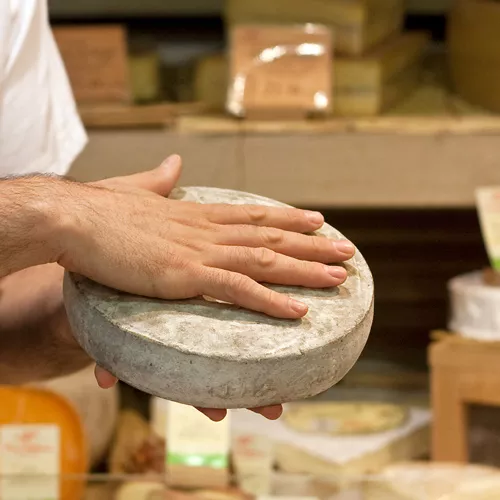
Le Marais Food & Wine Tour
Food & wine activities, the foods of paris, memorable paris dining, best paris restaurants, paris restaurant guide.
- Bistros & Brasseries
Top-Rated Restaurants

- Visit the Champagne Region
Paris Attractions
You ask, we answer, visiting burgundy, paris miscellanea, top ten lists, unusual paris sights, paris gardens & parks, the paris explorer.

- What's On When You're Here
Airports & Transfers
Getting around paris, paris travel guide, paris essentials, train travel, paris arrondissements, from prison to opera house – 11 surprising facts about the bastille.
It was once a dreaded prison , now it's only a column. On July 14, 1789, 633 angry French citizens stormed the Bastille in Paris (a prison somewhat equivalent to the Tower of London ), capturing its munitions, releasing its seven prisoners, lynching the governor and demolishing the fortress. This was the dramatic start of the French Revolution.
Our Top-Rated Paris Bastille Experiences
1. A Grand Opera at Opera Bastille… An experience you won't ever forget
2. The French Revolution Walking Tour… Visit the sites & relive the events
3. Cruise Canal Saint-Martin & the Seine River… Sail under Place de la Bastille!
4. Taste of the Marais Food Tour… Fromageries, boulangeries, charcuteries, wine shops & more
1. Experience a Grand Opera at Opera Bastille…
2. The French Revolution Walking Tour…
3. Cruise Canal Saint-Martin & the Seine River…
4. Taste of the Marais Food Tour…
A Symbol Of Tyranny
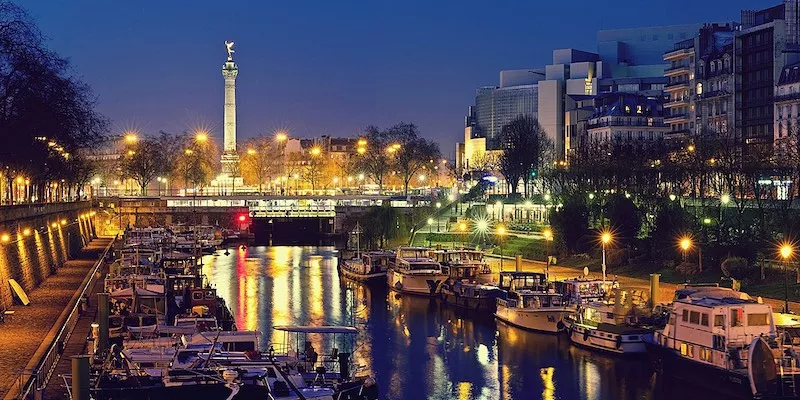
Yes, there were only seven prisoners, but the Bastille prison tower had become a symbol of tyranny. The monument that stands today in the center of the Place de la Bastille commemorates not the original French Revolution, but another, later, revolution. Today, the term "Bastille" describes a column, a place , an opera house, an historic event, and an annual celebration.
Discover What's On When You're Here...
Discover what's on when you're here, the bastille column.
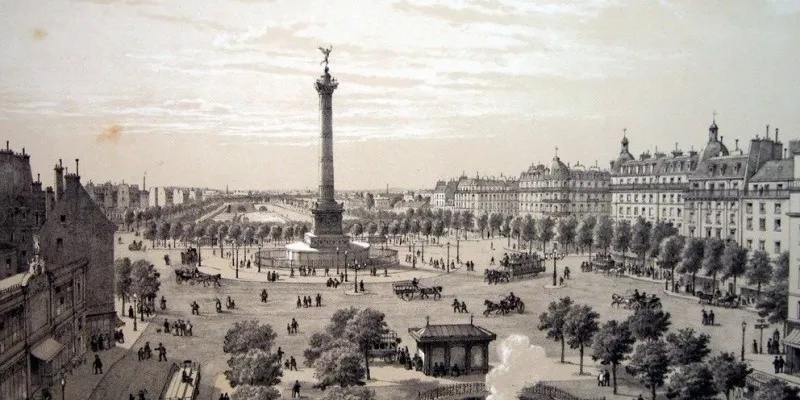
It was during this revolution — called la Trois Glorieuses — that the French monarchy was finally overthrown.
The column you see today in the centre of Place de la Bastille has nothing to do with the French Revolution of 1789. The Colonne de Juillet was erected at the former location of the Bastille prison (today the juncture of the 4th, 11th, and 12th Arrondissements) as a monument to another revolution that took place in 1830. In this so-called July Revolution , which lasted only three days, the French absolute monarchy was finally overthrown.
French king Charles X abdicated on August 2, 1830 and a constitutional monarchy was instituted. (How France ended up with yet another king after the revolution is another story.) The current column stands as a symbol of liberty and a memorial to those who took part. Constructed of heavy cast drums it features an interior spiral staircase. Names of Parisians who died during the 1830 revolution are engraved in gold on the column. Atop the column is the god Mercury astride a gilded globe.
Romantic Dinner Cruises In Paris
The french revolution walking tour.
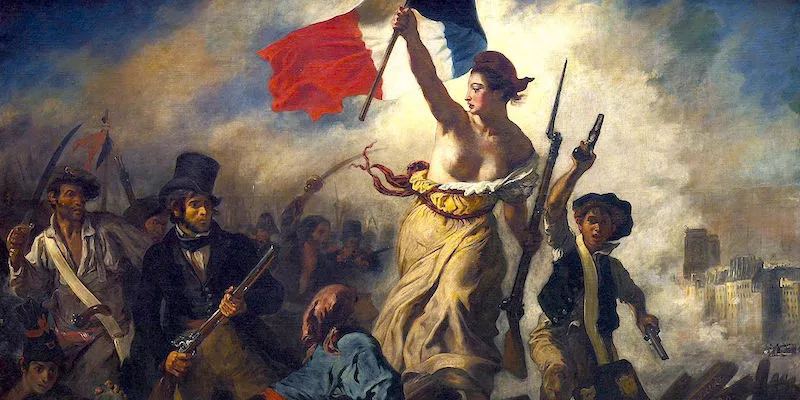
You can relive the events of the French Revolution on this historical Paris walk, as you visit the sites of that historic era, including the Bastille, and learn about its fascinating history, like the capture of Marie Antoinette and Louis XVI.
Experience the Splendor Of Versailles
Opera de la bastille.
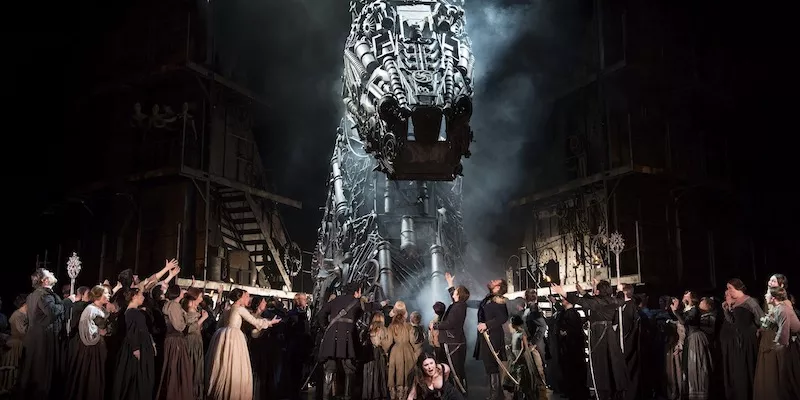
Exactly 200 years after the famous riot that started the French Revolution, this landmark opera house was inaugurated in 1989 by President Mitterrand. Today, it is the main opera house of Paris, and one of the largest in Europe. However, it has not been without controversy.
Some initial attendees complained about the acoustics, other people complained about the Burgundian stones falling off the sides of the building. Complain they might, but every seat at the Opéra Bastille offers an unrestricted view of the stage and every seat is almost always filled.
Some music lovers prefer the ornate and luminous decoration of the more traditional Palais Garnier , the former opera house now used mostly for dance. It seems that although the French stormed the Bastille at some level they prefer the old-fashioned approach. See for yourself. Today the Opera Bastille is home to grand operas and elaborate ballet stagings and is well worth visiting for a spectacular performance.
Top-Rated Paris Museum Tours
Most bastille day activities do not take place at bastille.

In France, Le Quatorze Juillet (Bastille Day, July 14) is celebrated with parades, fireworks and dances, but few of them take place at Place de la Bastille . The Bastille Day military parade, for instance, starts from the Arc de Triomphe , then follows a route along Champs-Elysées to Place de la Concorde. On Bastille Day evening, fireworks take place on and around the Eiffel Tower.
But the place is often the site of parades and demonstrations throughout the year. Because of its connection with (capital-L) Liberty, Place de la Bastille is the center of political action in Paris when it takes to the streets with protests, speeches, and political rallies.
Our Most Popular Day Trips from Paris
Cruise the seine, the canals… and under the bastille.
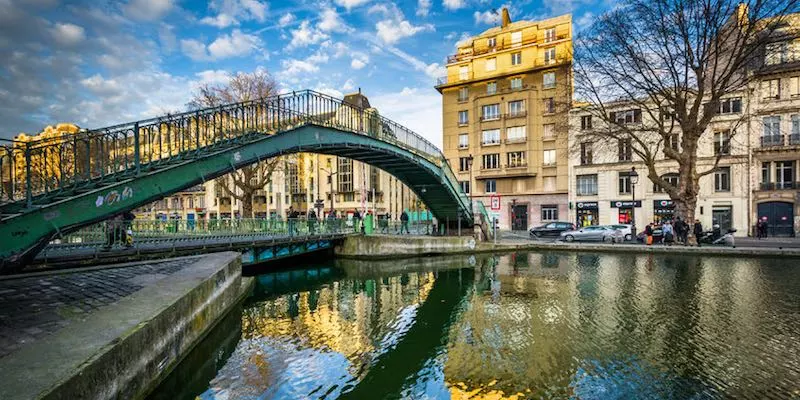
Did you know that you can take a slow boat ride on the canals built by the Napoleons and pass right underneath Place de la Bastille ? Napoleon Bonaparte ordered the construction of Canal St Martin and associated waterways. Half a century later his nephew, Napoleon III, modernized Paris, including sending part of this famous waterway underground.
You board a special canal boat in northeast Paris at Parc de la Villette , pass through a large artificial pond and then the boat enters a tunnel and passes right under Place de la Bastille before finally emerging into the Seine. (Some of the cruises go the other way, starting in the Seine and ending at Villette.) It's unusual, fun, and surprisingly relaxing!
Find Hotel Deals for Your Dates in Paris
Bastille – more history & lore.
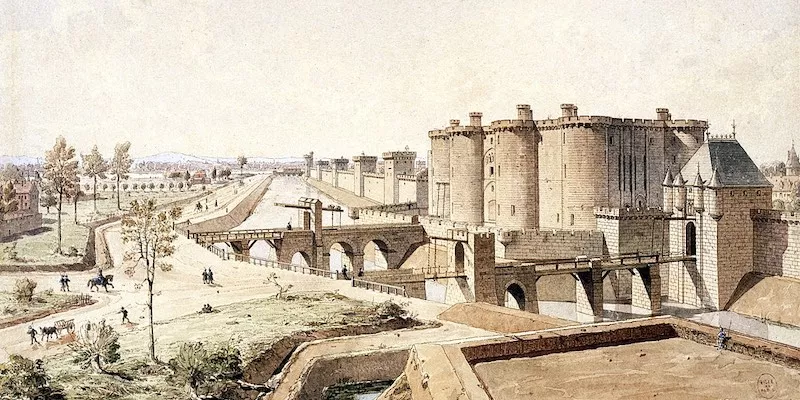
Not Intended as a Prison
Even though its claim to fame was as notorious prison, the Bastille was originally built as a fortress, a part of the city walls, to protect the city of Paris from the threat posed by the English armies during the Hundred Years' War. Work began in 1370.
A Nexus of French Conflict
Instead of protection from English troops, as was intended, the Bastille ended up being used by one side or the other during internal French conflicts, such as the wars between the Burgundians and the Armagnacs, and religious wars of the 16th century.
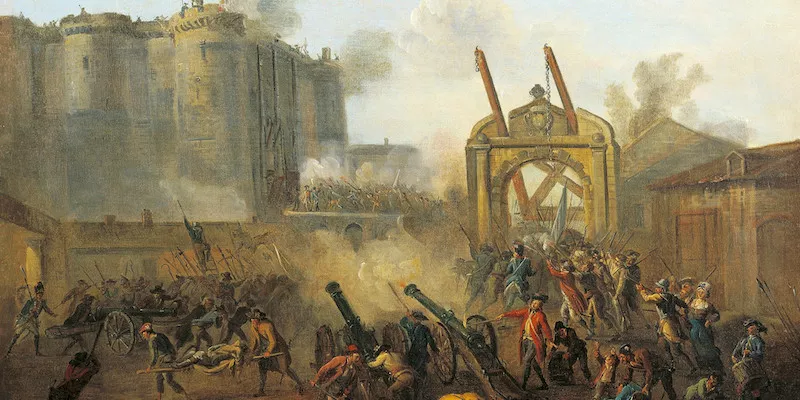
More Fortress Than Prison
It actually wasn't until 1659 , during the reign of Louis XIV, that the Bastille began to be used as a state penitentiary. It had been built to keep people out, not in, so it wan't the best prison ever. Most of the inmates were members of the French upper classes who disagreed with the Sun King.
A Model Fortification
When the Bastille was first constructed in the 14th century it was admired, and copied throughout Europe, as a modern, powerful fortification that pioneered such advances as four sets of drawbridges.
Delicious Activities in the Marais
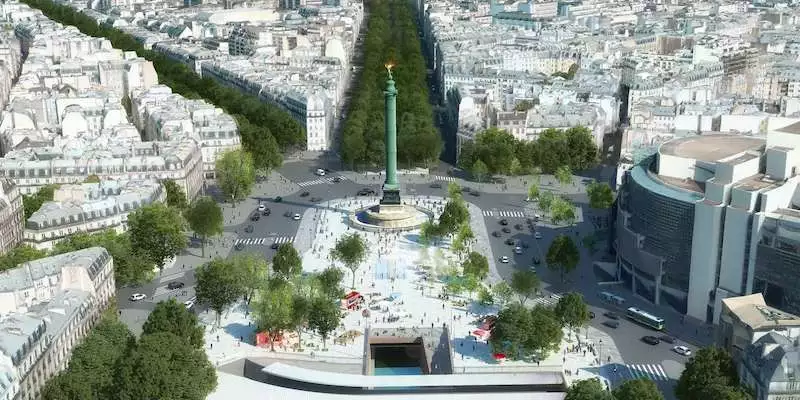
A Comfortable Jail
Contrary to popular belief, the conditions for prisoners in the Bastille were exceptional. The Marquis de Sade arrived with an elaborate wardrobe, artwork, tapestries, perfumes, servants, a small library, card games, and a selection of wine.
Its Destruction Took Months
The Bastille prison wasn't destroyed overnight, not even by the end of July 1789. It took planning by a revolutionary committee and months of debate to decide on the final plans to dismantle it. It wasn't until November 1789 that the prison was destroyed.
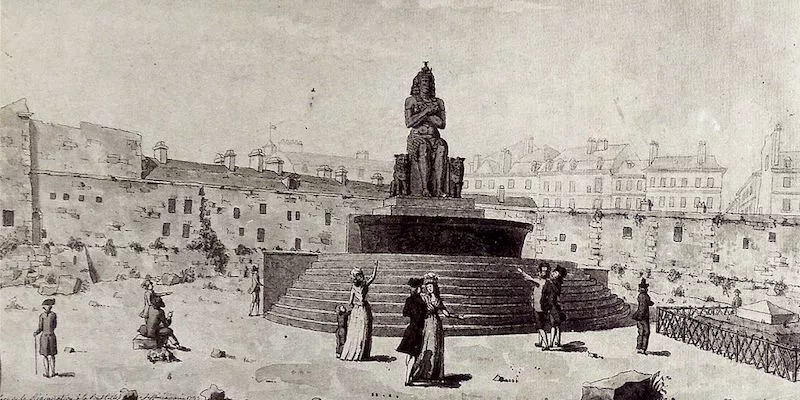
The Fountain of Isis
In 1793, five years after the initial revolutionary events, a fountain featuring a statue of Isis was built on the former site of the fortress/prison, while the square renamed the name of Place de la Bastille.
Wine, but No Torture
There is absolutely no evidence of torture or ill-treatment of prisoners at the Bastille. Remember the Marquis de Sade with his servants, library & wine collection? Torture? — just didn't happen.
Paris Planning Guides
Copyright © 2010-2023 Voconces Culinary Ltd, all rights reserved. Original photos © Mark Craft, all rights reserved.
- • April 2024 in Paris…
- • May 2024 in Paris…
- • June 2024 in Paris…
- • July 2024 in Paris…
- • August 2024 in Paris…
- • September 2024 in Paris…
- Paris Activities Month by Month
- Paris Olympics 2024
- Paris Events Calendar
- Museum Exhibitions Calendar
- Paris Ballet Calendar
- Paris Opera Calendar
- Christmas Day in Paris
- New Years Eve
- New Years Day in Paris
- Easter in Paris
- Valentines Day in Paris
- Bastille Day Celebrations
- Skip-the-Lines at the Eiffel Tower
- Visiting The Eiffel Tower
- Eiffel Tower Information
- See all…
- The Arc de Triomphe
- The Panthéon
- The Bastille
- Notre Dame Cathedral
- La Sainte Chapelle
- Sacre-Coeur Paris
- Chateau de Versailles
- Palais Garnier Opera House
- Hotel de Ville – The City Hall
- Get the Most from Your Visit
- Masterpieces of the Louvre
- Paintings of the Louvre
- Top 10 Van Goghs at d'Orsay
- Musée de l'Orangerie
- Centre Pompidou
- Musée Picasso
- Rodin Museum Paris
- Cluny Museum Paris
- Arts et Metiers
- Guimet Asian Arts Museum
- Galliera Fashion Museum
- Versailles the VIP Way
- Versailles History & Highlights
- D-Day Landing Beaches
- Monet's Gardens at Giverny
- Mont Saint-Michel
- Monet + Van Gogh
- VIP Private Day Trips
- 10 Ways to Skip the Lines
- 9 Most Romantic Things to Do
- 5 Top Activities In The Marais
- Lunch & Brunch Cruises
- Cruises with Extras!
- The 6 Best Evenings In Paris
- Moulin Rouge
- Paris at Night
- Hop-on, Open-Top Buses
- The 6 Best City Tours
- Private Tours of Paris
- Champagne & Shows
- Top 10 Walking Tours
- Mysterious Walking Tours
- Shangri-La Paris
- Hotel George V Paris
- The Royal Monceau
- Le Cinq Codet
- Peninsula Hotel Paris
- Hotel Le Burgundy
- See all …
- 10 Best 4-Star Hotels
- Top 3-Star Hotels
- Best Airport Hotels
- Latin Quarter Hotels
- Left Bank Hotels
- Romantic Paris Hotels
- Best 2-Star Hotels in Paris
- Ibis Hotels
- Les Hotels de Paris
- Best Western Hotels
- Saint-Germain-des-Prés
- Top 10 Food Experiences
- Paris Wine Tastings
- Chocolate Tours
- 10 Best Cheese Shops
- The Best Baguette in Paris
- Food Markets of Paris
- Le Jules Verne
- Jacques Faussat
- Restaurant Le Gabriel
- How to Choose a Restaurant
- The Best Paris Bars
- In the Marais
- On the Left Bank
- Historic Brasseries of Paris
- Michelin 3-Star Restaurants
- 6 Michelin-Star Restaurants
- See All…
- Best Paris Terraces
- Seine Dinner Cruise
- The Top 8 Tourist Attractions
- 5 Paris Itineraries
- Gardens & Parks
- Paris Hotels for Christmas?
- Best Restaurants in the 8th?
- Best Way To Visit Versailles?
- VIP Burgundy Wine Tour
- Burgundy Accommodations
- Napoleon's Paris
- Hemingway's Paris
- Medieval Paris
- 10 Tips For Visiting Paris
- 7 Vestiges of Roman Paris
- 13 Hidden Places In Paris
- Hidden Landmarks
- The Catacombs
- Pere Lachaise Cemetery
- Jardin des Tuileries
- Jardin des Plantes
- Palais Royal
- Rue des Barres in the Marais
- Waterfalls of Paris
- Arcades of Paris
- Airport Transfers
- Paris Airports
- Airport Taxis
- Train Travel From Paris
- Eurostar: London & Paris
- Paris Train Stations
- The Latin Quarter
- Saint-Germain-des-Pres
- Essential Facts for Visitors
- Taxes, Tipping & Etiquette
- What to Wear in Paris
- Maps of Paris
- The Paris Metro
- Paris Metro Tickets
- Paris Taxis
- Seine River Dinner Cruises
- Visiting Versailles
- Essential Day Trips
Marathon de Paris : parcours, circulation, favoris, conseils… Tout ce qu’il faut savoir sur la course
Le 47e marathon de Paris se déroule ce dimanche 7 avril. 54 000 coureurs et plusieurs centaines de milliers de spectateurs sont attendus sur les 42,195 km de la course à pied la plus populaire de France.

C’est tous les ans la même chose. Si, en lisant ces lignes, l’envie vous prend de participer au Marathon de Paris qui se court ce dimanche 7 avril entre les Champs-Élysées et l’avenue Foch, c’est trop tard. Il fallait se réveiller avant. La liste des engagés est fermée depuis l’automne 2023. C’est complet, archi-complet. Le marathon de Paris reste la course la plus populaire de France et, tôt ce dimanche matin, ils seront 54 000 coureurs à piaffer d’impatience dans les sas de départ.
54 000 inscrits, mais combien de partants ?
Selon les chiffres officiels, 54 000 personnes venues de plusieurs dizaines de pays sont donc inscrites. Un coureur sur trois au départ n’est pas Français : le marathon de Paris est dans le Top 10 des plus grands du monde et beaucoup veulent le faire au moins une fois. Tous les inscrits ne seront toutefois pas là : il y a environ 10 % de perdition en fonction de méforme, blessure et autres. Le marathon retrouve néanmoins durablement ses fréquentations d’avant Covid. L’an dernier, ils étaient 52 000 inscrits contre 45 000 en 2022.
Le record de partants tient depuis 2019, avant la pandémie : 49 155 partants pour 47 495 arrivants. En 1976 pour la première édition, il n’y avait eu que 150 pionniers. Parmi tous les partants, combien seront à l’arrivée ? Tous ou presque : 98 % des coureurs franchissent la ligne. 16 % courent en moins de 3h30, 54 % entre 3h30 et 4h30 et 30 % en plus de 4h30.
Le parcours, on ne change rien… ou presque
Pas de changement de parcours cette année. Il reprend au centimètre près celui de 2023 avec l’habituel départ en haut des Champs-Élysées. Un conseil aux débutants : le départ est en pente douce et gare à celui qui s’élance trop vite. N’oubliez pas la règle d’or : dans un marathon, tout se paye à un moment ou un autre, que ce soit la préparation, l’hydratation, l’alimentation ou un départ trop rapide.

Direction ensuite l’Opéra, la place de la Bastille, le bois de Vincennes, un retour à la Bastille puis la redoutable voie Georges-Pompidou le long de la Seine avec ses tunnels et ses faux plats. Il sera temps alors de défier le fameux « mur » des 30 km avec vue sur la tour Eiffel. Il n’est pas une légende urbaine. Le coureur débutant le prend en plein dans le nez et les 10 000 derniers mètres à travers le bois de Boulogne peuvent devenir une souffrance avant la délivrance avenue Foch et l’arrivée.
À noter quand même une légère modification décidée ce vendredi à cause de la crue de la Seine. « Du tunnel Henri IV jusqu’au tunnel des Tuileries, rendu inaccessible par la crue, le passage des concurrents se fera sur les quais hauts au lieu des quais bas. Le nouveau parcours ne présentera pas de différence avec le parcours initialement prévu », a précisé l’organisation dans un communiqué.
Des départs de 7h55 à 10h50
54 000 coureurs attendus au départ, mais il n’y a pas qu’un seul départ. Selon leurs aptitudes, les coureurs s’élancent par sas et par couleur de dossard pour éviter l’engorgement. Le premier départ, celui des handi fauteuil est programmé à 7h55. Les Élite femmes partent juste après, les Élite hommes à 8h15 pour une arrivée programmée avenue Foch vers 10h20. Le dernier départ pour les coureurs en 4h30 est prévu à 10h50.
Un conseil là encore : l’attente peut-être longue et le pire est de faire du surplace en épuisant toute son énergie avant même la première foulée. Couvrez-vous aussi : Météo France annonce de douces températures dans la matinée, autour de 14 °C mais aussi de la pluie qui rendra la chaussée et les bandes blanches glissantes. Méfiance.
Attention aux interdictions de circulation
De samedi matin à dimanche soir, les riverains doivent aussi tenir compte de la route. Voici les principales interdictions pour éviter la fourrière : avenue Foch, entre la place du Maréchal de Lattre de Tassigne et la place Charles-de-Gaulle. De 3 heures à 14 heures dimanche : avenue des Champs-Élysées, entre la place Charles-de-Gaulle (non comprise) et le rond-point des Champs-Elysées-Marcel Dassault (non compris).
De 7 heures à 12h30 : avenue des Champs-Élysées, entre le rond-point des Champs Elysées-Marcel Dassault (compris) et la place de la Concorde, place de la Concorde, rue de Rivoli, place Vendôme, rue de la Paix, Place de l’Opéra, rue Auber ; Jusqu’à 15 heures : avenue Daumesnil, esplanade Saint-Louis.
Jusqu’à 15h30 : place de la Bastille, portée Dorée, rue de Charenton, voie Georges-Pompidou, avenue de New York en totalité, entre le pont de l’Alma et le pont d’Iéna, avenue du Président Kennedy, boulevard Exelmans, rue Molitor ; Jusqu’à 17 heures : à pont Garigliano. ; Jusqu’à 17h30 : boulevard d’Auteuil, place du Trocadéro. Le stationnement est aussi interdit sur l’entièreté du parcours. À noter, aussi, que la bretelle de sortie n° 1 de l’autoroute A13 dans le sens Province Paris est neutralisée de 7 heures à 17 heures.
Qui sont les favoris ?
Les trois derniers vainqueurs sont au départ. La course se jouera une fois encore entre Kényans et Éthiopiens. Les deux nations se partagent 19 succès sur les 20 dernières éditions (11 pour le Kenya, 8 pour l’Éthiopie). Vainqueur l’an dernier en 2h07′15′', l’Éthiopien Gisealew Ayana, 21 ans, tente un doublé que seuls le Britannique Steve Brace (1989 et 1990) et le Kényan Paul Lonyangata (2017 et 2018) ont réussi. Pour y parvenir, il a affaire à une rude concurrence. Sept coureurs se présentent avec un temps de référence inférieur à 2h05′. Vainqueur en 2021 et détenteur du record de l’épreuve en 2h04′21′', l’expérimenté Kényan Elisha Rotich (33 ans) fait son retour sur la distance après deux ans loin du circuit. Il est accompagné de l’Éthiopien Deso Gelmisa, vainqueur dans les rues de Paris en 2022 et l’an dernier à Tokyo.
Découvre une partie des élites qui fouleront, avant toi, le parcours #SchneiderElectric #ParisMarathon ! 🙌 Discover some of the elite who will be running the #SchneiderElectric #ParisMarathon course before you! 🙌 pic.twitter.com/xjj2ihAxRg — Schneider Electric Marathon de Paris (@parismarathon) March 29, 2024
Le Japonais Yuki Kawauchi (2h07′07′' en 2021) tentera de se faire une place au milieu des coureurs africains. Côté tricolore, Freddy Guimard, 16e l’an dernier, affiche le meilleur temps d’engagement des coureurs français : 2h13′56′', réalisé à Valence en décembre dernier. Chez les dames, la victoire ne devrait pas échapper à une coureuse éthiopienne.

Pour soutenir votre journalisme local, abonnez-vous !
Pourquoi voyez-vous ce message ?
Vous avez choisi de refuser le dépôt de cookies, vous pouvez à tout moment modifier votre choix, ici .
Le contenu de ce site est le fruit du travail de journalistes qui vous apportent chaque jour une information locale de qualité, fiable, complète, et des services en ligne innovants. Ce travail s’appuie sur les revenus complémentaires de la publicité et de l’abonnement.
Déjà abonné ?
Connectez-vous ou créez un compte
Pour pouvoir enregistrer un article, un compte est nécessaire.
- Annecy / Rumilly / Les Aravis
- Annonay / Nord Ardèche
- Aubenas / Privas / Vallée du Rhône
- Bourgoin-Jallieu / Nord-Dauphiné
- Chambéry / Aix-les-Bains
- Edition Provençale
- Grand Genève / Chablais / Ain
- Grenoble / Agglomération
- Grésivaudan / Oisans
- Hautes-Alpes / Alpes de Haute-Provence
- La Tour-du-Pin / Nord-Dauphiné
- Mont-Blanc / Arve
- Montélimar / Drôme Provençale
- Romans / Nord Drôme
- Tarentaise / Maurienne
- Valence / Rhône Crussol / Vallée de la Drôme
- Vienne / Roussillon
- Voiron / Saint-Marcellin
- Newsletters
- Libra Memoria

Grenoble et son agglomération
lun. 08/04/2024
- Activer JavaScript dans votre navigateur pour accéder à l'inscription sur notre site
Si vous voyez ce champ, ne le remplissez pas
Le Dauphiné Libéré, en tant que responsable de traitement, recueille dans ce formulaire des informations qui sont enregistrées dans un fichier informatisé par son Service Relations Clients, la finalité étant d’assurer la création et la gestion de votre compte, ainsi que des abonnements et autres services souscrits. Si vous y avez consenti, ces données peuvent également être utilisées pour l’envoi de newsletters et/ou d’offres promotionnelles par Le Dauphiné Libéré, les sociétés qui lui sont affiliées et/ou ses partenaires commerciaux. Vous pouvez exercer en permanence vos droits d’accès, rectification, effacement, limitation, opposition, retirer votre consentement et/ou pour toute question relative au traitement de vos données à caractère personnel en contactant [email protected] ou consulter les liens suivants : Protection des données , CGU du site et Contact . Le Délégué à la Protection des Données personnelles ( [email protected] ) est en copie de toute demande relative à vos informations personnelles.
- Dans un article
- Dans ma ville
- Un exercice d’évacuation du téléphérique de la Bastille ce lundi soir
- Les grandes énigmes
Grenoble Un exercice d’évacuation du téléphérique de la Bastille ce lundi soir
Si ce lundi soir vous apercevez des personnes se faire évacuer du téléphérique de la Bastille en pleine nuit, pas de panique, ce n’est que dans le cadre d’un exercice.

Chaque année, la Régie du téléphérique, en partenariat avec le Grimp 38, pompiers spécialisés dans les secours en milieu périlleux, s’entraîne à évacuer des personnes du téléphérique dans un cadre défavorable, à savoir de nuit et au-dessus de l’Isère, impliquant la présence de la brigade fluviale des pompiers.
L’exercice se déroulera donc ce lundi 8 avril à partir de 20 heures. Les cabines seront occupées par des pompiers et des sauveteurs mais aussi du personnel du téléphérique ou des personnes qui étaient sur liste d’attente pour participer à cette opération spectaculaire l’an dernier. En principe, le dernier participant aura été évacué à 23 h 30.
- Grenoble-bassin
- Edition Grenoble / Agglomération
- Ligue des Champions
- Europa League
- Europa Conference League
- Premier League
- JO Paris 2024
- Sports de combat
- Coupe de France
- Trophées des Champions
- Barrages Ligue 1 - Ligue 2
- Barrages Ligue 2 - National
- Championship
- Community Shield
- Carabao Cup
- Supercoupe d'Espagne
- Copa del Rey
- Supercoupe d'Italie
- Coupe d'Italie
- Supercoupe d'Allemagne
- Coupe d'Allemagne
- Liga Portugal
- Supercoupe Portugal
- Coupe du Portugal
- Coupe de la Ligue du Portugal
- Ligue des Champions (F)
- Coupe du Monde (F)
- Coupe du Monde 2022
- Supercoupe d'Europe
- Équipe de France
- Qualifs Coupe du Monde
- Qualifs Euro
- Ligue des Nations
- Copa America
- Matchs amicaux internationaux
- Youth League
- Mondial des Clubs
- Championnat des Pays-Bas
- Scottish Premiership
- Super Lig Turquie
- Jupiler Pro League
- Super League Suisse
- Copa Libertadores
- Copa Sudamericana
- Chinese Super League
- Gallagher Premiership
- Champions Cup
- Challenge Cup
- VI Nations (H)
- VI Nations (F)
- Tests matchs
- Coupe du monde (H/F)
- XV de France
- Super Rugby
- Betclic Elite
- FIBA Ligue des champions
- FIBA Eurocoupe
- Championnats du monde (H/F)
- Championnats d'Europe (H/F)
- Open d'Australie
- Roland Garros
- Coupe Davis
- Rolex Paris Masters
- Masters Indian Wells
- Masters Miami
- Masters Monte-Carlo
- Masters Madrid
- Masters Rome
- Masters Montréal
- Masters Cincinnati
- Masters Shanghai
- Tennis de table
- Tour de France
- Championnats du Monde
- UCI World Tour
- Championnats d'Europe
- Liqui Moly StarLigue
- D1 Féminine
- Championnats de France
- Ligue de diamant
- CEV Ligue des Champions
- Ligue des nations
- Jeux Olympiques
- Sports Extrêmes
- Super Moscato Show
- Rothen s'enflamme
- Intégrale Foot
- RMC Football Show
- RMC Sport Show
- Intégrale Sport
- Les Grandes Gueules du Sport
- Les courses RMC
- Les Paris RMC
- RMC Poker Show
- Double contact
- Story RMC Sport
- Les Courses RMC
- Comparateur
- Chaîne RMC Sport
- Newsletters
- Sport et société
- Devenez annonceur
PSG-Barça, J-2: les Catalans trollent à nouveau les Parisiens avec la Tour Eiffel
Une fois encore, le FC Barcelone utilise ses réseaux sociaux pour faire monter la pression. Ce mercredi (21h sur RMC Sport 1), le club catalan se déplacera à Paris pour un quart de finale aller de Ligue des champions. Avant ce rendez-vous face au PSG, les Catalans ont "trollé" les Parisiens.
A l'aide d'une IA, le Barça a publié une vidéo d'un ballon dirigeable, aux couleurs du club et avec l'inscription "Sempre Barça", qui aurait déployé le logo à proximité de la Tour Eiffel. Mais cette vidéo est un montage et ce n'est pas la première fois que le club blaugrana utilise une telle technologie.
>> PSG-Barça: toutes les infos avant le quart aller
De nombreuses provocations
En décembre dernier, en marge de l'arrivée de l'attaquant Vitor Roque, le Barça avait annoncé le transfert par le biais d'un tigre - le surnom du joueur - sur la pelouse du stade. Ces derniers jours, dans la même veine, le Barça avait effectué un post sur les réseaux sociaux où l’on voyait le célèbre tableau la Joconde, conservé au musée du Louvre, vêtu d’un maillot catalan.
Depuis l'annonce du tirage au sort, le Barça multiplie les provocations à l'encontre du PSG, à l'image du souvenir de la "Remontada" de 2017. De son côté, Robert Lewandowski a lui pronostiqué que son équipe jouera les demi-finales de la Ligue des champions.
- DIRECT. PSG-Barça (J-2): Mukiele forfait, Barcola postule
PSG-Barça J-2: l'arbitre Anthony Taylor, porte-bonheur de Paris, au sifflet
Psg-barça: jusqu'à 5500 euros... le prix des places à la revente explose.
Victorieux de Las Palmas (1-0) le 30 mars en Liga, le Barça est sur une bonne dynamique avant cette confrontation européenne. De son côté, le PSG a été tenu en échec (1-1) par Clermont samedi. Le quart de finale retour aura lieu mardi 16 avril prochain, au stade olympique de Montjuïc où les Catalans évoluent cette saison en marge des travaux du Camp Nou.
FC Barcelone
Psg-barça: la "remontada" était-elle finalement une malédiction pour le barça, top articles.

Scène folle en Supercoupe de Turquie: Fenerbahçe quitte le terrain après trois minutes, Galatasaray décide d’affronter… ses remplaçants
Serie a : gros accrochage entre guendouzi et dybala, qui montre son protège-tibia... avec la coupe du monde 2022, psg-clermont: luis enrique avec des oreillettes pendant le match, l'image fait réagir, "que le psg joue son rôle jusqu'au bout": la demande de la ligue qui a fait monter la colère du havre vis à vis du psg, mma: "me mettre à l'abri financièrement", l'honnêteté de parnasse sur le choix de sa prochaine organisation.
Blanco, Maso, Albaladejo... Le rugby français rend hommage à la légende André Boniface
Professor T star Frances de la Tour's life away from cameras: From famous brother to actor ex-husband
Frances shares two children with her ex-husband, playwright and actor tom kempinski.
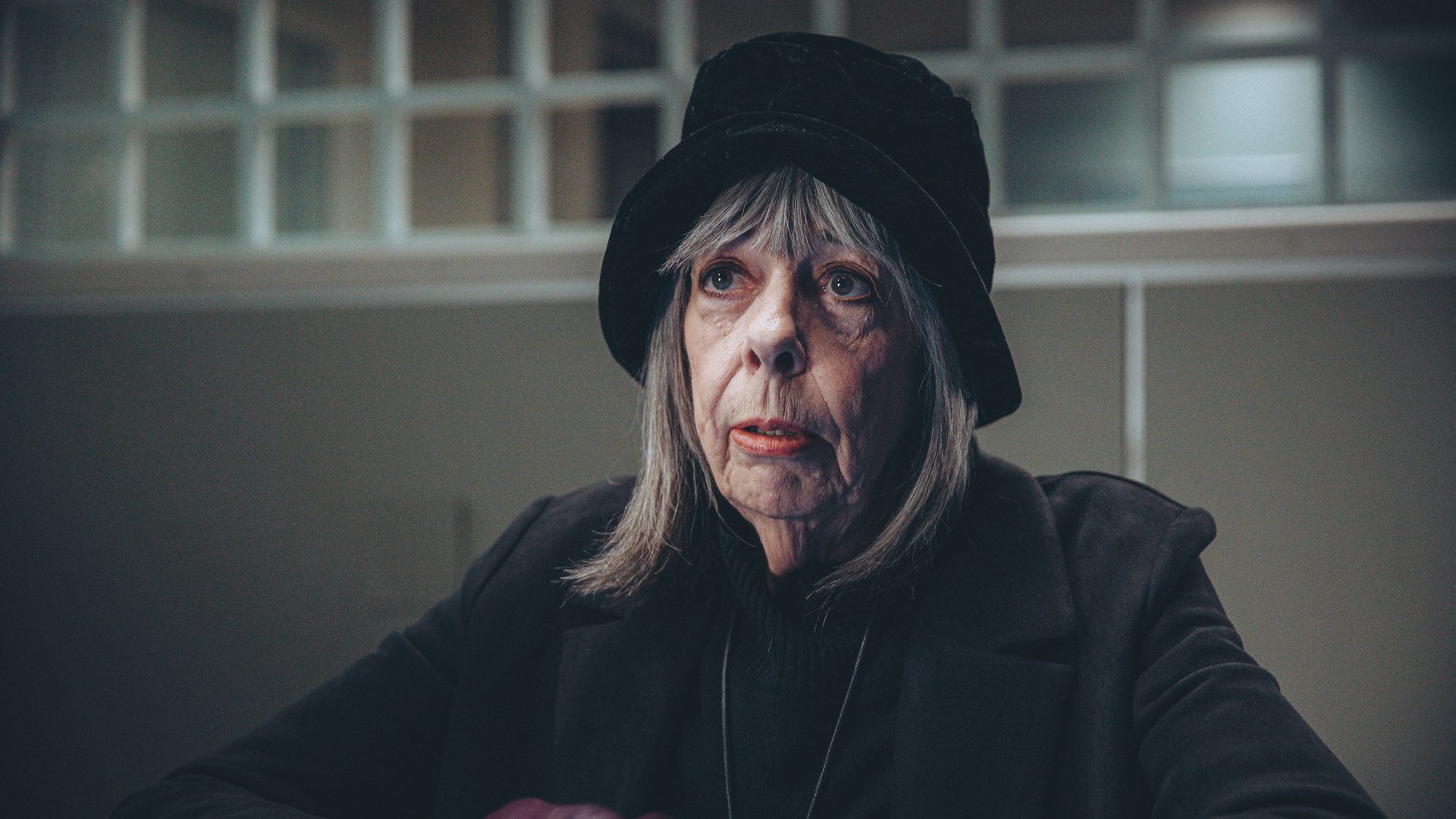
Frances de la Tour reprises her role as Jasper's overbearing mother Adelaide Tempest in the brand new series of ITV's hit crime drama, Professor T . The three-time Olivier Award winner has been a regular fixture on our screens over the years thanks to her illustrious film career.
Viewers will know Frances for her roles in The Lady in the Van, Enola Holmes, and of course for her portrayal of Madame Olympe Maxime in the Harry Potter film series. But what about her life away from the cameras? Here's all you need to know, from her famous brother to her actor ex-husband…
Frances de la Tour's early life and famous brother
Frances was born on 30 July 1944 in Hertfordshire to parents Moyra and Charles de la Tour.
After studying at Drama Centre London, Frances joined the Royal Shakespeare Company and subsequently landed roles in a variety of plays. What followed was an impressive stage career, with Frances starring in many major productions, including in Edward Albee's Three Tall Women alongside Maggie Smith, and The History Boys at the Royal National Thetare and later on Broadway.

As for her on-screen credits, Frances is perhaps best known for her role in the 70s' show Rising Damp , as well as for playing Emma Porlock in the drama series Cold Lazarus , headmistress Margaret Baron in BBC sitcom Big School and Violet Crosby in the ITV comedy Vicious.
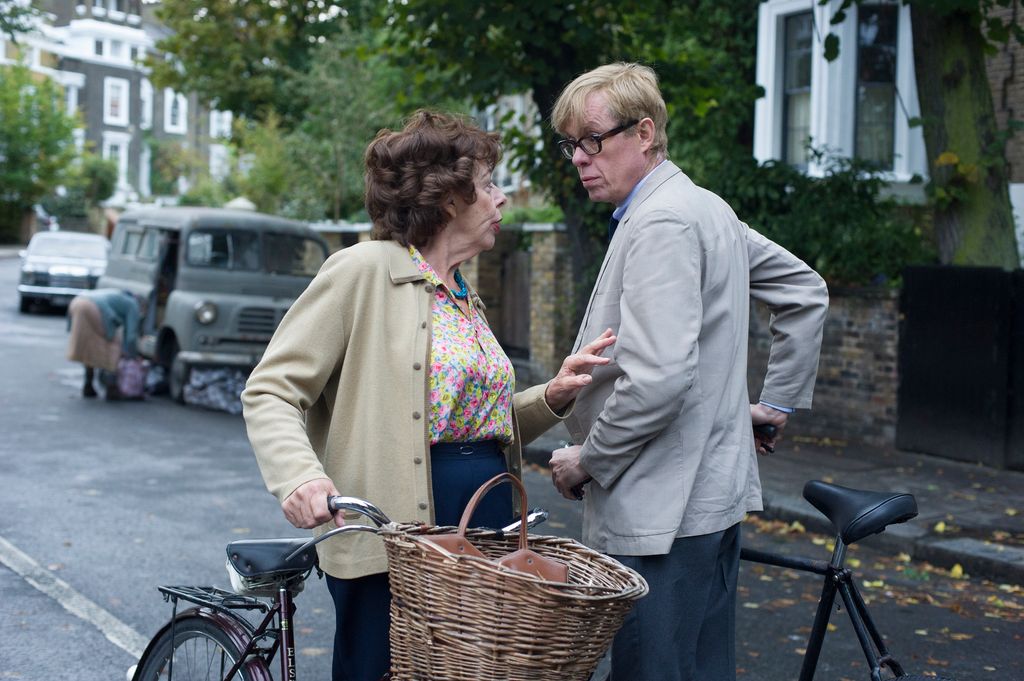
You may also like
While Frances, now 79, grew up to be a film star, she's not the only famous face in her family. Her brother is actor and screenwriter Andy de la Tour. He's perhaps best known for appearing in Notting Hill, and Roman Polanski's Oliver Twist.
He's also landed roles in The Young Ones, Holby City, Casualty, and Doctors.
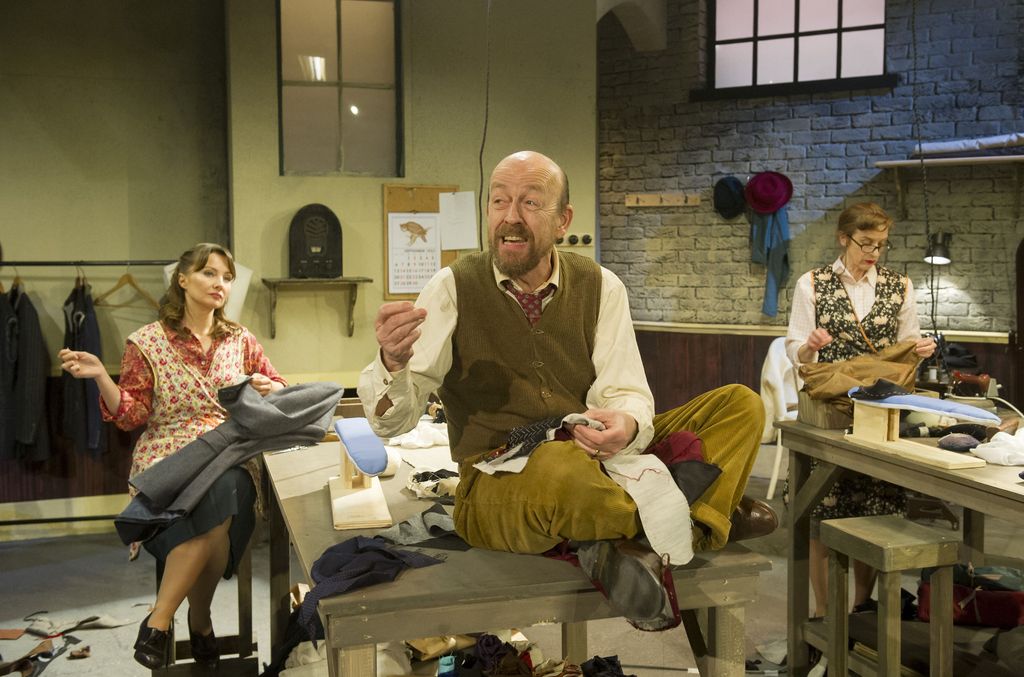
As a television writer, his credits include Lovejoy, Boon, Peak Practice, The Vet, and Kavanagh QC. He's married to BAFTA-winning actress Susan Wooldridge, who is known for her roles in Hope and Glory, and All Quiet on the Preston Front.
Frances' home life and famous ex-husband
Frances was previously married to playwright and actor Tom Kempinski, who passed away in August 2023. He's best known for his 1980 play Duet for One , for which Frances won the Olivier for Best Actress. It was later turned into a film starring Julie Andrews and Alan Bates.

Frances and Tom were together for ten years until 1982, during which time they welcomed two children, Josh and Tamasin.
Frances is fairly private about her personal life, and so it's not known whether she's currently in a relationship.
- Celebrity Families
More TV and Film

Will Smith reflects on 'eternal impact' of Jackie Chan in helping 'raise' son Jaden in 70th birthday tribute

Julia Stiles: where is she now? All about her family life and surprise third baby

Is Alec Baldwin headed to reality TV with Hilaria and their 7 kids? RHOBH's Kyle Richards weighs in

Passenger viewers asking the same question about 'confusing' ITV thriller after episode two

Passenger: All you need to know about ITV drama from star-studded cast to plot details, and release schedule

The Dry series 2: All we know about ITV comedy-drama starring Roisin Gallagher

Unforgotten begins filming on season 6 as The Split and The Crown stars join cast – get series details

Lorraine Kelly shares opinion on Princess Kate's 'crazy' photo drama - 'This isn't going away'
I'm a celebrity star nigel farage's private home life with wife and four children, owen warner: meet i'm a celebrity star's lookalike model brother louie, downton abbey will not return to itv – details, celebrity big brother: how much are the stars getting paid.

IMAGES
COMMENTS
BASTILLE OPERA. Access through the artists and staff entry 120 rue de Lyon 75012 Paris. Access to the Bastille Opera. Metro: Bastille station (lines 1, 5 and 8, exit n°4 r. de Lyon) RER: Gare de Lyon station (line A) Bus: lines 29, 69, 76, 86, 87, 91 Car park: Q-Park Opéra Bastille - 34 rue de Lyon 75012 Paris Reserve your parking space
1. Place de la Bastille. Located: at Metro Bastille in the 11th arrondissement of Paris. In the east end of Paris, is the Place de la bastille where once stood the ancient fortress prison called Bastille Saint-Antoine dating back to the 14th century. Around the time of the Revolution, the former royal fort that had been converted into a prison.
This French Revolution Walking Tour starts at Place de la Bastille (Paris 11), one of the main French Revolution sites in Paris. Current Place de la Bastille was established to commemorate those revolutionary days and to celebrate the victory of democracy over tyranny.. Bastille Square was until the 18th century the location of the infamous fortress turned into a prison.
The Place de la Bastille is a large public square located on the historic site of the Bastille Prison, when the storming of it in 1789 sparked the French Revolution. It's ideally located next to a busy main street filled with shops, restaurants, patisseries, and plenty of traffic, both pedestrian and vehicles. Read more.
Place de la Bastille is a historic square in Paris that bursts with attractions and sights to explore. This square marks an important moment in France's history on the former Bastille Prison site - when the prison storming on July 14, 1789, sparked the French Revolution.
Private Bastille and Aligre market walking tour with the highline. 16. Explore gourmet shops and bustling food markets in Paris on this 3-hour walking tour of the Bastille district. Follow your guide from the Place de la Bastille to the Port de l'Arsenal, where the Canal St-Martin joins the Seine River.
The famous Colonne de Juillet, located in the centre of the Place de la Bastille, reopened to visitors in October 2021 (visit of the lower parts of the monument; guided tour only and only on weekends). The 3D Timecope terminal (located on the corner of boulevard Richard Lenoir) makes for a unique experience. It has a 360° view, its height can ...
Discover and book Bastille's Architecture & Artisans Self-Guided Walking Tour on Tripadvisor. Help. If you have questions about this tour or need help making your booking, we'd be happy to help. Just call the number below and reference the product code: 225279P15. +1 855 275 5071.
The tour starts on Place de la Bastille, near the Opera. Start time Opening hours. 6/11/2020 - 3/6/2025. Monday - Sunday : 07:00 AM - 10:00 PM. End point. 1 Coulée Verte René-Dumont, 75012 Paris, France. Open in Google Maps. What To Expect. 1. Place de la Bastille. 5 minutes • Admission Ticket Free. 2.
Guided tour of the Opera Bastille. During 90 minutes, you and your group will be immersed into the backstage world of this modern theatre, whose dimensions are impressive, created in 1989 by Carlos Ott. ... Opéra Bastille. Place de la Bastille 75012 Paris. Arop The Friends of the Paris Opera. Subscribe to newsletter. Download the application ...
Place de la Bastille: Our most recommended tours and activities. 1. Paris: Cruise on the Saint-Martin Canal and the Seine River. Explore the French capital on a sightseeing cruise along the River Seine and continue along Canal Saint-Martin. See Parisian landmarks, including Notre Dame and the Hotel du Nord before sailing into the underground vault.
The Bastille, Porte and Faubourg St. Antoine, ca. 16th-17th cent. The Bastille {bah-steel'} was a prison in Paris, known formally as Bastille Saint-Antoine — Number 232, rue Saint-Antoine. The storming of the Bastille on July 14, 1789 marked the beginning of the French Revolution. The event was commemorated one year later by the Fête de la ...
At the counters of the Opera Bastille: from 2:30 p.m to 6:30 p.m (130 rue de Lyon - 75012 Paris) from Monday to Saturday (except public holidays) and one hour before the beginning of the performances on Sundays and holidays.
Shared with the 4th, 11th and 12th arrondissements, the Place de la Bastille is one of Paris ' most famous squares, owing its name to the infamous fortress that once stood there. The vast square (215m by 150m) was the scene of many revolutions which had significant consequences on the history of France: 1789, 1830 and 1848.
The Colonne de Juillet, also known as the July Column, is a monument located in the centre of the Place de la Bastille. The column was built in memory of those who perished during the 1830 Revolution. The column is topped with a golden "Spirit of Liberty'', which became an icon of revolutions to follow. Stroll on an Above-Ground Promenade.
The Place de la Bastille (French pronunciation: [plas də la bastij]) is a square in Paris where the Bastille prison once stood, until the storming of the Bastille and its subsequent physical destruction between 14 July 1789 and 14 July 1790 during the French Revolution.No vestige of the prison remains. The square straddles 3 arrondissements of Paris, namely the 4th, 11th and 12th.
The Place de la Bastille is a popular rallying point today for disgruntled Parisian protest marchers. The Colonne de Juillet now stands in its place, a tribute to those who died in the 1830 and 1848 Paris uprisings, with a crypt below containing their remains and a golden statue of Liberté at the top. To see the outline of where La Bastille ...
La tour de la Liberté est l'une des tours de la Bastille, construite de 1370 à 1382 par Hugues Aubriot pour le compte du roi Charles V. Elle se situe sur le côté occidental de la forteresse, entre la tour du Puits au nord (qui forme le coin nord-ouest de l'édifice) et la tour de la Bertaudière au sud. Comme les autres tours, elle est de ...
3. Place de la Bastille . If you're staying in Bastille in Paris (or even just passing through, odds are that you'll come across Place de la Bastille. Once home to the infamous Bastille Prison, which was demolished after the French Revolution, the Place de la Bastille is now a central square and roundabout with a market on the weekends.
Place de la Bastille vue depuis les marches de l' Opéra ; à droite la colonne de Juillet. La place de la Bastille est une place de Paris, lieu symbolique de la Révolution française, où l'ancienne forteresse de la Bastille fut détruite entre le 14 juillet 1789 et le 14 juillet 1790 .
Reconstitution de La Bastille médiévale par Theodor Josef Hubert Hoffbauer. Le premier témoignage écrit sur la prison sont les pseudo-mémoires d'un calviniste, Constantin de Renneville, qui donne une vision noire de la Bastille et son arbitraire, l'opposant à la tour de Londres [26].
The Bastille was occasionally used as a prison during the reign of Louis XI. During the turmoil of the Wars of Religion, it was used as a prison by some of the most influential figures in the kingdom, including François de Montmorency (1574-1575), Charles d'Angoulême (1604-1616) and the Prince de Condé (1616-1619).. Under the rule of the League, the Bastille housed the writer Montaigne (1588).
The column you see today in the centre of Place de la Bastille has nothing to do with the French Revolution of 1789. The Colonne de Juillet was erected at the former location of the Bastille prison (today the juncture of the 4th, 11th, and 12th Arrondissements) as a monument to another revolution that took place in 1830. In this so-called July Revolution, which lasted only three days, the ...
Il sera temps alors de défier le fameux « mur » des 30 km avec vue sur la tour Eiffel. Il n'est pas une légende urbaine. ... Jusqu'à 15h30 : place de la Bastille, portée Dorée, rue de ...
L'exercice se déroulera donc ce lundi 8 avril à partir de 20 heures. Les cabines seront occupées par des pompiers et des sauveteurs mais aussi du personnel du téléphérique ou des personnes ...
La edad es simplemente un número. Novak Djokovic y Rohan Bopanna siguen demostrándolo día a día en el ATP Tour. Este domingo, Novak Djokovic, que cumplirá 37 años en mayo, superó a Roger Federer como No. 1 más veterano en la historia del PIF ATP Rankings. Bopanna, a sus 44 años, ostenta ese estatus en el PIF ATP Doubles Rankings.
Ce lundi, à deux jours du quart de finale aller de Ligue des champions entre le PSG et le FC Barcelone (mercredi à 21h, sur RMC Sport 1), le club catalan a effectué un nouveau post provocateur ...
Frances de la Tour's early life and famous brother. Frances was born on 30 July 1944 in Hertfordshire to parents Moyra and Charles de la Tour. After studying at Drama Centre London, Frances joined ...